Highlyselective human perception leadsto inconsistent behaviour whenfacingrisk

How can OSHprofessionals teach



colleaguesintheworkplace to distinguish real danger?






































Highlyselective human perception leadsto inconsistent behaviour whenfacingrisk

How can OSHprofessionals teach



colleaguesintheworkplace to distinguish real danger?
































































































THE KNOWLEDGE
























Making the grade with IOSH membership


THE PRACTICE Negative reinforcement: learning from mistakes













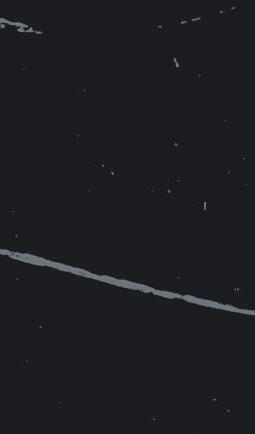
















THE BUSINESS A world free from modern slavery
THE EVIDENCE The gig economy and rider behaviour

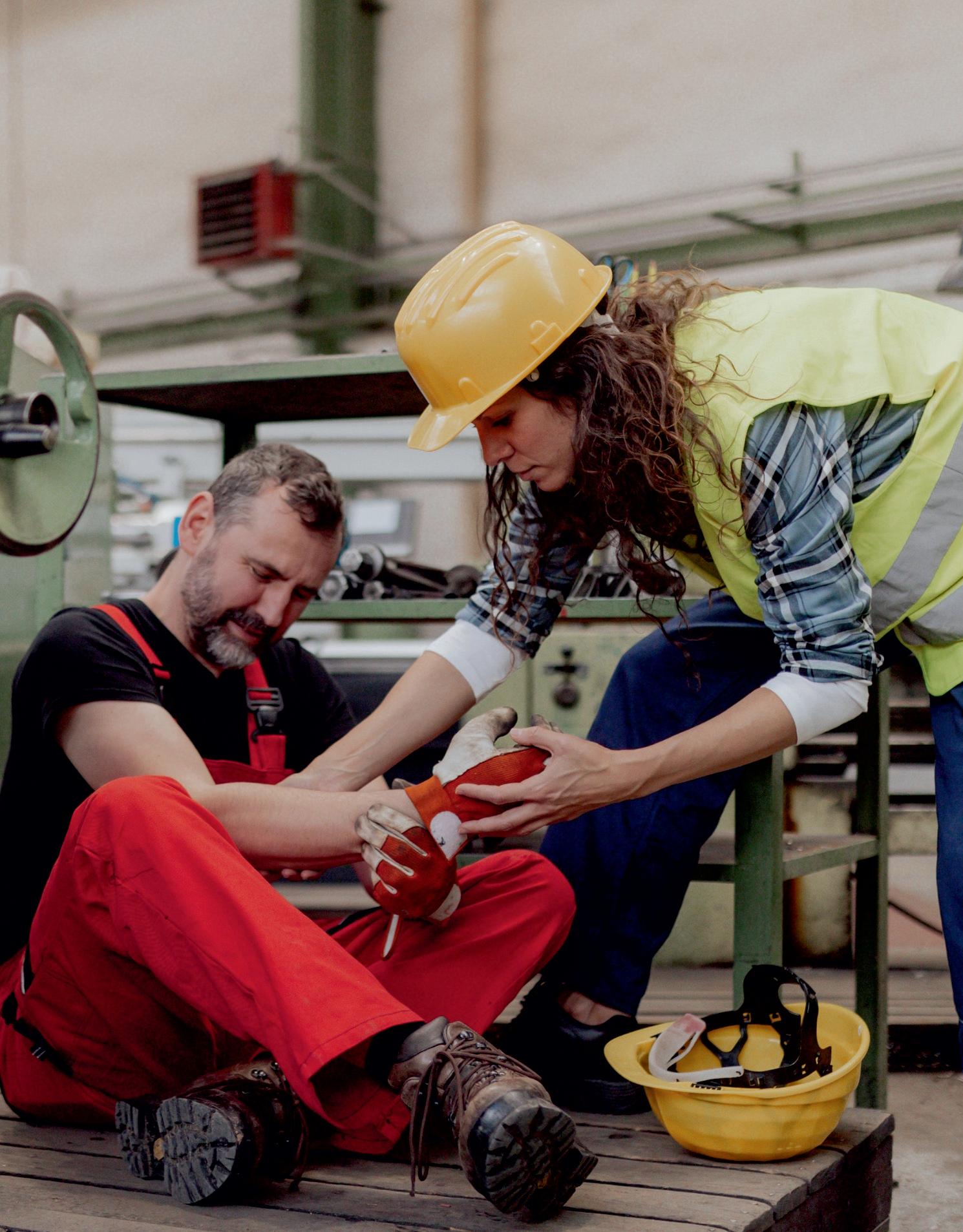
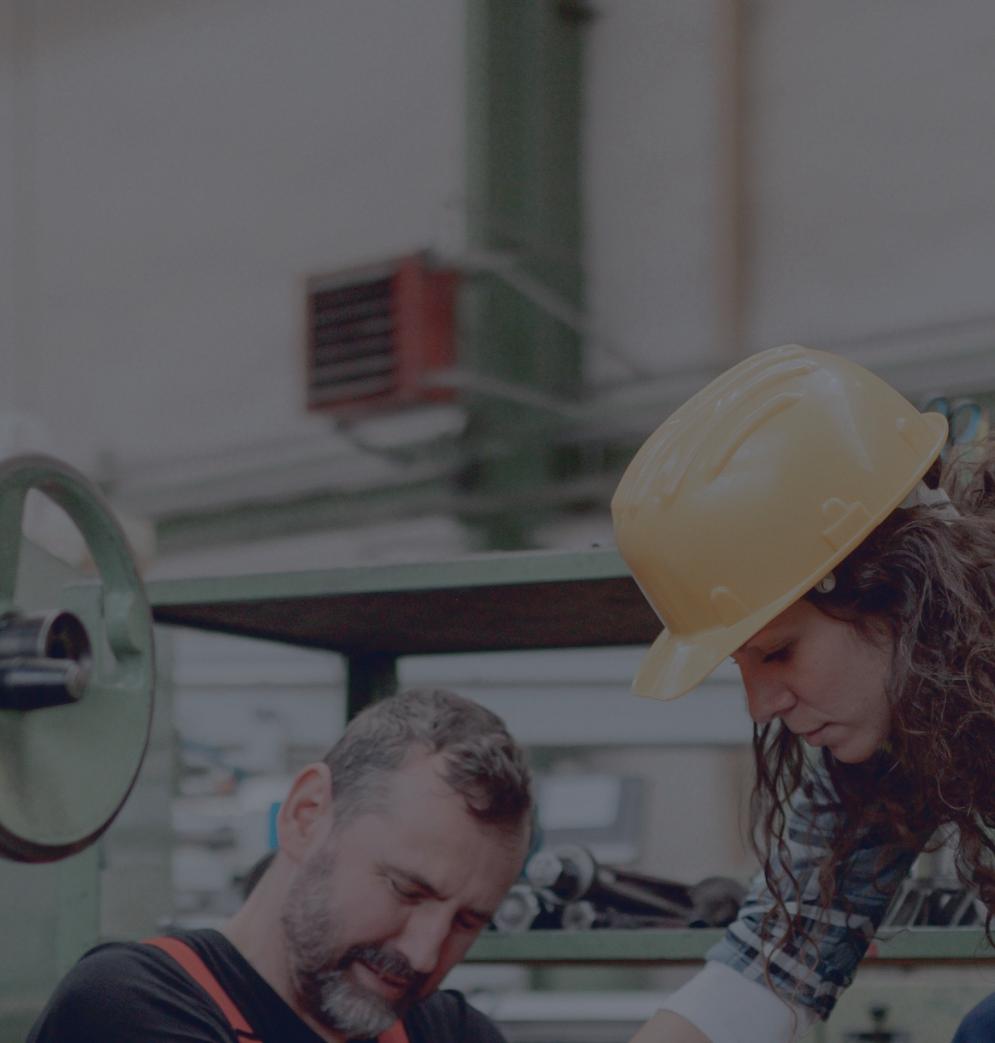




































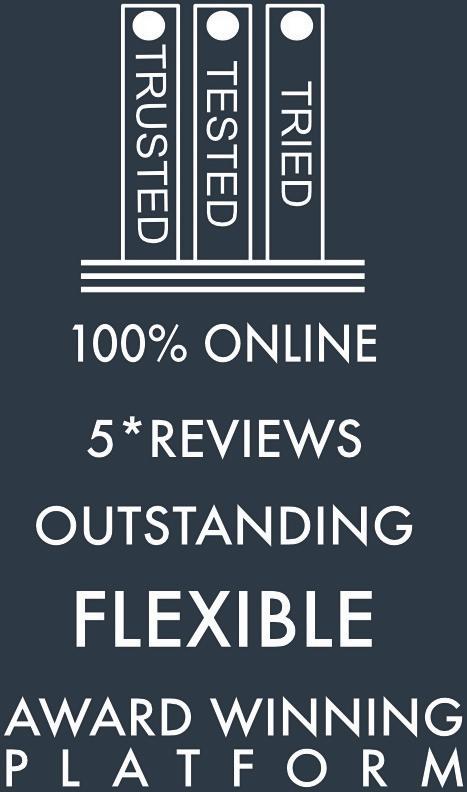



The Institution of Occupational Safety and Health (IOSH) is the world’s leading professional body for people responsible for safety and health in the workplace.
Published by Redactive Publishing Ltd
9 Dallington Street, London, EC1V 0LN
EDITORS
Emma Godfrey / Joanne Perry joanne.perry@ioshmagazine.com
DEPUTY EDITOR
Alex Lacey
CONTENT SUB-EDITORS

James Hundleby, Amy Beveridge
DIGITAL EDITOR
Kellie Mundell kellie.mundell@ioshmagazine.com

DESIGNER
Craig Bowyer
PICTURERESEARCHER

Claire Echavarry

ADVERTISING
Display sales +44 (0) 20 7880 7613 ioshdisplay@redactive.co.uk
Recruitment sales +44 (0) 20 7880 7662 ioshjobs@redactive.co.uk
PRODUCTION
Rachel Young +44 (0) 20 7880 6209 rachel.young@redactive.co.uk
PUBLISHINGDIRECTOR
Aaron Nicholls
Redactive aims to provide authoritative and accurate information at all times. Its publications are, however, for guidance only and are not an official information source.
The inclusion of advertisements and inserts within IOSH magazine and ioshmagazine.com does not constitute an endorsement of the organisation or its products/ services by IOSH or Redactive. All advertisements must adhere to the British Code of Advertising Practice. All rights reserved. No part of this publication may be reproduced, stored in a retrieval system or transmitted in any form or by any means, electronic, mechanical or otherwise, without the prior written consent of the publisher and editor.
For changes to your address, please contact IOSH membership team on membership@iosh.com or 0116 257 3198.
ISSN 2396-7447 © IOSH 2023
Our drive to make the world of work safe and healthy continues apace, from a small town in Leicestershire to Midtown Manhattan.
The latter is where the United Nations is headquartered (the former is IOSH’s HQ) and where – as an organisation with special consultative status granted by the UN Economic and Social Council (ECOSOC) – we’ll be able to get OSH very much on the agenda. We’ll be able to tell the world more of what our members do for organisations and society at large and project their voice on a wide range of issues affecting the profession.
The granting of this status in June this year was one of many significant developments over the three months since we launched our Activate 2028 strategy.
As I also pointed out when we launched the strategy, it’s one for everyone in that we all have a role to play in delivering it. We know that our members around the world are committed to looking after people and preventing them from coming to harm. Helping them do their job is at the heart of what we do.
That’s why the ECOSOC status is so important to us. It’s why we’re collaborating with other big global players such as the World Health Organization, the International Labour Organization and the
International Social Security Association. And it’s also why we have attended – and have spoken at – the International Labour Conference and other global events.
Similarly, that’s why we are working with big business, meeting with senior leaders and working with them to put OSH high on the agenda for their boards. This will eventually work its way down their supply chains and into SMEs.
Of course, we recognise that for all of this work to be successful, we must ensure there is the capacity to deliver it around the world. We’re putting a huge amount of effort into developing this capacity through our strategic and commercial development work, growing and channelling the expertise of our members, making them fit and ready to deliver on the ever-changing demands of employers to keep their people safe and well.
This will continue through the life of Activate 2028. As an awarding organisation, IOSH will roll out highquality qualifications, and all of this will contribute to building capacity, raising standards and – ultimately – protecting people globally.
None of this would be possible without the work of our members and the incredible dedication of our volunteers. No matter where in the world they are based, their drive to protect people makes a real difference every day.
This is just the start of the delivery of our strategy for everyone. We’ve got many more exciting developments in the months that lie ahead as we work together to make the world safe and healthy.
Vanessa Harwood-Whitcher CHIEF EXECUTIVE, IOSH

ACTIVATE 2028 IS FOR EVERYONE... WE ALL HAVE A ROLE TO PLAY IN DELIVERING IT
53

As people read this, one in 10 children will be engaged in child labour worldwide
35 LEARNING FROM FAILURE Negative thinking
How can we learn from both failure and success if we’re hardwired to focus on the negative?


40 CLIMATE CRISIS Feeding frenzy
As climate change drives vectorborne disease around the world, we look at the steps industry can take
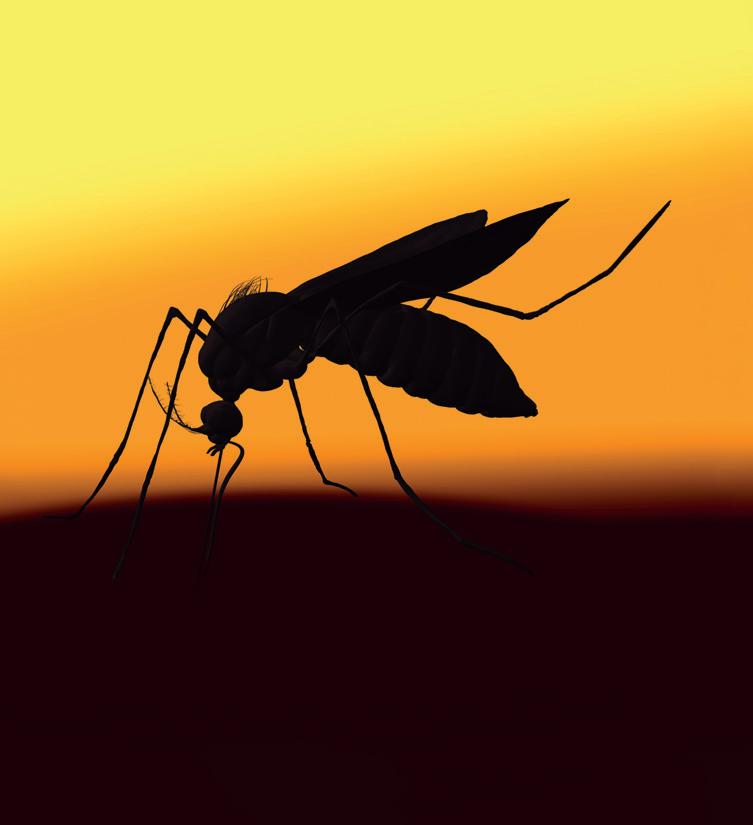
44 ANDON CORD Pulling the cord
The Andon cord method, psychosocial behaviours and the principles that can be implemented in almost any workplace
50 HOW TO... Build personal resilience
We ask the experts how we can better deal with workplace crises
If human perception is highly selective, how can OSH professionals calculate risks realistically?
70 ROUNDUP Delving into data
The latest research and reports relevant to OSH professionals
71 DEEP DIVE Research: in depth
A closer look at two new studies and their findings
74 PROOF POSITIVE Brave new world
53 MODERN SLAVERY Power and profit over people
Slowing the rapid expansion of human trafficking
58 EHS The tools for the job Is EHS software now key to data-driven ESG delivery?
62 CAREER CHANGE Switching lanes
How can OSH attract the best talent?
67 BENCHMARKING As good as it gets? Is benchmarking starting to prove its worth in OSH?
James O’Neill on pursuing his OSH career dreams despite disability

THINGS YOU NEED TO KNOW THIS ISSUE




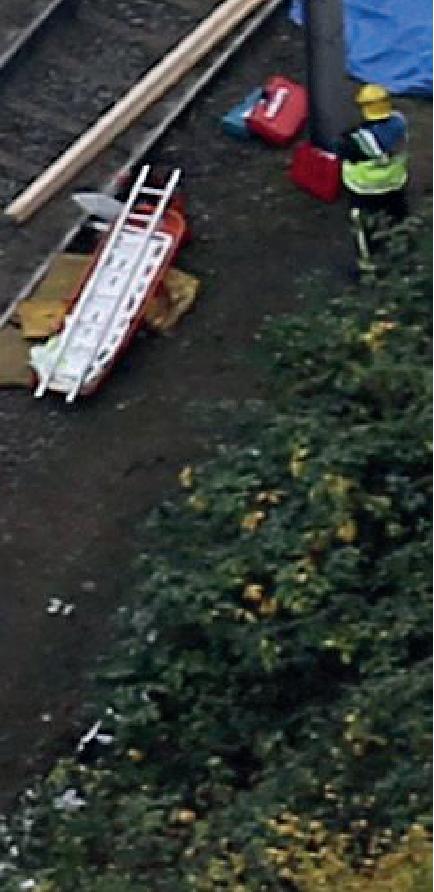
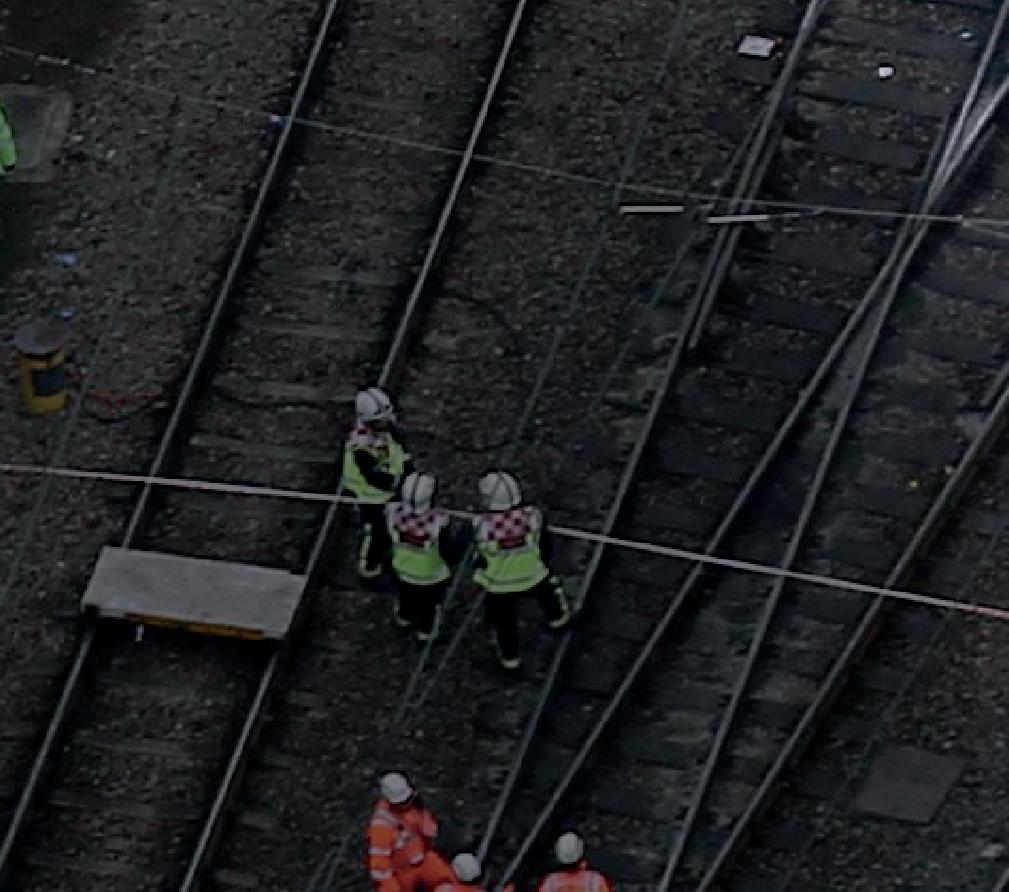

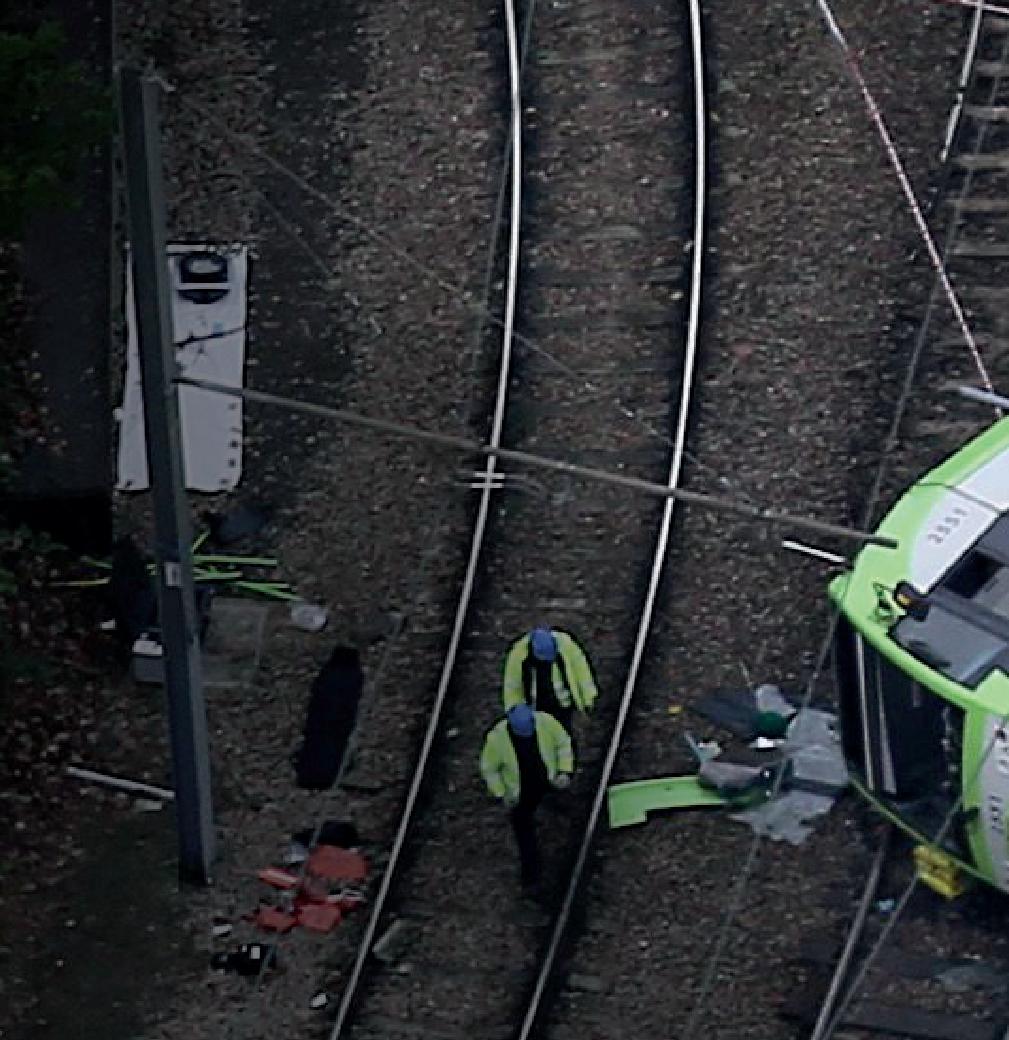




‘I’m a human being and sometimes as a human being, things happen to you that you are not in control of… I’m sorry that I was not able to do anything to stop myself from becoming disorientated. And I’m deeply sorry I was not able to do anything to reorientate myself and stop the tram turning over.’

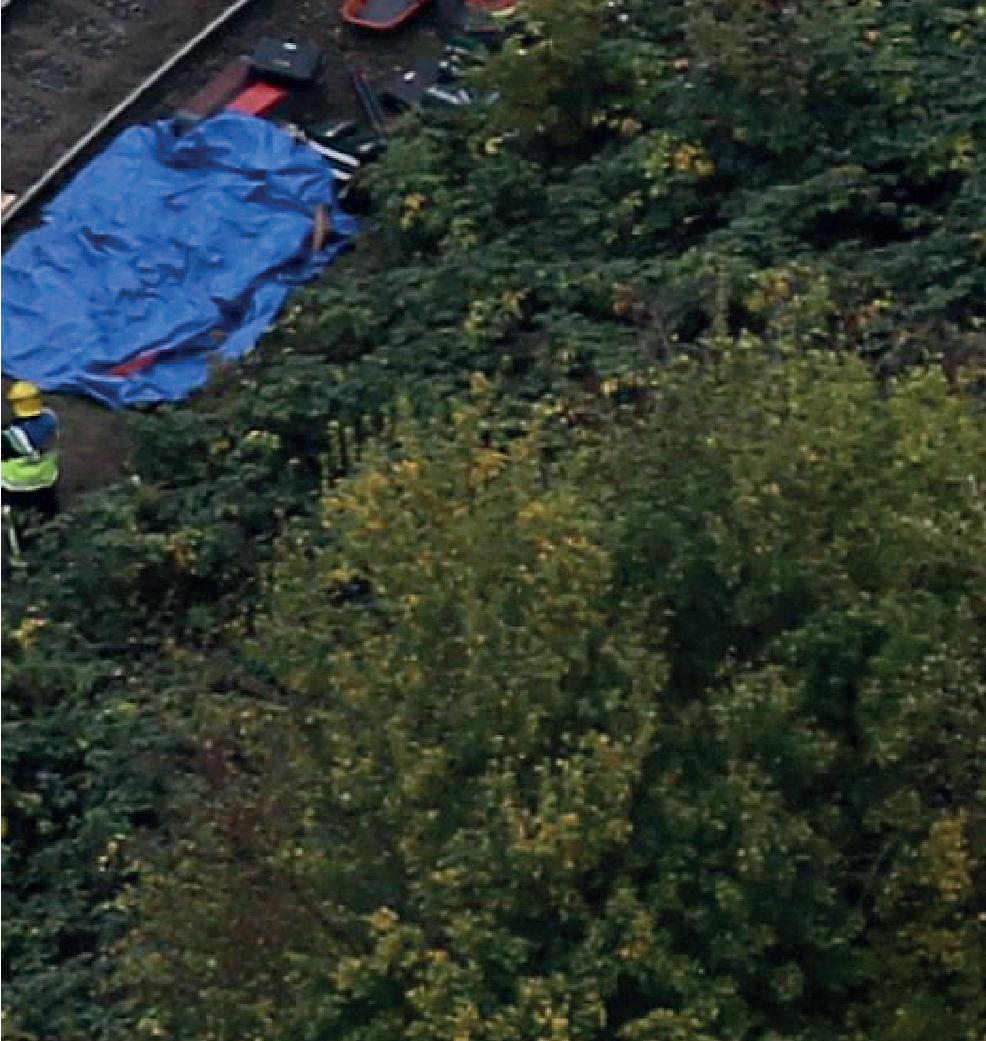



Transport for London (TfL) has been fined £10m and Tram Operations Limited (TOL) has been ordered to pay £4m over health and safety failings that led to a tram derailment in Croydon, south London.
Neither operator had conducted a risk assessment for a derailment before the crash, which occurred when a speeding tram overturned at a sharp turn approaching the Sandilands tram stop on 9 November 2016, killing seven people and injuring 61 passengers, 21 seriously.
Driver Alfred Dorris, 49, was cleared of health and safety offences. The jury at the Old Bailey heard that Dorris, who claimed to be disorientated at the time of the crash, had been driving at three times the recommended speed: a sign on the bend warns drivers to reduce their speed to 12mph, but the tram approached at more than 43mph.
Find out what happened in court in our report at ioshmagazine.com/tram-trial
But agriculture remains the deadliest industry, says the HSE More workers died in construction than any other sector according to the GB Health and Safety Executive’s provisional figures for British workplaces in 2022-23.
However, although the number of workers killed in construction was more than double that in agriculture, forestry and fishing, the sector’s fatal injury rate for the past five years is considerably less. Compared with other industries, agriculture, forestry and fishing remains the deadliest sector to work in.
9.8%
135 workers died in work-related accidents in Great Britain in 2022-23 – an increase of 12 fatalities on the previous year.
1/3
One-third (45) of the total fatalities were in the construction sector – more than twice the number in the agriculture, forestry and fishing sector (21).
60+
33/135
Workers aged 60 or over represented almost one-quarter (33) of the deaths.
40

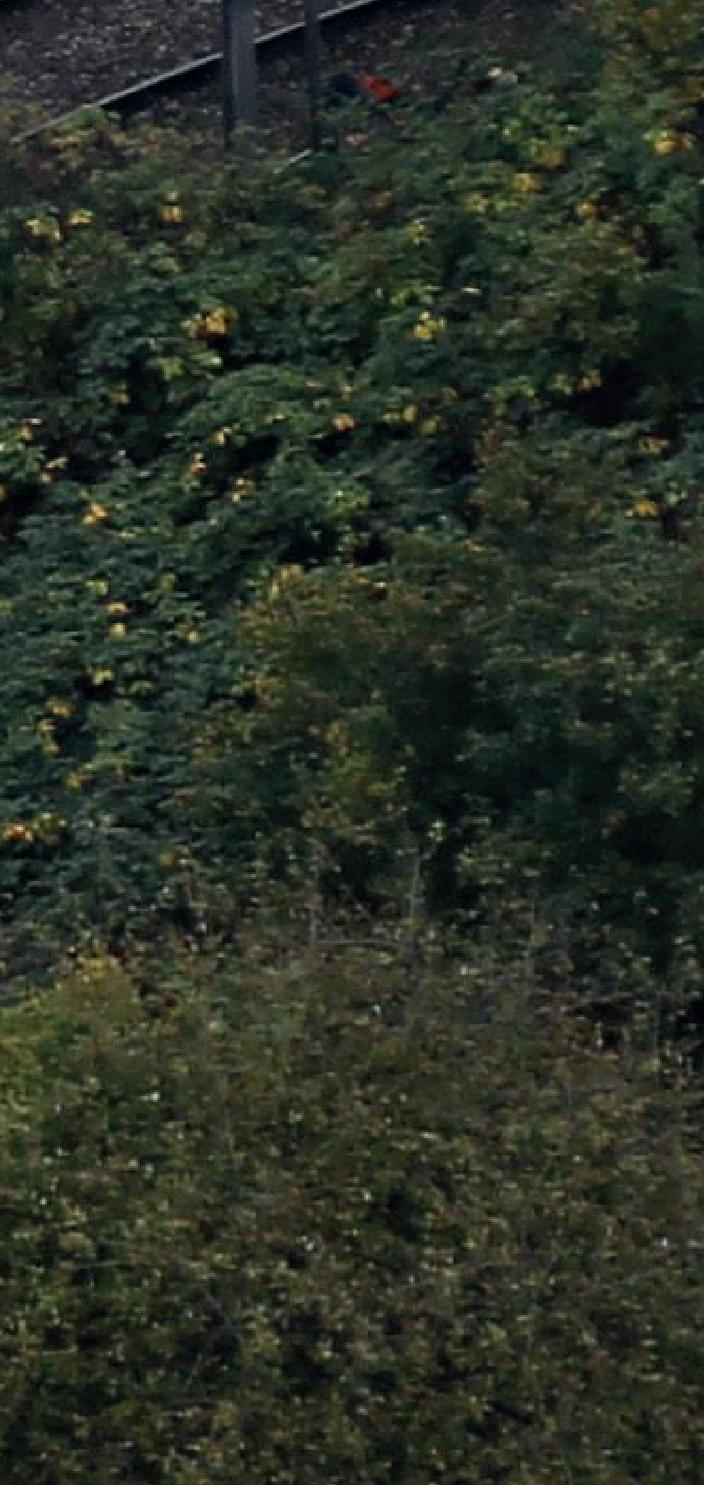
The most common cause of death was a fall from height (40).
Read our in-depth report at ioshmagazine.com/fatalities-23
PHOTOGRAPHY: SHUTTERSTOCK ALAMY

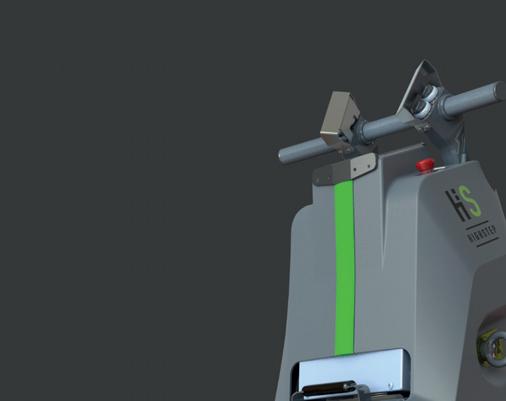












Almost a third of small- to medium-sized enterprises (SMEs) do not have a risk assessment policy in place, according to a poll of 1,500 small business leaders.
The findings, published in the Hiscox Risk Readiness Report, also suggest that a quarter of SMEs do not see health and safety as a priority.
Only 66% of SMEs have implemented a risk assessment policy, the research reveals. And of the 30% that currently don’t have one in place, only 16% plan to implement one in the next 12 months, while 64% do not.

To read on, visit ioshmagazine.com/risk-readiness
The GB Health and Safety Executive (HSE) has issued a safety alert after a man was killed by a raised telescopic pop-up toilet while working in the void below.
The toilets, which are increasingly being installed in major city centres across the UK, pose a risk of people being crushed when they are underneath the mechanism.

The HSE said that any designers, manufacturers, suppliers and owners who are responsible for providing information on cleaning and maintaining pop-up toilets should take note and revisit their risk assessments.
To read more, go to ioshmagazine.com/toilets-alert
A new whitepaper from the British Standards Institution (BSI) suggests that women are leaving the workplace earlier than men and not out of personal preference. It offers recommendations for helping women stay in work.

Lifting the second glass ceiling, which polled 5000 people who self-identify as women in five countries, found women are abandoning their careers faster than men for a number of reasons and this prevents them from fulfilling their potential, such as reaching senior positions.
For more, go to ioshmagazine.com/glass-ceiling

To help organisations tackle the worldwide scourge of modern slavery, overwhelming global support has now been secured for BS 25700 (Organizational responses to modern slavery – Guidance) to become an international standard.
Protecting increasing numbers of vulnerable workers requires an urgent growth in responsible business practice and OSH delivery, using BS 25700 and ISO 45001 principles to support decent work. OSH must be actively promoted as a fundamental right and integral to the Sustainable Development Goals via networks such as the World Health Organization, International Labour Organization and International Social Security Association.
For more, visit ioshmagazine.com/slavery-standard

Technology industry professionals and academics have been advocating caution in the development of artificial intelligence (AI). Yet, at the same time, the UK government issued its white paper outlining ‘a pro-innovation approach’ to AI regulation.
The use of this phrase rang alarm bells for me (even as an advocate of AI), as do the paper’s stated aims, which include the headline target of ensuring the UK becomes an ‘AI superpower’ and enabling innovators to ‘thrive’.
The authors describe the two characteristics that make it necessary to regulate AI: the adaptivity of AI makes it difficult to explain how it reaches an output, while the autonomy of AI results in concerns about who is responsible when something goes wrong.
Many benefits of AI are promised, such as improved diagnosis, new medicines, mitigation of climate change and future pandemics, new jobs and improved workforce efficiency. The use of AI to improve workplace safety is
mentioned. My favourite example is the use of lightweight robots in agriculture to reduce compaction of the soil and minimise pesticide and herbicide use by identifying specific weeds and pests. The white paper acknowledges risks, but in a vague manner. These risks include physical damage, the undermining of national security and personal privacy, and harm to physical and mental health. The example of someone following an AI recommendation for a dangerous activity feels weak and no different to similar concerns about social media. Fears about amplifying discrimination and unfairness in the justice system, insurance and
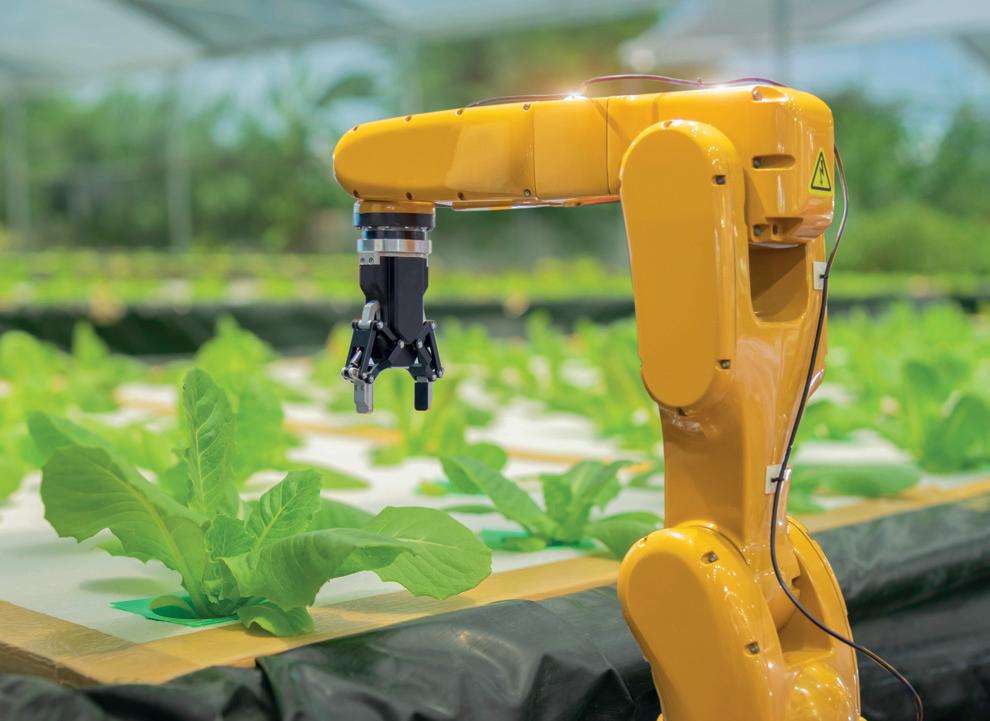
recruitment are more realistic. Broader threats to democracy and society are mentioned, but without suggesting safeguards. There’s a promise to publish an AI risk register, but with a timeline of ‘12 months or more’.
The paper comments on the development of an AI assurance industry, with important roles for auditing and safety. As a takeaway, this should be a reminder to OSH professionals of our responsibility to keep up to date with new technologies. We need to participate in risk assessments of
the use of AI and assess the risk of failing to exploit AI capabilities.
The UK proposal shares some common principles with the EU’s AI Act, such as safety, security, robustness, transparency, fairness and accountability, but has less detail. A particular statement – ‘we need to ensure that the public continues to see how the benefits of AI can outweigh the risks’ – makes it feel like the authors place greater importance on getting people to trust AI than on ensuring that AI is trustworthy. The EU’s AI Act might prove to be overly bureaucratic and inflexible, but I fear the more flexible pro-innovation approach in the UK could leave regulators with responsibilities but no power.


To read the original article, visit bit.ly/OAI-report
Bridget Leathley is a freelance health and safety consultant and a health and safety trainer.



Bridget Leathley CFIOSH explores recent OSH developments to reveal the takeaways and challenges for practice.
The COVID-19 pandemic made it clear how much we need key workers – and it also demonstrated how undervalued people in these key jobs are.
During the pandemic, many were able to work from home. Key workers were more exposed to health risks. We might have clapped for a few months to celebrate their commitment, but when life returned to normal, they saw little improvement.
The International Labour Organization (ILO) report
The value of essential work: world employment and social outlook 2023 explains that even before the pandemic, essential workers had a higher baseline mortality rate. Excess deaths during the pandemic increased more for these workers than for non-essential workers, while death rates for some nonessential workers reduced.
Although the ILO reports variations around the world, in general transport workers and those in ‘precarious’ employment suffered higher mortality rates than even health service workers. Protective measures such as distancing, hygiene and frequent changes of PPE
were harder to implement for these workers.
Post-pandemic, this report raises questions for us as health and safety professionals. What are we doing to support key workers? In discussions on the benefits of hybrid working or the four-day week, I’ve seen the needs of key workers ignored.

While much of the ILO’s advice on improvements for essential workers is aimed at governments and regulators, chapter 5 of the report points out that a safer and healthier workplace has benefits for organisations as well as essential workers. Accidents and absenteeism are expensive, even if you don’t pay the workers when they are absent, and recruitment costs can outweigh wage costs.
From an OSH perspective, we can advocate for the ILO agenda to reduce contract inequalities and pay gaps. Non-essential workers are paid more when working, and are more likely to have paid sick leave above a statutory minimum. During the pandemic, no or low
sick pay discouraged some key workers from testing, increasing the likelihood of spreading the illness.
Some countries extended sickness benefits to workers who were not eligible before the pandemic, and these rights ought to be retained to give people time to recover from illness and injuries.
As OSH professionals, we can assess the risk of excessive working hours and antisocial shift patterns, and review protection for essential workers, including part-timers and contractors.
The ILO recommends more balance on joint safety and health committees
and the involvement of workers’ representatives in OSH inspections and investigations.
A final takeaway from the report relates to training for key workers. It can be more difficult for them to access because of remote working, or because it is more difficult to take them off the job. Training should include not just general OSH, but how to prepare for different types of crises in the future.
We shouldn’t wait for another emergency before giving more attention to essential workers.
To read the original article, visit bit.ly/ ILO-work-report
One of the great attractions of a career in health and safety for fledgling professionals is the idea that the world is your oyster. You really could end up working in any sector, in any part of the globe.
But there is another, perhaps less promoted quality that can be found in OSH: ironically, that is security. Find the right role and employer and – now rare among most modern professions – you could have a mutually fruitful working relationship that lasts for decades. In the case of Paul Singh CMIOSH, over the course of 25 years in health and safety, he has had just two employers.

‘On one hand, 25 years does seem like a long time, but at other times it seems like I’ve only been in OSH for a few years,’ Paul says.
‘Back in 1997, I was working in general retail and looking for a fresh challenge. In the late 1990s accidents and incidents in the workplace were peaking and there was a lot of talk around OSH.


‘As somebody who is naturally peoplefocused, I took the decision that I wanted to work in an area where I could support people. So, I took out a career development loan to embark on my first formal safety qualification, which was a diploma-level safety qualification back in 1997-98, and the rest is history.’
Today, Paul is group health, safety and environmental manager (UK) at Midlandsbased King and Moffatt Building Services, after spending almost two decades with the SHEQ (safety, health, environmental, quality) and compliance team at a leading
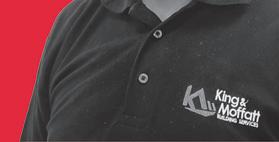
water systems treatment solutions provider. While there is a common belief that change keeps you fresh, Paul says there are other ways to be inspired.
‘I enjoy the different challenges that each day working in OSH management brings. Using a cricketing analogy, it can be like batting on a turning wicket and the occasional curve ball coming down at you. One never stops learning and developing in OSH.

‘I also enjoy networking and engaging with peers and colleagues, and also fellow professionals. I am also very fortunate in

that I have a very good support mechanism around me in the form of my family and circle of friends. We encourage and motivate each other. I think that is a great resource to have.’
His relationship with IOSH is also a key motivating factor. Three years ago, Paul became a Chartered Member of IOSH, and he is now committed to becoming a Chartered Fellow.
‘I’m so determined that I think it’s a question of when I become a Fellow, not if!’ Paul jokes.
‘The process towards achieving Chartered status was very well structured but I remember feeling somewhat nervous. It was a two-part process, and in the second part I was interviewed by a panel of fellow professionals on behalf of IOSH. I am usually very confident addressing groups of people as I have many years’ experience in training and effective communications but I remember, the day before, brushing up on my knowledge and feeling a strange sense of nervousness. In
We speak to Paul Singh CMIOSH about the issues that continue to keep him fresh and motivated after a quarter of a century in health and safety.INTERVIEW MATT LAMY
hindsight, that was obviously because of how badly I wanted to be successful.
‘Chartered status at IOSH, with more than 48,000 members around the globe, speaks volumes about one’s passion, commitment and desire to do the right thing and to keep going in the right direction. It’s about bettering oneself but also about delivering on behalf of employers and employees. I always think about both employers and employees because I feel that my role as a safety professional is like a bridge between the two – we cannot hold one as more important than the other and we have to strike the right balance to be successful in doing the right thing.’
Paul also outlined the importance of giving something back to the profession. ‘Mentoring and coaching is very important for those finding their way early on in their professional OSH journey. This is the all-important support that some may need to enable them to continue to strive towards their medium to long-term professional goals.’
Paul also engages in voluntary advisory and support work with some charity organisations in the UK.
One area Paul’s focus on doing the right thing has taken him is the world of research. In the last two years, as a practising Sikh, he has undertaken independent research into the relative lack of turban-wearing Sikhs in construction health and safety.
‘One of my great uncles was well publicised in the 1960s and early 1970s for protesting against Sikhs having to remove their turban in order to wear a helmet when riding a motorcycle. After a lot of hard work and sacrifice on his part, his campaign was enshrined in legislation and now Sikhs are exempt from removing their turban and wearing a crash helmet when riding a motorcycle,’ Paul says.
‘Similarly, under employment regulations, Sikhs in health and safety
are exempt from having to remove their turban to wear a hard hat on a construction site. However, I feel that turbanwearing Sikhs are under-represented in construction at the level of OSH management. We see a lot of turbanwearing Sikhs at operative level within construction, but I have come across very few fellow OSH professionals who are practising Sikhs.’
‘Historically, there has been a lack of awareness on the part of employers in terms of the provisions that should be made available for practising Sikhs. This has been a barrier for practising Sikhs who
were not prepared to compromise their faith and so sought alternative professions,’ Paul says.
‘And there’s also been a lack of awareness on the part of employees – practising Sikhs – in terms of having conversations with employers, asking them to help facilitate their interest in health and safety.’
While 25 years of experience in health and safety may seem a lot, Paul is not looking to stop any time soon. In fact, so interesting has his recent research been that Paul is now expanding it to look at other underrepresented groups in construction OSH.
‘I now have a far better understanding of the religious and cultural barriers facing individuals coming into health and safety management, but I am also acutely aware that there is an imbalance with regard to gender representation in health and safety management within the construction sector. I know there is also an under-representation of mixed-ability individuals working in health and safety.
‘So my work around this continues and I look forward to sharing my findings with IOSH members in the years to come.’
When it comes to future OSH challenges, Paul identifies one particular issue: attracting fresh blood.
‘We need to showcase health and safety as an attractive option that will meet young people’s needs for challenging and rewarding careers,’ Paul says.
‘I believe part of that involves supporting young professionals through the early stages of their career to help them become established and confident, and actually enjoy what they do.
‘When I came into health and safety, the support mechanism around me in the workplace was fairly basic. We’ve come a long way since then, and I certainly try to help my colleagues with support and motivation, rather than simply managing.
‘We need better leadership rather than just management. Managers manage, and can be too focused on short-term results, whereas leaders inspire, facilitate, support and enable their people to achieve their true potential. But none of this happens overnight – it needs perseverance, determination and implementation of those support mechanisms.’

GB Health and Safety Executive (HSE) principal inspector Amy Kalay explains the failings that led to a depot manager being fatally struck by a vehicle as he left a Birmingham site, and what IOSH members can learn from this tragic incident.
THE INCIDENT
Depot manager Neil Roberts was leaving work on the afternoon of 30 August 2019. It was a Friday, he was preparing for the weekend, but as he was walking across the yard to retrieve his car, an HGV cab reversed out of a maintenance bay, striking and fatally injuring him.
THE INVESTIGATION
HSE inspectors visited the yard soon after the incident occurred. ‘It proved to be a fairly straightforward investigation because it was clear from the onset that workplace transport had not been managed effectively at that site,’ said Amy.
‘The reason for that is because both companies occupying the site – Turners, which was the tenant and employed Neil, and The Haulage Group, which was the owner of the premises – had not adequately assessed the risk associated with workplace transport. As a result, there were no marked walkways and no effective barriers in place to guide
pedestrians to walk a safe route. Our investigation found that it was custom and practice for all operatives using that yard to just take the most convenient route, often the shortest route around the yard.
‘This situation was perhaps especially surprising given the fact that Turners is one of the biggest haulage companies in the UK. One would have expected, even if, as in this case, Turners didn’t own the site, the company would have had influence over how it was managed.’
Suffolk-based Turners pleaded guilty to breaching sections 2(1) and 3(1) of the Health and Safety at Work Act. The company was fined £1.9m and ordered to pay costs of £7,300. The Haulage Group Ltd (previously known as Howell Group Ltd)
pleaded guilty to the same breaches and was fined £300,000 plus costs.
‘Both companies had responsibility for managing health and safety at that site: sections 2 and 3 of the Act applied equally to both organisations,’ noted Amy.
‘The judge found leading culpability on both of the companies, so he found them equally accountable for the failings. The fine levels were attributable to each company’s turnover.’
‘All companies that share sites have a legal duty to cooperate and coordinate health and safety management arrangements to ensure the safety of all employees working at that site, and of others who may be affected by work activity undertaken at the site,’ said Amy.
‘There are obvious risks present within transport yards, the main one being persons being struck by vehicles. Occupiers/owners of such yards must ensure the safety of pedestrians. One of the ways in which they can do this is via implementation of adequate segregation so that pedestrians can be away from transport and the likelihood of them being struck by transport can be eliminated.
‘If the companies involved in this case had acted to identify and manage the risks involved, and put a safe system of work in place, this incident would not have happened.’
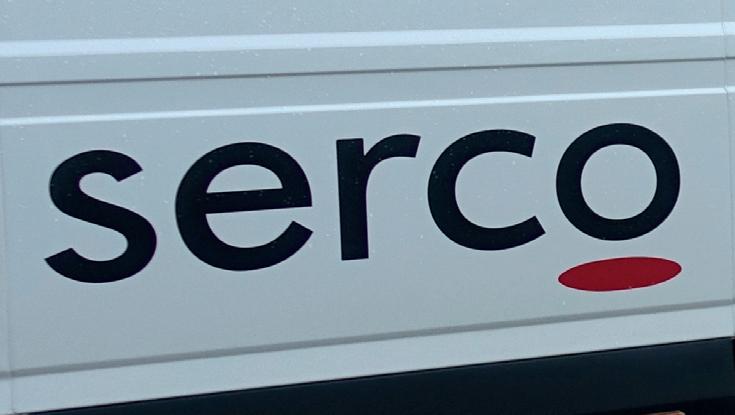
Multiple, long-standing failures at UK-based public services provider, Serco, have led to two prosecutions in just one month, after a female prison officer was kicked to death by an inmate, and a man was killed when a lorry crashed into litter-picking vans on a dual carriageway.
High-risk activity
Tony Skerratt, 44, was in the passenger seat of a Wren Kitchens lorry when it hit Serco vans that were obstructing the inside lane on a high-speed dual carriageway. He died from his injuries.
Serco employees had been driving slowly along the road between Norwich and Thetford, stopping to collect bags of rubbish. Breckland District Council had contracted Serco to remove the litter.
The court was told Serco had failed in its health and safety management: it had not provided its employees with appropriate work instructions to ensure the litter-picking activity was safe. It had also failed to supervise and monitor the highrisk activity to ensure it was carried out safely. The company was fined £240,000 plus costs of £37,074.
A massive fire that gutted retail giant Primark’s Belfast store has resulted in two companies both being prosecuted for health and safety offences.
Serco was also fined £2.25m after a custody officer was kicked twice and sustained fatal brain injuries trying to restrain a prisoner. Lorraine Barwell, 54, had worked for the security arm of Serco for 10 years.
Serco had failed to properly analyse risk intelligence on prisoners or to communicate risks and safety precautions to its staff In addition, the firm had failed to put sufficient arrangements in place, provide readily accessible PPE or followed Ministry of Justice policy and procedures.
Root causes IOSH magazine interviewed the investigating inspector to find out more about these cases, Serco’s remedial actions, and what members can learn from the incidents.
Read more at ioshmagazine.com/serco
An investigation by the Health and Safety Executive Northern Ireland found that appropriate steps had not been taken to ensure the risks associated with hot works – involving a gas-powered blowtorch – were suitably managed.
Bennett Management Contractors (GB) Ltd and AF Roofing Ltd both pleaded guilty to failing to safeguard employees or to ensure non-employees were not exposed to risks.
Read more at ioshmagazine.com/ Primark-fire






A family-owned haulier has been found guilty of safety offences after a tipper truck made contact with an overhead power line, electrocuting its operator.
Grant Borton, 25, died when he lifted the tipper unit to drain excess water from the trailer but made contact with an 11kV overhead power line.
Investigators found a lack of controls to either prevent contact with the power line or to mitigate the risk of contact.


Andrew Black Ltd, in Scotland, pleaded guilty to breaching regulation 4(3) of the Electricity at Work Regulations and was fined £150,000.
Key lessons can be found at ioshmagazine.com/andrew-black

Fisherman Mark Elder, 26, was working for Scrabster Seafood Ltd on its North Star creel-fishing vessel when he became caught in a coil of back rope and was pulled overboard. Crewmates hauled him back on board 10 minutes later but efforts to resuscitate him proved unsuccessful. His employer was recently found guilty of safety failings that caused his death.
In February 2018, the North Star creel-fishing vessel was deploying, or ‘shooting’, creel 16 miles north-west of Cape Wrath in the far north of Scotland. Scrabster Seafoods Ltd purchased the North Star – its first venture into fishing vessel ownership – in 2016. In August 2017, the vessel underwent a refit, including modifications to its shooting door.
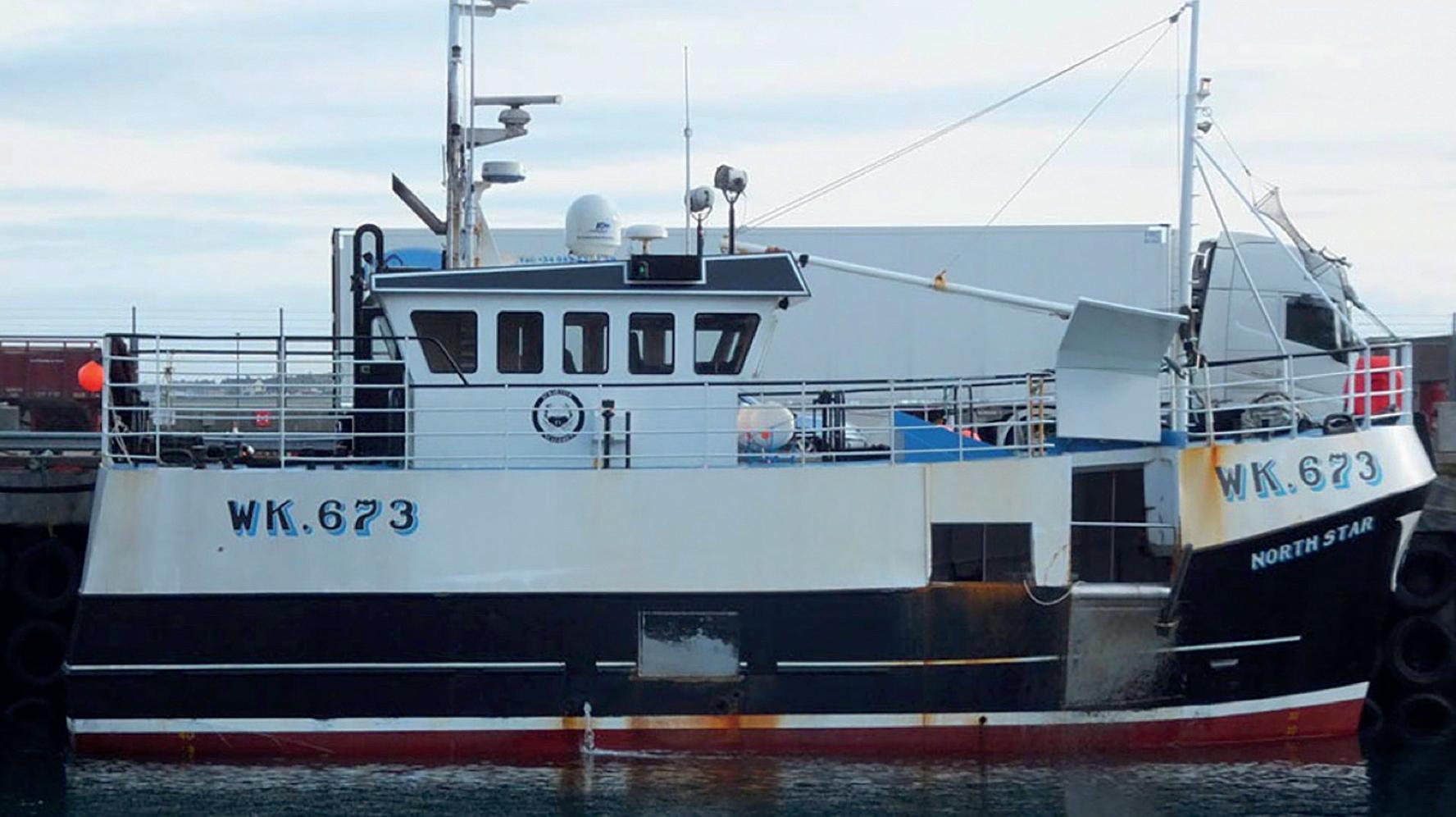
Mark was one of the three men who were working in concert at a table to manually launch creel out of the shooting door by attaching the creel to a rope that was paying out aft of the boat.
‘[Creel fishing] is a hazardous operation,’ prosecutors said. ‘On creel-fishing vessels, accidents involving crewmen being caught up in ropes and dragged overboard are not uncommon.
‘Between 1991 and 2009, of the 54 fatalities in this sector of the industry, 25 of them resulted in fishermen going overboard. Without knowing the exact statistics, many of them would have been pulled overboard by ropes while fishing gear was being deployed.’
The investigation found that the directors of Scrabster Seafoods had no experience of operating and managing fishing vessels and, when they had purchased the boat in 2016, had failed to arrange or complete the required new risk assessment.
The directors had no substantive knowledge of the responsibilities and obligations that accompanied the ownership of a fishing vessel and had relied on the North Star’s skipper to ‘keep them right’ in respect of the regulatory framework that surrounds fishing vessel ownership and operation. The skipper’s position was that he was unaware of the 1997 requirement to review and update any risk assessments.
Scrabster Seafoods pleaded guilty to contraventions of the Health and Safety at Work Act, and was fined £80,000.
For IOSH magazine’s detailed report of this case, as well as key lessons for members, visit ioshmagazine.com/ scrabster-seafood
A wall collapse at a metal recycling site in Birmingham that left five workers dead has resulted in jail sentences for two company directors.

In July 2016, five agency workers were part of a team clearing swarf from a metal recycling bay at a site operated by Hawkeswood Metal Recycling Ltd and Shredmet Ltd (now operating as Ensco 10101 Ltd) in Birmingham. Around 15 minutes after the men started work, the 12ft-high, 45-tonne wall of the bay – made up of 30 concrete blocks –collapsed, killing the men instantly.
What followed was a lengthy and complex investigation. The GB Health and Safety Executive (HSE) investigating principal inspector told IOSH magazine: ‘I have been with the HSE for 22 years and this is
the most horrific incident that I have ever been involved in.’
After a five-week trial at Birmingham Crown Court, Wayne Anthony Hawkeswood – the director who was responsible for procuring the blocks – and Graham John Woodhouse, who was in charge of the production side of the business, were both found guilty of four charges each. Both received nine-month custodial sentences. Hawkeswood Metal Recycling was fined £1m while Ensco 10101 Limited was ordered to pay £600,000. The judge also ordered £775,000 to be paid in prosecution costs.
The HSE said: ‘This was a case of all involved failing to properly risk assess, failing to understand the amount of material that could be stored within the bay, and as a result, failing to properly inform and instruct and train the operatives to ensure work was carried out in a safe manner.’
Read our full, in-depth interview at ioshmagazine.com/ hawkeswood-woodhouse
On a routine visit, inspectors from the Occupational Health and Safety Administration (OSHA) discovered Boston food plant Chinese Spaghetti Factory Inc had failed to install safety guards on a machine’s rotating shafts, a dangerous hazard for which the company was cited after an employee suffered serious injuries in 2022. OSHA proposed an additional $82,500 penalty for failing to correct this hazard.
Later inspections found several new and recurring hazards, which led OSHA to issue citations and propose $108,031 in penalties for repeatedly exposing employees to the risks of electrical shock and injuries from unguarded electrical components and operating parts.
Poor risk management and a lack of worker engagement have been identified as factors in the death of a freezer worker, who was crushed by a falling steel frame full of offal cartons.
Alfred Edwards was attempting to free a jammed carton in a blast freezer at AFFCO’s Wairoa plant in February 2020, when a frame fell and fatally crushed him. The 61-year-old was alone in the freezer at the time. A fine of NZ$502,500 was imposed.
AFFCO is owned by Talley’s Group Ltd. Since July 2021, WorkSafe has been taking a close look at Talley’s Group of companies, due to a history of serious health and safety incidents.
BEYOND COMPLIANCE: DOING THE RIGHT THING FOR CONTRACTORS IN YOUR SUPPLY CHAIN
Why watch?
10,000+
downloads



Sole traders and small businesses are the bedrock of your supply chain. They help keep you more agile and resilient, and you want to provide local contractors with work. But relationships with them carry more risk to your business – they can be more transactional, and costly, and they are likely to be further behind on their compliance journey.

What will I learn?
Join our panel of experts to hear their thoughts on how to: Adopt more effective ways of communicating with your supply chain that supports your bottom line Show your contractors you’re serious about safety and compliance and bring them on the journey with you Embed a streamlined, common standard of compliance across your entire supply chain.
Where to view
ioshmagazine.com/webinars/ alcumus-supply-chain
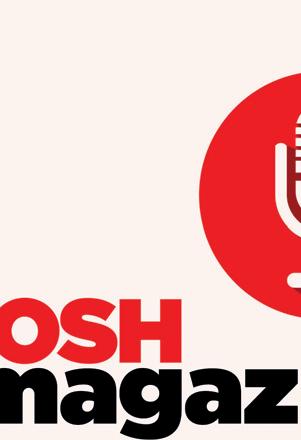

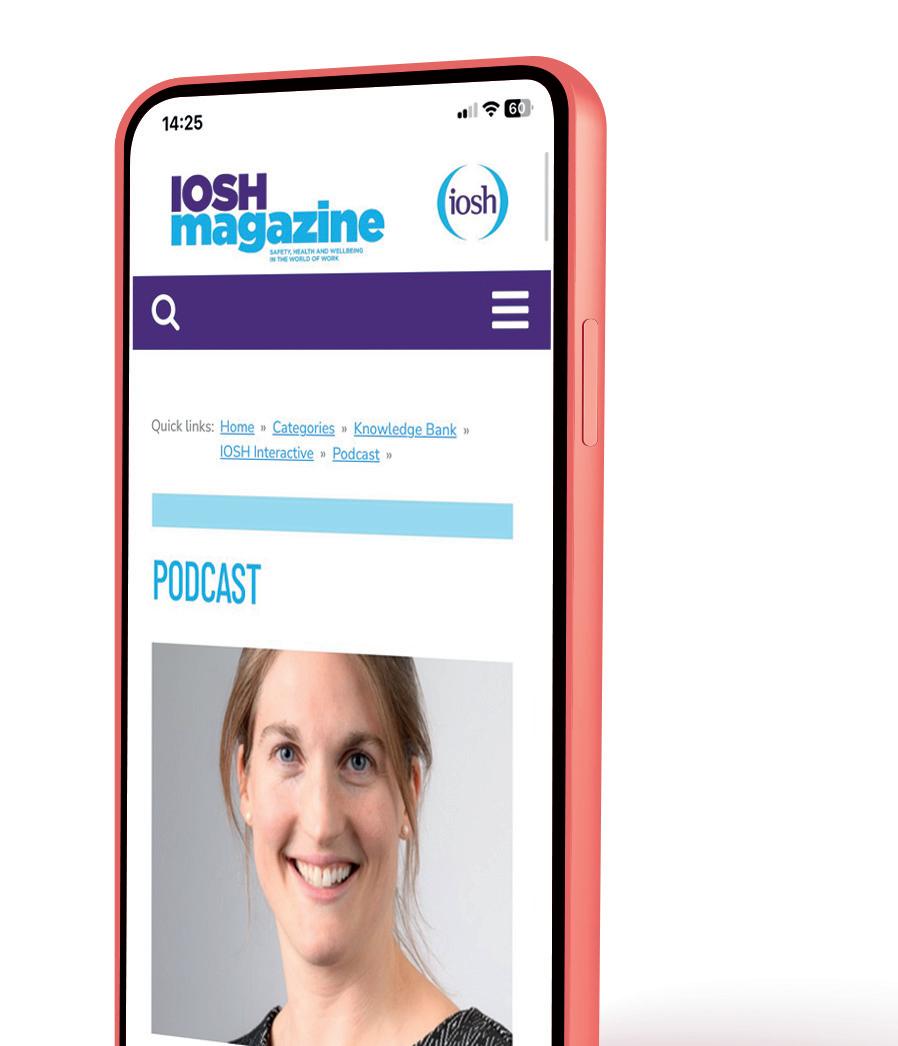
PATHWAYSTO
Carly Hughes and Mathew Cooper, members of the Future Leaders Steering Group, discuss health and safety apprenticeships, the barriers to new and aspiring OSH practitioners and the positives of working in the profession, as well as offering advice to those starting out in their first role.
Liz Sebag-Montefiore, director at leadership, development and executive coaching consultancy




10Eighty, executive coach and career coach, talks about leadership development, coaching and mentoring and what it takes to be a strong leader.
IS YOUR PPE COMPATIBLE?
PPE giant 3M’s experts guide viewers through the legal requirements of PPE, the risks associated with incompatible PPE, considerations for product selection, fit testing requirements (respiratory, hearing and eyewear), and ultimately the benefits that PPE compatibility can bring to the workplace.
Where to view
Watch on-demand at ioshmagazine.com/webinars/3M-PPE

2052 registrations





1
Many workers have had to drop the ‘play hard’ aspect of their lifestyle and just focus on working hard like never before thanks to the cost-of-living crisis, writes OSH research manager Mary Ogungbeje.
In her latest opinion piece for IOSH magazine, Mary reminds employers to be mindful of the adverse effects on working lives and to put workers’ health and safety first, during the good times and the bad.
ioshmagazine.com/ opinion/work-hard


2
According to recent estimates, there are around eight million lone workers in the UK, making up a significant 22% of the country’s total working population. Don Cameron, CEO of StaySafe, explains the value of reporting incidents.
ioshmagazine.com/ opinion/lone-workers
3
IOSH member Chloe Hughes is the wellbeing business partner at Rolls-Royce and leads its reproductive health strategy. She says the British Standards Institution’s (BSI) new Menstruation, menstrual health and menopause in the workplace – Guide (BS 30416) is a step in the right direction, but is only the start of the conversation.
ioshmagazine.com/opinion/ menstrual-health View the BSI guide at bit.ly/BSI-menstruation
FRIEND OR FOE? MY ROBOT CO-WORKER
For the first time in decades, the employment rate of over-50s has fallen, with older people leaving the workforce in huge numbers. This video explores how OSH professionals can support them to stay in the job for longer.

ioshmagazine.com/videos/ older-workers

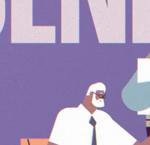
4

Ryan Exley, OSH content developer at IOSH, asks if humans and artificial intelligence can co-exist harmoniously in the workplace.
ioshmagazine.com/ opinion/robots

You can access all the previous issues of IOSH magazine at ioshmagazine.com/issues









Sign up to receive our awardwinning twice-weekly eNewsletter at ioshmagazine.com/enewsletter

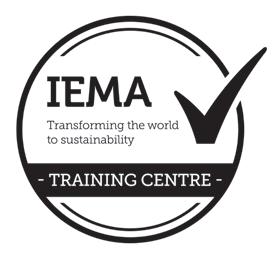

Amid the high demand for treated timber, compounded by shortages created by the conflict in Ukraine, Brexit and the COVID-19 pandemic, large quantities of substandard roofing battens in the UK market are being marked, coloured and sold as conforming to BS 5534 (the code of practice for slating and tiling). The safety concern was highlighted by the National Federation of Roofing Contractors (NFRC) members, as these inferior battens present an increasingly serious issue for roof safety. Not only do they affect the longevity of the roof, they are less able to support an operative using the battens as a roof ladder alternative.

Nonetheless, battens incorrectly carrying the BS 5334 grading and/or those coloured to imply conformity are being marketed as compliant. There are also concerns that many who supply, select, check and install roofing battens are unwittingly using inferior battens, as they believe they have purchased pre-graded material and are likely to proceed without additional checks. Therefore, essential
Supplier details
BS 5534 states that all graded roofing battens should be marked with the elements shown in Figure 1. However, marking alone is not proof that the batten has been graded correctly or that it is of the correct standard, so a few simple steps can be taken:
1. Check the thickness of the batten; BS 5534 states that a batten should be 25mm thick with a tolerance of -0/+3mm. A roofing batten less than 25mm thick should not be used.
SizeSpecies (for example PNSY for pine or WPCA for spruce)
If (B + C) is greater than batten width (A) then the batten should not be used
checks will need to be carried out before roof work commences (see What to look out for, right).
2. Check to see if any knots are present. BS 5534 states that ‘the sum of both faces can be no more than the width, i.e. 38mm/50mm’. Therefore, if a knot is visible on both sides of a batten, when added together the overall size should not be more than 38mm or 50mm. See Figure 2.
Relevant standard
Battens supplied and fixed in accordance with BS 5534 are designed to have adequate strength to support dead loads and wind loads on roofs clad with tiles or slates and may be used as an alternative to roof ladders, in line with the GB Health and Safety Executive’s current guidance. Battens are very often overlooked and their value to the roof structure and their safety in roof work underestimated. Everyone involved has a duty to play their part in safer working.
Using substandard roof battens as an alternative to a roof ladder also increases the risk of accidents, as they are taking the additional live load of the operative installing the roof.
3. Do not rely on the colour of a roofing batten to guarantee that it is compliant. Over the years, manufacturers have coloured their battens as a visual aid to indicate compliance, but the organisations that supply substandard products also colour their battens.
4. BS 5534 graded battens should not rot. If you see signs of rot, decay or growth on a batten, do not use it.



*Third party certification
(Note: This is not a requirement of BS 5534, but deemed as industry best practice and acknowledged by NFRC, TDUK, NHBC and LABC)
Bob Richardson is the head of technical and training at NFRC.
To view resources for this article, visit ioshmagazine.com/NFRC-timber-battens
5. All roofing battens that are compliant with and graded to the requirements of BS 5534 should be delivered to site with the correct documentation. Always request a copy of this documentation and any thirdparty certification, and retain these records.
The First Aid (Mental Health) Bill has again been brought back to Parliament by Conservative MP Dean Russell after previously being rejected back in 2021. This bill aims to make mental health first aid part of first aid training requirements at work, to ensure that those in need can be signposted to support. Being a first aid for mental health instructor, I agree that this is a very positive step for mental health, both in the workplace and out of it. However, it is important to say that while it is great such a spotlight is again being shone on providing better support for those who need it, we must not forget that there is so much more we can do to help reduce the likelihood of needing support in the first place. Yes, first aid for mental health is necessary, but it is not a substitute for promoting a healthy workplace culture.
Let’s look at it as part of a bigger picture. Much like when approaching any risk assessment, we wouldn’t skip the opportunity to eliminate or reduce the risk of a physical injury and instead head straight to our control measures by simply providing a bandage after the event. Indeed, one would say that is neither suitable nor sufficient.


It is certainly not an ethical or sustainable way of managing risk.
While there are undoubtedly many situations where work is not the cause of a person’s poor mental wellbeing, one thing we can do in our capacity as professionals, employers and colleagues is to ensure we have a suitable system in place to assess the risk of exposure to occupational stress, trauma and other matters within our control.
Factors that may affect a person’s mental wellbeing are excessive workloads and unfair distribution of work, low job security, unacceptable behaviours at work, and a poor environment to work in with little regard for the welfare of employees. We must put sensible measures in place to reduce the risk – and the GB Health and Safety Executive’s (HSE’s) Stress Management Standards will give us a starting point for this.

Workers are an organisation’s biggest asset, but with stats showing 914,000 workers suffer work-related stress, depression or anxiety – making up over half of all cases of work-related ill health and resulting in nearly 31 million working days lost (HSE, 2022) – it

is clear there is work to be done in looking after our biggest asset. We should be honoured that a worker has chosen us as their employer over every other employer out there, and we have a moral duty to provide a safe environment both psychologically and physically. Furthermore, the law requires us to do so.

In 2018, IOSH published guidance for mental health first aiders in the workplace (see bit.ly/IOSH-mental-health-firstaiders), while the HSE’s Stress Management Standards were created to give a framework that duty holders can use to help them consider the primary causes of occupational stress. There are lots of excellent guides already available from the HSE, such as its 2019 workbook, Tackling work-related stress using the Management Standards approach (view it at bit.ly/HSE-stress-workbook). Let’s summarise the standards:
Demands – this looks at workloads and how/when work is carried out




Control – do workers have a say over how they work?



Support – does a worker feel supported by their leaders/colleagues, and is

Andy Hooke CMIOSH explores why we should be looking at preventive measures for improving mental wellbeing in the workplace.
their role resourced appropriately?
Relationships – what are we doing to promote a harmonious environment and iron out conflict?
Role – if workers don’t understand how their role fits into the organisation and its significance in its overall success, then it is easy for conflict to arise
Change – how do we approach organisational change? Is effective two-way communication taking place at all levels?
With these areas in mind, we need to carry out a risk assessment and be clear about what action we will be taking. As already alluded to, awareness training is important as it will help the organisation better understand mental health, reduce the stigma surrounding it and build a better culture. However, this is not going to be fully effective

Ensure a clear policy is in place, setting out your aims and objectives as an organisation. Make sure your people know what to expect Scrutinise absence/turnover data to look for trends
if done in isolation, without consideration of the points above and management of the risk in a practical way.
Remember that just because you have carried out the risk assessment, it doesn’t stop there: it is an ongoing process, just like any other risk assessment. Things change rapidly, so we must be proactive in monitoring this and ready to change our approach to maintain its effectiveness.
Whatever the outcome of the parliamentary debates over the legislation, remember that, first and foremost, we have a moral duty to look after our employees’ wellbeing. That includes their mental health, which is something all too easily forgotten.
For references, go to ioshmagazine.com/ mental-health-first-aid
Survey your staff to find out where there are areas to work on Be visible: a reputation for only appearing when something negative happens is never good Get people involved – the more engaged, the better. Encourage them to speak up when something isn’t right and ensure they feel safe to do so Set time aside for regular check-ins with people to see how they are doing. Do not make it just a formality during one-to-ones – show you care because you actually do care Give access to an Employee Assistance Programme, which can offer a range of support for employees through phone or email. They can usually offer advice and counselling, alongside numerous other services Ensure that support is in place for employees exposed to trauma at work – whether directly or indirectly Be an inclusive employer – not just through words, but by your actions. Remember, employees are people, so take time to understand their individual needs.
Andy Hooke is the principal health and safety consultant at the employment law service WorkNest.

I’m driven by a passion to keep workplaces safe. My firm belief is that no one deserves to be harmed while at work and that accidents can be prevented. I believe this now as an instructor at Drydocks World in Dubai and I have always believed it.
I started my journey towards health and safety immediately after I finished my bachelor’s degree in mechanical engineering.
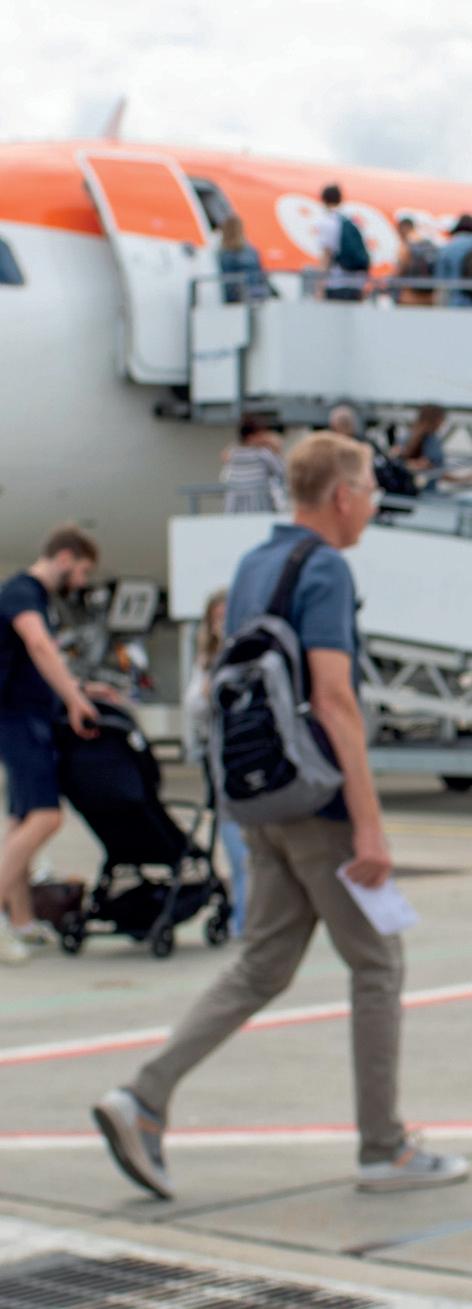
I completed my NEBOSH international general certificate and soon started my first OSH role as a trainer and inspector in Dubai.
To strengthen my commitment to OSH, I joined IOSH. My membership provides huge opportunities. I’m currently an associate member and I’m aiming to reach Technical membership. I enjoy training, and delivering IOSH courses is something that I aspire to. Achieving Technical membership also gives me more recognition and opportunities in the profession.



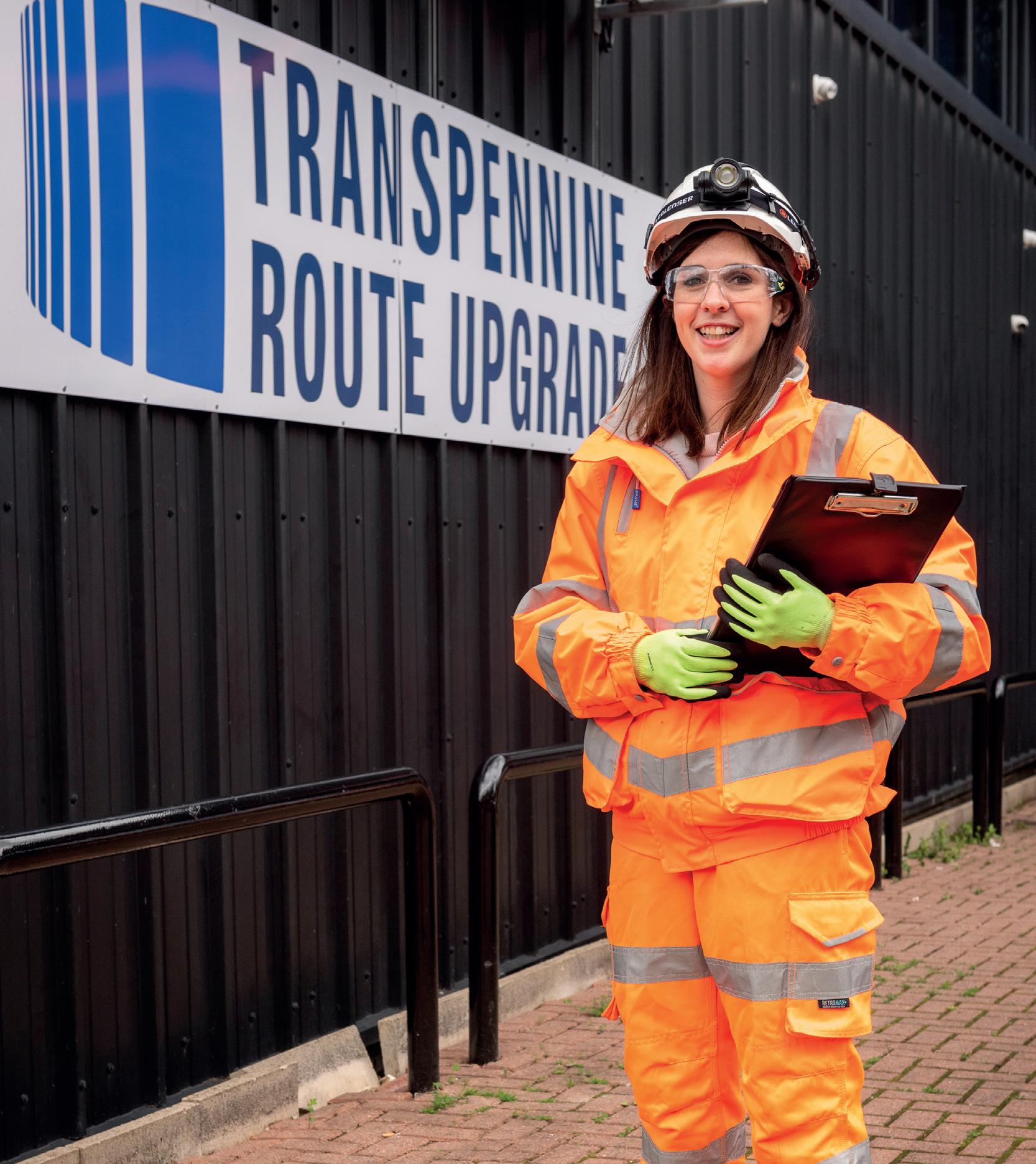

I am sure that I won’t be settling for Technical membership. I have new goals for becoming a Certified Member and then a Chartered Member of IOSH. During the process I will be learning and experiencing a lot with IOSH.


In the last issue of IOSH magazine, we looked at the upcoming changes to IOSH’s membership grades. Ahead of those changes, we spoke with OSH professionals about the value of IOSH membership, as well as their current grade, their ambitions around membership and the benefits it provides their careers.
A career in OSH seemed to sneak its way into my life. My early career began in hospitality – as I progressed into more senior roles, I began to learn more about my duties and responsibilities for my team’s health and safety.
With a desire to learn more about OSH, I went on to study for a master’s degree in safety, health and environment at the University of Salford, before moving into an OSH role in the rail industry.


Working closely with colleagues in projects and rail maintenance teams, I get to enjoy the challenges, complexities
and varying nature of my day-to-day role. It’s a great feeling to know I can play a part in supporting a safer and healthier working environment.
I am currently in the process of aiming for Chartered membership. Luckily, I have had plenty of support from colleagues, the Future Leaders Community and the IOSH Railway Group.
On a personal level, progression gives me an opportunity to develop and provides a structure where I can learn skills and improve. On a professional level, it shows my commitment to continually developing and improving.
‘What’s your name and what do you do?’ It’s an icebreaker as ubiquitous as vanilla ice cream in a supermarket freezer.
To date, I have been fortunate enough to progressively move up the ladder of health and safety career roles: ‘assistant > adviser > manager > group manager > head of X’. Easy enough to answer (except for car insurance, which seemingly believes that a person in safety can only be an officer, manager or consultant). Nevertheless, it has never been expanded to: ‘tech > tech > grad > grad > grad’, which has truly been the ‘why’ behind what I do.
My journey has helped me define who I am, what I can give back to the profession, and where I can add value to a global body of professionals. My career aspirations are simple: continue to inspire
others to ask good questions and empower them to make good decisions. I see my professional journey enhancing how I do that for the benefit of the businesses I work for and the people I interact with.
I hope to become a Chartered Member of IOSH by 2025 – not because it is what is needed to hit a job spec, but because it represents ‘why’. It represents a commitment to the value that safety can bring into the world, and the positive changes it can make to the worlds of the people I interact with every day.
My IOSH journey helps shape my identity as a professional, no matter where my career takes me.

I have worked in OSH for seven years now. It wasn’t a career I had considered before, but working every day alongside the team and seeing the way they worked to support staff inspired me. The variety of topics covered has kept me engaged; I love that no two days are the same.
I started out as a coordinator within the health and safety team at the Francis Crick Institute in London. I have experience in a few different industries, such as manufacturing, museums, technology and now aviation. I’ve enjoyed adapting, applying and gaining knowledge and experience in each industry.
I am currently a Technical Member, and I am hoping to reach Chartered. There have





been unforeseen delays in this and now I am focusing on my job role, expanding my knowledge and experience at the airport.
Moving forward, my first step is to hopefully begin working towards my NVQ Level 6 diploma. From there, I plan to use the initial professional development (IPD) scheme to assess if I meet the standards for Chartered membership. If I don’t meet the standards, I will use this to understand where I fall short and work to meet those standards.
My new role at London Southend Airport will support my learning ambitions to grow through continued on-the-job learning, coaching and direct support with my ongoing studies.

IOSH membership holds value in my professional journey as it provides numerous benefits, including access to resources, up-to-date information on industry best practices and networking opportunities with like-minded professionals. The IOSH Sports Grounds and Events Group, where I serve as a committee member, further enhances my involvement and knowledge within the field.
Becoming Chartered was a natural progression for me as it signifies a high level of professional competence and expertise. It demonstrates my commitment to CPD and adherence to the highest standards in OSH.
The process of achieving Chartered status required dedication, extensive knowledge and a thorough assessment of experience and skills. It was a

challenging yet rewarding journey that solidified my professional standing and validated my abilities within the field. Looking ahead, being a Chartered practitioner will greatly support my career. It establishes my credibility as a leader in the field of OSH and enhances my ability to influence decision-making processes within my current role.
The strategic responsibilities I hold, including overseeing the safety and security strategy for Stoke City Football
 RAYMOND REZA CFIOSH Health and safety professional, University of Fredericton, Canada
RAYMOND REZA CFIOSH Health and safety professional, University of Fredericton, Canada
The achievement of IOSH Chartered Fellow status has been a significant milestone in my professional career, as well as a rewarding personal achievement. Several factors contributed to the journey toward becoming a Chartered Fellow, including CPD and dedication to going above and beyond the call of duty. I was expected to demonstrate high levels of integrity, empathy, resilience, leadership and contribution to the OSH profession.
This status has has strengthened my


credibility within the OSH profession and enhanced my standing. It is widely recognised as a hallmark of excellence and leadership, which has opened doors to opportunities and enhanced my career prospects. Additionally, it has given me access to a wide network of fellow OSH professionals.
As an added benefit, the CFIOSH status has provided me with a sense of fulfilment and accomplishment, knowing I have achieved the highest
level of recognition in OSH. It has given me a wider range of global opportunities and professional recognition, which perfectly aligns with IOSH’s strategy. Now I am better equipped to make a positive contribution to other people’s lives and advocate for our incredible OSH profession across the world.
Club, demand a strong professional foundation, which being a Chartered health and safety practitioner provides. It positions me for future growth and enables me to make a lasting impact on our global safety and security initiatives. My career progression has fuelled my passion for OSH, and achieving Chartered status strengthens my ability to create safer and more secure environments for individuals worldwide.
IOSH supports its members throughout their professional journey. Our updated membership grades are underpinned by robust standards designed to help members demonstrate their competency and experience.
The new structure and assessment processes clearly signpost how members can progress from one grade to the next and, as a result, move forward in their careers to deliver a real benefit to their employers, colleagues and society as a whole. For more information, visit: iosh.com/my-iosh/shaping-the-future


SafetyOn is the health and safety organisation for the UK onshore wind sector. Providing leadership in health and safety, we ensure transparency on the industry’s health and safety performance, promote good practice and assist the industry in mitigating key emerging risks through cooperation and shared learning.


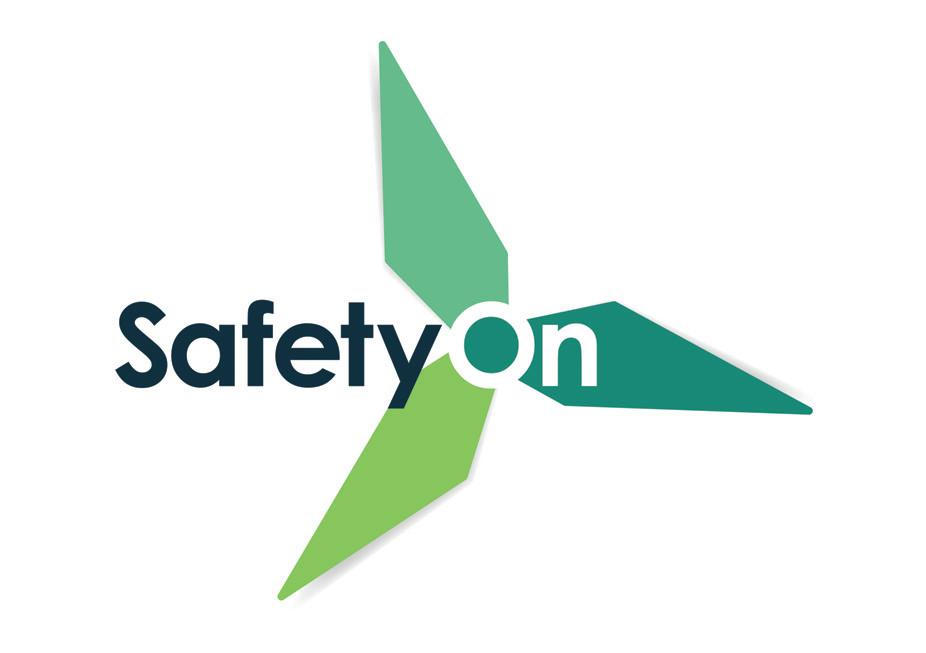
Established in 2019, the organisation brings together 82 member companies and other industry stakeholders to tackle health and safety issues in the onshore wind industry through four main areas: incident data reporting, good practice guidelines, safe by design and learning from shared incidents.
The driver for SafetyOn’s work programme is the incident data collected from our members. SafetyOn Tier 1 members provide their health and safety incident data for all their onshore wind farm sites across the UK, throughout the lifecycle of the windfarm. We analyse the data to monitor health and safety performance, trends and identify risks. Areas of higher risk, identified in the incident data, form the evidence base for the SafetyOn work programme.
SafetyOn is uniquely placed to draw on expertise across the onshore wind sector. Driven by the incident data, we take a focussed approach to delivering the right guidance for the industry. We produce good practice guidelines on areas identified as high risk. By drawing knowledge and expertise from SafetyOn members, subject matter experts, academics, regulators and industry stakeholders, we put together robust guidance for the industry.
The safe by design programme brings experts together to get best practice in health and safety into design. Specific topics, which are identified as high risk by incident data provided by members, and wider industry consultation, are investigated to make improvements at the design stage that will help to reduce incidents throughout the lifecycle of an onshore wind farm. Safe by design workshops review the current design controls and potential failures, identify opportunities for improvement and demonstrate the potential for risk reduction. The outputs from workshops are published in a report and made freely available for the industry.

SafetyOn is committed to sharing health and safety information on incidents, potential hazards and safety related information so that lessons learnt can help prevent incidents occurring elsewhere in the industry. Safety releases are communicated through our website and are categorised as Safety Alerts, Safety Bulletins and Safety Notifications.
SafetyOn is committed to fostering collaboration across the wider industry. We offer a two tier membership option to ensure our membership is inclusive and that our leadership in health and safety is representative of the entire industry. We also work closely with other organisations in the industry to collaborate and share knowledge and good practice with associated sectors, in the UK and beyond. In recent years, we have played a leading role in the Industry Collaboration Committee, which brings together leading industry stakeholders for the shared interest of health and safety in the wind energy industry.
Membership of the Onshore Wind Health and Safety Organisation (SafetyOn) comprises leading owners & operators, Operation and Maintenance service providers/ contractors and Original Equipment Manufacturers in onshore wind operations. There are two types of membership: Tier 1 and Tier 2.
Want to find out more, get in touch!
@safetyontweets
@safetyon
safetyon@energyinst.org
www.safetyon.com
SafetyOn is run in partnership with the Energy Institute (EI), which provides the secretariat and supports its work. The EI is the chartered professional membership body bringing energy expertise together.

Human perception is highly selective and people display attentional and systematic biases, leading to inconsistent behaviour. How can OSH professionals ensure they calculate risks realistically?


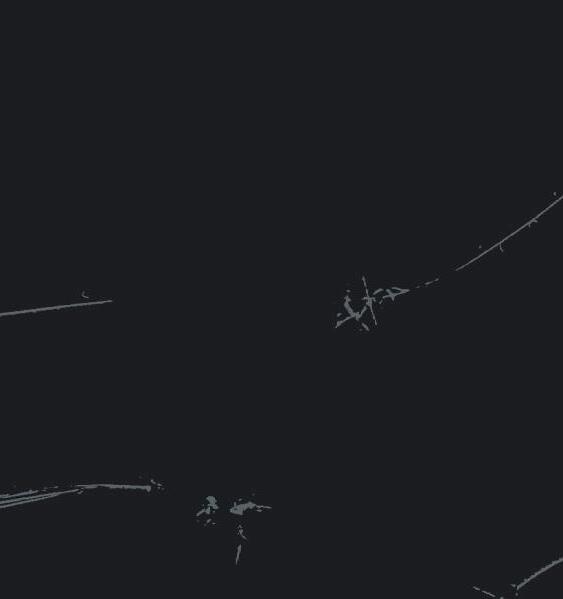


Human behaviour is strongly influenced by our perceptions of the risks we face, explains Johan Botes, partner and head of the employment and compensation practice at legal firm Baker McKenzie in Johannesburg, South Africa. Consequently, our perceptions don’t always align with reality.
‘In perceiving the threat, we often overreact. How that manifests itself in the workplace is that workers behave





























irrationally,’ says Johan. He cites a recent employment case to illustrate an individual’s appraisal of threat and subsequent behaviour. ‘A client had to part with an employee who thought it appropriate to bring a gun to work. The employee felt “under threat” in Johannesburg because of media reports and perceptions about their personal safety.


‘In reality, it is out of sync with the true situation. Cape Town (Western Cape) is statistically more violent than Johannesburg (Gauteng). The individual felt they had to arm themselves and




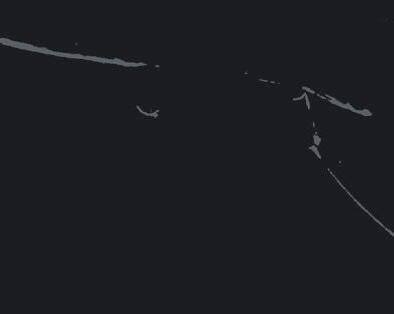
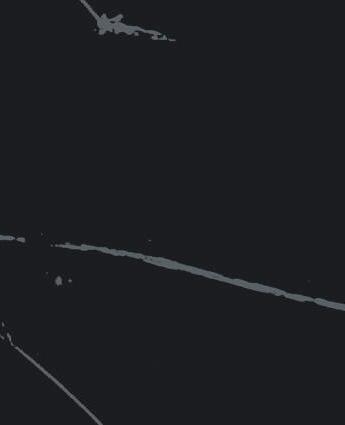
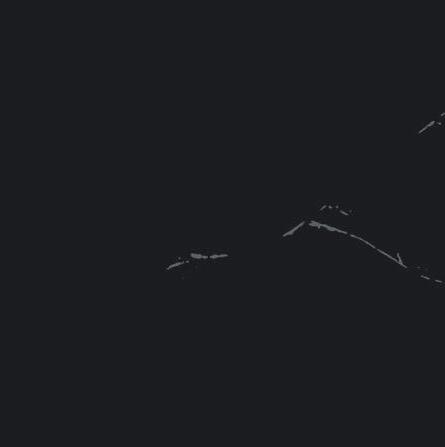



brought a firearm to work. Of course, this made everyone else feel very jittery.’


































































A more severe threat and one with global repercussions was the COVID-19 pandemic.
A French study (Attema et al, 2021), drawing on data from surveys undertaken around two weeks before lockdown started and about two weeks before it ended in 2020, investigated how people form beliefs in pandemic risk settings. They found that respondents overestimated the probability of catching or dying from the virus considering the available evidence.
However, when global safety charity the Lloyd’s Register Foundation undertook its second World Risk Poll in 2021 (Lloyd’s Register Foundation (LRF) and Gallup, 2022), it asked respondents what the greatest source of risk to their safety in their daily lives was. It was surprised by the findings. ‘We thought, in the midst of the pandemic, COVID-19 was going to be way ahead of everything else,’ explains Dr Aaron Ions Gardner, data insight and visualisation scientist at the LRF. ‘But when you look at the global figure, only 7% put it as their top-of-mind risk at that point in time. Globally, it was the fourth most-cited risk. Transportation, crime and violence and other personal health concerns were seen as more important.’






















































Analysing the findings, researchers wondered whether it would have seen a different response rate had the same question been asked in early 2020 when the pandemic first emerged, as there was more uncertainty surrounding it and vaccines had yet to be rolled out.
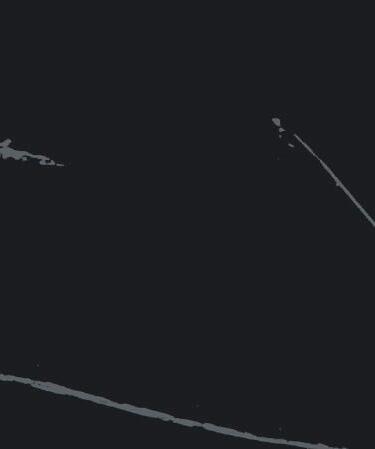
As Dr Joan Harvey, a chartered psychologist at Newcastle University, points out: ‘Perception isn’t what you see.’ A lot of filtering goes on and it is estimated that up to 90% of what we see is filtered out. Consequently, perception is highly selective.
‘What we in psychology try to do is understand the basis on which things are selected in and out,’ she explains.






Risk perception, she adds, is ‘hugely complex’. Humans cannot possibly process everything, so we rely on attentional or systematic biases when we filter. The result is that people’s perceptions of risk can differ from reality.
Aaron points to the World Risk Poll (LRF and Gallup, 2022) to illustrate the point. As part of the global survey, LRF asked respondents seven questions that covered seven specific big risks. One was violent crime, and another was harm at work (the others were food, water, severe weather events, traffic or roadside accidents and mental health issues).
‘If we look at violent crime, 32% of people globally were very worried about experiencing this. However, only 7% of people globally had personally experienced it. There’s a huge gap there,’ he says.

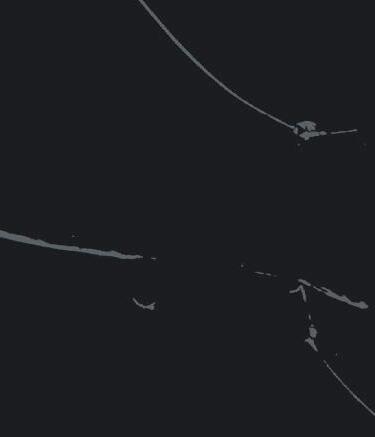



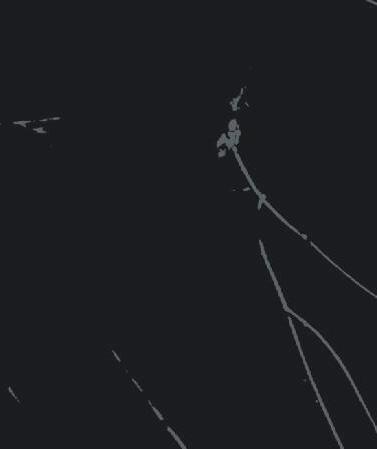







































people globally were very worried, but 21% of people globally had experienced it or knew someone who had. Out of the seven risks that we asked, that is the only one where the experience was greater than perception or worry.’
‘If you look at harm at work, 19% 9% of p but 21% o people it or k t the r risks that we asked, that is the w where the experience was greateer than p
H Harm

The fi perception of harm severity, and how seriously we take it, is an important motivator. ‘The outcomes of violent crime are much more concerning and worrying to people. You can see it in the news.
‘Harm at work can be equally impactful, but it doesn’t appear in the news and therefore perhaps people are not as concerned about it. Their perception of it is much lower, even though they may be more likely to experience its eff
findings, he says, suggest that t h how t outcomes are m be but it d and concerned ed Their much lowerer, effects.’

director at Kevron p d IOSH has written a t t e





























































Kayode Fowode, director at Kevron Consulting and past IOSH vice-president, has written a thought-provoking post on LinkedIn about the disconnect that exists (view it at bit.ly/LinkedIn-KayodeFowode). ‘When there is a disconnection, it leads to wastage and ineff management of risks in an organisation,’ he argues. ‘For example, if an employer has perceived a risk as being high, if you are not careful you can invest considerable resources in trying to control the risk, which may not align with the employee’s perception of the risk or the real risks that you should be focusing attention on.’

Joe Smith, group health and safety manager at Thomas Armstrong (Holdings),

impact of risk perception on workplace
‘When there is a it effective or argueses. e i h, are not careful ful to the gn perception o k or the real risks that you should be focusing att attention on.’ an and (H g is another OSH professional who has has drawn on his own experience to highlight the of risk on behaviour (view it at bit.ly/SHP-JSmith).
Joe believes harm workers’ attention m n










t n theory, themselves
Joe believes severity of harm focuses workers’ attention more than anything else. This is part of the thinking behind protection motivation theory, which suggests that people protect themselves based on the two factors of threat appraisal and coping appraisal (Marikyan and
based on the two factors of th f yan and Papagiannidis, 2023)
Johan returns to the example of the he employee with the gun to explain how this is can

theory can influence risk perception. ‘In the threat appraisal part of his thinking,
and that there are many other infl factors, including personality traits and cultural infl
influences.
Reflecting on his various roles, Joe he has often come across the ‘it won’t to me’ attitude. believe that serious harm or and not the rson’s fault and that differently to

says he has often come across the ‘it won’t happen to me’ attitude. ‘People subconsciously believe that serious harm or death always happens to other people and not them. They may think it was partially that person’s fault and that they would have done something diff avoid it happening.’




















he perceives the severity of an incident and his own vulnerability to be on the high end of the scale. What does not then feed into the equation is the remoteness of the event




he perperceives the severity of an incident and his own vu n high Wh
the equation is the re e remoteness of the event eventually happening ’ motiv motivation pro
Interviewees all agreed that motivation protection theory is only one contributor,
There can also be a general perception in the workplace that safety isn’t that important, adds Joan, which distorts risk perception. This can be particularly problematic when the reality is that workers are using old and hazardous equipment where safety wasn’t built into the design and there is pressure to take shortcuts. Add to this the social eff how others behave.
‘If other workers are taking risks and disregarding rules, and the majority that do it seem to be getting away with it safely and are earning more money, then that’s the sort of thing people will

There can also be a isn’t that distorts risk can when the w ipment e ispressure to take Add to effect of ‘If other workers are risks and rules, and the that do it seem to be getting away with it and are more money, then that’s the sort of do,’ she says.

A client had to part with an employee who thought to bring a gun to work
to art with an emp who it appropriatriate to bring a gun
There are also huge inconsistencies even within the same sector. Joan has undertaken research on safety culture in the nuclear industry and makes an important point.
‘The people working there will be highly conscious of radiological safety and then some may drive like idiots in their cars on the way home,’ she says. ‘You don’t necessarily transfer safe attitudes from one domain to another. Your perception changes accordingly.’
She also says that how risk is framed is critical. In other words, if you present the same information in two diff it will influence how people perceive the likelihood of something happening. In rst instance, they may take more precautions, in the other more risks.
o There are also ame sector. Joan even sam ch undertaken research try in the nuclear industr g alradiologica ots in their cars idiot ys.say attitudes from a one domain to another. Y changes accordingly ’ risk is framed is if you present the critical. In other words, i wo different ways, eoplepe ng likelihood of somethin hey the first the e other more risks. o
Kayode and Joe both agree that OSH professionals should constantly promote risk awareness. This could include telling workers that even though they’ve had one near miss or one incident, it could have led to a fatality, says Kayode.
oe OSH promote sh ess. include risk awarenes hat workers th near mis to a fa
Another important action is educating employees about the hazards – including occupational health risks that are not immediately threatening, such as silicosis – through providing inclusive training.






the hazards –health risks that are not such as silicosis inclusive y ol nagemanag en is that with Kayode says. ‘What we’ve seen ol r red
‘If they understand the hazards, they will understand better how to control them and what they need to do to manage safely,’ Kayode says. ‘What we’ve seen is that with humans, if you can control risks, your risk perception begins to reduce, and you close the gap between real risk and passive risk.’
n real risk and passive risk.’ rea
Height
hten awareness
Jo critical. ‘If he says. without ods periods accidents any acci n’t mean that

Joe adds that keeping the pressure up is critical. ‘If we are all doing our jobs right, the workplace should be pretty safe,’ he says.
‘But that doesn’t mean it isn’t without its risks. Quite often you’ll go for long periods where you don’t have any serious accidents. However, their absence doesn’t mean that it is safe. It’s when you get complacent that
e risks.’ you start to take risk
One of the pandemic was that of public trust pand
One of the issues that arose
in various institutions, including employers. Although respondents were surveyed pre-pandemic, Aaron says the LRF’s 2019 World Risk Poll showed that a promising 80% of respondents felt safe in reporting workplace safety concerns (LRF and Gallup, 2020). ‘However, the 20% that don’t have that trust are cult to target and you need the right person to communicate with them,’
nstitutions, in various in A e-pandemic,pre W g g in ‘However, G d difficult to person to he says. concurs: ‘You need to be able to Joe c nect with people on a human level conne d recognise that they don’t believe and ay ou or don’t agree, and then find a wa you way of getting the message across in a wa o
they understand.
is where the credibility of the ‘This is fessionalprofe break management” between “m o win rust.’tr







OSH professional is really important. You have to be able to break down that barrier between “management” and “employee”. You’ve got to be able to win people over by earning trust.’
This is important when it comes to assessing risk and mitigating it. The World Risk Poll touches on this in its ‘violence and harassment at work’ module. Although globally 21% of respondents said they had experienced some form of violence or harassment at work – whether it was physical, psychological or sexual – regionally there were huge variations. Australia, New Zealand, the US and Canada all scored highly. However, in central Asia, only around 5% said they had experienced it (LRF and Gallup, 2022).
smentassess itigation and risk mi tant when it comes to import ollPo at h obally Although gl of e arassmentha al,physica t ew Canada Ne ighly.hig d d





































planation is that respondents One exp feel comfortable telling someone may not fe heir experience, especially on a about the ve issue such as sexual harassment, sensitiv his reluctance may be reflected to and thi e degree even in an anonymous poll. some




ORMANCE GING PERFOR MANA GI hreats to From t e benefits employee
Johan Botes, partner and head of the employment and compensation practice at Baker McKenzie, argues that employers who take their employees’ perceptions of risk into consideration could use these insights to improve underperformance and – even better – manage misconduct.
Johan Botes, pa Ba ons performanceunderpe
If ‘If I an




can take,’ he ‘How do you factor that into staff ? them could


to talk about these or slack by them different
‘If I am not making my monthly targets or I have other behavioural problems and the underlying reason for that is my fear of risk to myself, my family and property, there are steps employers can take,’ he argues. ‘How do you factor that into managing your staff ? By providing them with support through employee assistance programmes. This could include getting psychologists on board to enable employees to talk about these issues, or cutting employees slack by giving them different forms of leave or time off.’
b
Survey respondents overestimated the chance of catching or dying from COVID
‘In a small number of countries, we were not able to ask about that because it wasn’t seen as socially acceptable,’ says Aaron. ‘However, you could also imagine lots of people wouldn’t feel comfortable talking about their experience of sexual harassment at work, even when it’s anonymised. The whole issue of reporting goes into it and whether it is socially acceptable to talk about it in that country or if the individual feels comfortable discussing it at a
‘In a small number of we were not to that it wasn’t seen as acceptable,’ says also lots of wouldn’t feel comfortable talking about their experience sexual harassment at work, even when it’s The whole issue of goes into it and whether it is it in that or if the individual feels comfortable it at a personal level.’
One of the follow-ups in this module was the question: if they had experienced either violence or harassment at work, did they tell anyone and if so, who? It nd out the reason why they didn’t tell anyone if they had not.
One of the in this module they either violence or harassment at did tell and if also sought to find out the reason didn’t tell if had not.
‘We had all these things like fear of punishment and fear for personal
‘We had all these like fear of and fear for





reputation, but generally they weren’t as important. It was often that people didn’t think it was going to go anywhere,’ he says. This was especially the case among migrant workers.
‘The next highest reason for migrant workers, in particular, was that reporting procedures were unclear. They had experienced violence or harassment at work, but didn’t know how to report it.’
Aaron says this suggests that reporting procedures need to be made more transparent, easily understandable and accessible to all.
‘People also need to see that things really happen as an outcome,’ he says. ‘This is something that we talk about as a big call to action. If people see that their concern is investigated properly and that there are actions that happen because it was investigated, then people are going to be more likely to talk about it.’
The harm at work question also reveals some interesting differences between men and women and older and younger workers. To start with, it was the only one among the seven risks where men were more worried than women about experiencing it (3% more), and also
the one where men were more to experience it (also 3% more). at other
the one where men were more likely to experience it (also 3% more).
Looking at other demographic splits, younger people were more concerned and also more likely to experience harm at work than older age groups. This was particularly the case when you look at people in the lower income quintiles within their country (LRF and
and also more harm at work than older age groups. the case when you look at in the lower income quintiles within their country (LRF and Gallup, 2022).
Aaron ‘If the lowest 20% of 20% of earners, the lowest earners were most to be concerned about harm at work and the most it make statement a young person in the most and a man, are the most to be concerned and the most to harm.’
Aaron says: ‘If we split people by the lowest 20% of earners up to the highest 20% of earners, the lowest earners were most likely to be concerned about harm at work and the most likely to experience it. You could make the statement that being a young person working in the most precarious and poorest 20% income group, and being a man, you are the most likely to be concerned and the most likely to experience workplace harm.’
Global market and opinion research specialist Ipsos has been researching public misperceptions for several years. Its Perils of perception findings have shown the following:
58% of people in Britain think they have a better view of reality than the average person; only 27% think they don’t (Ipsos, 2018).
1 in 3
They think 12% of people die from cardiovascular diseases each year; in reality, the figure is 29% (Ipsos, 2020).
30%
These insights are incredibly instructive, and Johan argues there are important employment gains to be had if employers ‘are alive to how employees’ risk perception impacts on their own behaviour’ (see From risk threats to employee benefits on page 31).
‘Understanding risk and people’s behaviour in perceiving risk is a critical arrow in every manager’s quiver, which will allow you to make better workplace decisions,’ he says. ‘It can also help us to get to the root cause of problems rather than superficially Band-Aid over issues that continue to manifest in other workplace problems.’
Cancer is the biggest cause of death in the UK but we underestimate its scale. The average guess is that 19% of people die from cancer each year when the real figure is 30% (Ipsos, 2020).
0.9%
We overestimate the scale of deaths related to substance abuse. The average guess is 7% in Britain when the actual figure is 0.9% (Ipsos, 2020).
1 in 100
Suicide accounts for 1% of deaths across all ages in the UK. On average, people guess 8.7% (Ipsos, 2020).
For references,
For references, visit ioshmagazine.com/ distorted-perception















Perception isn’t what you see. It’s estimated up to 90% of what we see is filtered out
Find out how at
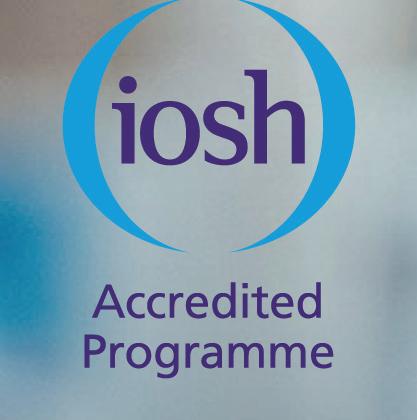
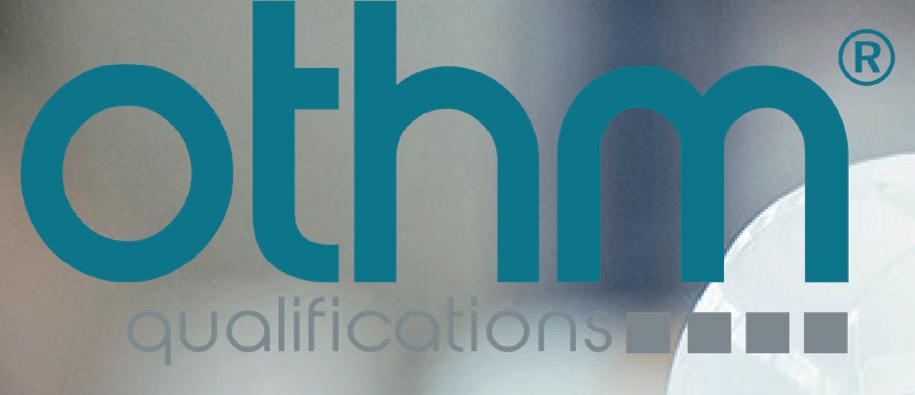







Our Continuing Professional Development (CPD) courses make sure you’ve got the skills and knowledge to stay at the top of your game.
Covering a wide range of technical competencies and workplace challenges including:

• leadership skills
• CDM
• modern slavery
• stress management
Our CPD courses will give you the tools and resources to ensure you learn, develop and exceed in your career.
Scan the QR code or visit iosh.com/cpdcourses to book your place
In 1998, four researchers at Ohio State University in the US showed a series of pictures to research participants while recording electrical activity in the cerebral cortex (Ito et al, 1998). Pictures designed to elicit a positive response – of ice cream, pizza, a Ferrari, and people enjoying a rollercoaster ride – were shown alongside images of a dead cat, a decomposing cow, a mutilated face and a handgun, all designed to prompt a negative reaction (Ito et al, 1998). The researchers also showed participants neutral pictures, such as an electrical socket, a hairdryer and a plate. They
Human brains are hardwired to focus on negatives more than positives. How can this knowledge help OSH professionals learn from both failure and success?
 WORDS ANNA SCOTT
WORDS ANNA SCOTT
found considerably more electrical activity in the brain in response to the negative pictures than positive or neutral imagery, supporting the concept of negativity bias. Our attitudes and behaviour are influenced more strongly by negative rather than positive inputs, the researchers concluded (Ito et al, 1998). We also tend to remember negative experiences for longer than positive ones (Baumeister et al, 2001).
‘From an evolutionary perspective, it made sense for our ancestors to be more attentive to negative than positive events,’ says Dr Rob Yeung, organisational psychologist at leadership consulting firm Talentspace.
‘Being aware of an enemy wielding a club or a vicious animal baring its teeth was much more important for preserving our predecessors’ lives than the need to focus on smiles or pleasant experiences.’
Positive inputs are crucial for several reasons. Another study in the 1990s, this time of married couples over a fouryear period, suggested that for romantic relationships to be successful, there should be at least five positive interactions for every negative interaction (Gottman and Levenson, 1992). More recent studies point to how crucial fundamental positive emotions and feelings are for resilience, happiness and satisfaction, which ultimately lead to better physical and emotional wellbeing (Alexander et al, 2021).
Another issue is the magnitude of the emotional reaction to errors. When we make a mistake there is a sharp negative electrical activity at the top of the brain that is thought to come from the cingulate cortex deep inside the front of the brain. The cortex detects the error and sends an alert signal to other parts of the brain, and our attention is focused to decrease the likelihood of making another, or the same, mistake (Overbye et al, 2020).
Organisational psychology has a role to play in helping OSH professionals and employees learn from safety failures, and organisational psychologists examine how different dynamics affect the performance of both the organisation and its employees. This includes looking at how decisions are made, how effective communication is, and the kinds of skills and abilities employees have.
Dr Rob Yeung, organisational psychologist at leadership consulting firm Talentspace, often helps teams run sessions in which they discuss their work performance with a view to doing better. ‘Yes, it is important to focus on negative situations such as errors and failings,’ he says. ‘But
‘Learning is faster with negative things precisely because it has a stronger emotional impact,’ says social psychologist Professor Roy Baumeister. ‘[Negatives] intensify learning and mobilise emotion, so people pay closer attention and think about things more.
‘The mind overreacts to the negative. When something goes well and you succeed, you don’t have to analyse it because everything works.’
Negativity bias affects other aspects of our behaviour, relationships, and ability to perform at work. We tend to make decisions based on negative information
there are some key principles for debriefing such events.’
For example, it is crucial to look back at specific events rather than general performance. And teams that review things successfully must be encouraged to adopt a curious, non-judgemental attitude. ‘This can be really difficult and I often need to pull people back gently when either their words or tone of voice start to slip into a more critical way of reflecting on things,’ he adds.
‘In addition, teams must get input from multiple parties or even objective sources of data. So, it can’t just be one voice – such as the leader’s – having all or even most of the input.’

more than positive (Cacioppo et al, 2014). We also tend to have less motivation to complete a task with an incentive to gain something than we do when the incentive is to avoid a loss (Goldsmith and Dhar, 2013). We might expect the worst in others and negatively anticipate reactions, which leads to defensiveness (Cherry, 2022).
However, positives play a crucial role in learning and behaviour too. Roy cites an example of an academic who was known for only giving criticism. The four positive pieces of feedback he received he remembered much more because they were ‘so surprising’. ‘You can learn much faster
‘When an organisation adopts a learning mindset, it allows it to draw on all the evidence and information on emerging risks or the low risks that could escalate,’ says Karen McDonnell, OSH policy adviser at RoSPA. ‘Through implementing control measures to remove or mitigate those risks, learning allows sustainable improvement and increases the safety and reliability of an organisation’s processes.’ Karen points out that a team approach to learning from accidents involving employees and safety representatives ‘can be extremely powerful, particularly if it is led by senior managers and supported by OSH professionals’.

KEY STEPS
• Taking prompt emergency action
• Prompt reporting within the organisation and to other agencies where necessary Securing the scene (preventing disturbance of vital evidence)
• • Deciding on the level of investigation required (according to safety significance, learning potential) and establishing terms of reference and allocating responsibilities in the investigation process
• Gathering the evidence (establishing the facts by gathering physical evidence, conducting witness interviews, identifying documentation)
• • Analysing and integrating the evidence (putting the facts together)
• • Identifying gaps in the evidence (significant unknowns) and seeking further evidence and/or clarification (for example, by studying previous events that may be relevant)
• Developing and testing hypotheses – what happened, how and why (again looking for further evidence if necessary)

• • Generating conclusions and recommendations
• Communicating recommendations and tracking closure with stakeholders.


when you get both positive and negative feedback,’ he says.
Ian Langston, director at accident investigation training provider Kinaston Associates, has specialised in looking at the causes of loss events in different businesses for 20 years. ‘[The process] –although focused on negative bias – also considers positive bias. One question we should ask is, what has worked to bring us to this position? Why don’t we celebrate how well we are doing?
‘Often we see what amounts to repeat events: the same event happening over and over again. It might be prudent to examine not just why no learning had taken place, but also why the same or similar remedial actions were failing and still considered to be acceptable.’
Focusing on prevention, as well as creating a positive workplace culture by empowering team members with knowledge, tools and motivation, is crucial. ‘This is especially true in high-risk sectors such as construction, manufacturing and mining,’ says Karen McDonnell, OSH policy adviser at RoSPA. ‘This cannot be achieved without taking health and safety seriously and developing a watertight strategy that is based on evidence and historical events.’
Avoiding a blame culture is essential. When humans are blamed for incidents, any systemic issues that led to failure can be missed and trust between individuals in the organisation is eroded (Timms, 2022). Instead, understanding that failures are process-driven and not people-driven is crucial. ‘Encourage employees to talk about what they see and hear in the workplace, whether good or bad, and continually strive to create better communication and camaraderie’ (Dement, 2023).
Karen says: ‘Learning from incidents is just one of many parts of managing safety within an organisation. If all stages of learning from the analysis are properly implemented, it should lead to changes in behaviour or improvements in technical process.’
When organisations look at loss as a holistic process and the work environment as something that is driven from the top, learning from positives can happen, Ian says. He uses four factors to examine the positives and negatives that can be taken out of an event: values, attitudes, attributes, and expectations.
‘An individual who is working on the coalface might have very different values

or attitudes to what the organisation states they should be,’ he adds. ‘So we need to explore why that is.’ That means teaching people to interview others in the event of something going wrong and having good data about losses and successes.
Understanding that the human brain has evolved to pay more attention to negatives than positives can help OSH professionals maintain a mindset of seeing mistakes as learning opportunities.
For references, see ioshmagazine. com/learning-from-mistakes
How many accidents are there at work in Britain?
135
workers were killed in work-related accidents in 2021 and 2022 (HSE, 2023)
61,713
employees had a non-fatal injury, as reported by employers in 2021 and 2022 – a rate of 222 injuries per 100,000 workers (HSE, 2022)
565,000
workers self-reported that they sustained a non-fatal injury in 2021 and 2022 – a rate of 1790 injuries per 100,000 workers (HSE, 2022)
68
members of the public were killed due to work-related accidents in 2021 and 2022 (HSE, 2023)

Beonestepahead.Developyourprofessionalstatuswithafive-daytrainingcoursethatwill placeyouinagroupofpeoplewiththemostdesirableskillsontheplanet.
Witharevisednetzerostrategyandasharpfocusonenergysecurity,businessesmustbemore ambitious.Environmentalsustainabilitytargetsareuseful,butweneedknowledgeableand skilledpeopleinbusinesses,acrossallindustriesandprofessionaldisciplines,toactionthem.
Findoutmoreatiema.net/training

WORDS CLAIRE MOULDS
Rising temperatures and extreme weather events represent a danger to life in their own right, but they’re also fuelling the spread, frequency and severity of outbreaks of disease around the world.
In response, climate change is recognised as the greatest threat to human health of the 21st century, according to the World Health Organization (WHO, 2021).
Around 58% of infectious diseases faced by humanity worldwide have been shown to be impacted by climate hazards, through over 1000 unique pathways (Mora et al, 2022).
According to the Intergovernmental Panel on Climate Change (IPCC, 2022), new

weather patterns are already facilitating the spread of the following:
Chikungunya virus in North, Central and South America, Europe and Asia
Tick-borne encephalitis in Europe
Rift Valley fever in Africa
West Nile fever in south-eastern Europe, western Asia, the Canadian prairies and parts of the US
Lyme disease vectors in North America and Europe
Malaria in eastern and southern Africa

Dengue globally.
As climate change creates the conditions that enable diseases to thrive in new locations worldwide, ‘it’s not an issue here’ needs to be replaced with, ‘could it become
an issue here?’ Disease prevention and mitigation is always preferable to reacting to a subsequent outbreak from scratch.
What’s fuelling the crisis?
Vector-borne diseases occur when organisms such as mosquitoes transmit bacteria, viruses and parasites to humans. Climate change has already increased the geographical area in which vectors can find optimum conditions to thrive, and this is only set to grow, bringing diseases to regions and countries for the first time.
The issue was recently addressed at a meeting of the House of Commons
Science, Innovation and Technology
Select Committee – as part of its inquiry into emerging diseases and learnings from COVID-19 – with experts invited to share their thoughts on which potentially deadly diseases could reach the UK as rising temperatures enable the insects that transmit them to extend their territory further north (UK Parliament, 2023).
Meanwhile, zoonotic diseases, including
How climate change is driving the global spread of disease, and what steps the industry can take.
Lassa fever, are caused by pathogens and parasites that can be transmitted to humans by animals. Deforestation, changes in land use and food and water insecurity due to climate change are bringing people, livestock and wildlife into ever greater contact, increasing the risk of transmission and new diseases emerging.
Waterborne diseases such as cholera are caused by drinking or coming into contact with contaminated water containing bacterium such as Vibrio cholerae, E coli or faeces from an infected person or animal. Both drought and high rainfall can increase the risk of infection, with the former leading to an increased concentration of pathogens in water and the latter leading to contamination of wastewater.
Changes in temperature are also associated with an increase in foodborne diseases, as warmer weather leads to bacteria, such as salmonella, multiplying more quickly, heightening the contamination risk from farm to fork for workers and consumers.

According to the US Centers for Disease Control and Prevention, fungal diseases such as valley fever – a lung infection caused by a fungus living in the soil – are also spreading northwards to areas where the climate previously wouldn’t support fungi growth (CDC, 2021).

Many of the poorest in the world face the greatest climate-related challenges. A lack of access to clean water and sanitation, good nutrition and healthcare leaves these populations particularly vulnerable to infection.
Employers in these regions might therefore wish to review where their responsibility for the health and safety of employees starts and ends in the face of this growing crisis, and consider the following:
Providing a daily nutritious meal
Supplying mosquito nets and other

The World Mosquito Program (WMP) breeds mosquitoes that carry the naturally occurring bacteria Wolbachia – which reduces the ability of the Aedes aegypti mosquito to transmit viruses to humans – and releases them into targeted locations.
These then breed with the local mosquito population so that, over time, the proportion of mosquitoes in the area carrying Wolbachia becomes high enough for further releases not to be required.
As the Wolbachiapositive mosquito population becomes selfsustaining, the approach creates a long-term, cost-effective and entirely natural solution.
First deployed in Queensland, Australia in 2011, the not-for-profit initiative has been so successful that Far North Queensland is now effectively a dengue-free area for the first time in more than 100 years.
‘While the ministry of health and government agencies will ultimately determine where we can release mosquitoes, community involvement is at the heart of everything we do and an area where local organisations and

businesses can play a key role in protecting their employees and their families,’ says Kieran Walters, director of global functions and strategy at the WMP. ‘Helping to raise awareness of the project, as a trusted voice in the community, is an invaluable form of support, as is supplying vital equipment, resources and funding.’






New Caledonia is a textbook example of this partnership approach. Energy provider EEC ENGIE used its website, social networks and other communication channels to inform residents about the Wolbachia method. Postal and telecommunications service OPT allowed WMP to use its billboards to display Wolbachia announcements, provide mobile phone cards for staff and negotiate a special rate to distribute project flyers. Sports retailer Decathlon provided backpacks and raincoats to improve working conditions for the field team.
WMP is currently partnering with communities in 13 countries around the world. If your organisation would like to support its work, visit worldmosquitoprogram.org/ en/get-involved/contact-us
protective measures to be used by a worker at home
Offering access to basic medical care, including vaccinations and antibiotics
Establishing a safe water supply in the community as part of an organisation's corporate social responsibility strategy.
‘Globalisation is expanding our responsibility for workers, their families and communities,’ says Kris Murray, professor of environmental change and health and co-director of the Centre on Climate Change and Planetary Health at the MRC Unit The Gambia, London School of Hygiene and Tropical Medicine.
‘As consumers, we’re already familiar with concepts such as sustainable coffee, and how our purchase decisions impact producers. The same applies for disease, as demand-side drivers are a contributing factor to a range of infectious disease risks in producing countries. It’s a complex web
but, ultimately, everyone is connected and potentially implicated.’
Outdoor workers also bear the brunt of the risk, both in terms of exposure to the causes of disease and the control methods to manage them.
‘Although employers might be taking the issue of climate change seriously, preventive and protective measures are still lacking, especially for outdoor workers,’ confirms Shouro Dasgupta, environmental economist at the Euro-Mediterranean Center on Climate Change and visiting senior fellow, Grantham Research Institute, London School of Economics.
Pesticides present a particular challenge in extreme heat as an increase in bloodflow and sweat can lead to greater absorption of toxicants. High temperatures may also accelerate the dispersal of pesticides, increasing the density of airborne particles.
In hot temperatures, workers might be disinclined to use PPE due to discomfort. Employers may need to source alternative PPE designed specifically for these conditions, and offer more frequent breaks so that employees can recover from wearing it (EU-OSHA, 2023).
However, controlling vectors is key: by eliminating their breeding grounds, removing their food supply and taking pest control measures (using pesticides, rodent traps or innovative new approaches – see A natural solution, page 41), companies are tackling the root cause of the problem.
Kris says: ‘Beyond chemical approaches, many countries are looking into other ways of controlling the epidemiology of disease, such as through species introduction to control disease pest populations (biocontrol), developing new vaccines for known (and potentially as yet unknown) diseases and by manipulating the natural populations of disease-carrying species by introducing
As a result of climate change, dengue vector ranges will increase in North America, Asia, Europe and sub-Saharan Africa, potentially putting another 2.25 billion people at risk (IPCC, 2022).
In Central and South America, the reproduction potential for the transmission of dengue increased between 17% and 80% for the period 1950-54 to 2016-21 as a result of changes in temperature and precipitation (IPCC, 2022).
An increase of 2 to 3°C in global average temperature will affect the migration pathways of mosquitoes, increasing the population at risk of malaria by 3% to 5% (Health and Environment Alliance et al, 2021).
The number of months suitable for malaria transmission increased by 31·3% in the highland areas of the Americas and 13·8% in the highland areas of Africa from 1951-60 to 2012-21 (Romanello et al, 2022).
In Europe, the average annual number of temperature-related cases of salmonellosis under highemission scenarios could increase by up to 50% more than would be expected on the basis of population change alone by 2100 (IPCC, 2022).
The number of emerging infectious disease outbreaks has increased steadily since 1980; up to 75% of new or emerging infectious diseases and 60% of the known infectious diseases
are zoonotic in origin (Health and Environment Alliance et al, 2021).
Around 300,000 people in the US and 65,000 in Europe manifest clinical symptoms of Lyme disease annually (Magnavita et al, 2022).
Projections under mid-range emissions scenarios show an additional 250,000 deaths a year by 2050 (compared with 1961-90) due to malaria, heat, childhood undernutrition and diarrhoea. Overall, more than half of this
harmful genes (for example, that cause sterility or prevent disease transmission).’
And, while some workers will be familiar with the issues already, others will need detailed information, advice and support from the OSH team. The organisation will also need to ‘walk the talk’ (for example, by removing standing water from the property, where mosquitoes like to lay their eggs) and encourage employees to take the same safety measures at home (for example, not storing water in basins).
Providing a protective staff uniform of light-coloured long-sleeved shirts, trousers (to be tucked into socks/footwear) and a hat could be supported by the provision of insect repellent. Advising workers to do a tick inspection after work, and what to do if they find one, is also vital.
Shouro says: ‘Employers also need to be aware that, by altering working hours to protect employees from the hottest part of the day, they may be inadvertently putting
them in danger, as earlier in the day and in the evening are when mosquitoes are active and biting.'
The challenges presented by climate change are constantly evolving, as new research leads to greater understanding of its impact.
In this complex arena, OSH professionals need to survey a much wider environment than previously to ensure risk assessments fully reflect the interdependencies between climate change and human health. For example, heavy rainfall can lead to an increased food supply for vectors such as rodents, which transmit hantaviruses, allowing them to breed more, so a currently manageable problem in the working environment could quickly escalate into a major problem.
Identifying areas of weakness in the face of these new challenges and putting robust systems in place is also crucial. The consistent message from disease experts is that preparation is key.
the emergence and spread of new diseases and the resurgence of diseases that were previously under control.’
Shouro agrees: ‘Early warning systems are key as they can provide time to reposition resources and implement control programmes to prevent adverse health outcomes. This is a key part of our work at IDAlert – a Horizon Europe project – as is looking at how people in different occupations are affected by climate changedriven infectious disease and also mitigation and adaptation options.’
In October 2022, the Joint Office of WHO and World Meteorological Organization launched the first global open-access knowledge platform dedicated to climate and health, ClimaHealth. Its resource library includes tools such as the Global Vector Hub, which is currently developing a real-time, interactive disease and vector information function for communities to access.
Earlier this year, the Wellcome Trust – a global, charitable foundation for health research – announced £22.7m of funding for 24 research projects to develop open-source digital tools, including early warning systems, to respond to the threat of climate-sensitive infectious diseases.
excess mortality is projected for Africa (IPCC, 2022).
An additional 1°C increase in mean average temperature is expected to result in a 7% increase in all-cause diarrhoea, an 8% increase in the incidence of diarrhoeic E coli and a 3% to 11% increase in deaths attributable to diarrhoea (IPCC, 2022).
In 2021, fewer than 40% of countries had climate-informed health surveillance systems for vectorborne, waterborne or airborne diseases (Romanello et al, 2022).
As new diseases appear in countries that are unfamiliar with them, OSH professionals can also take the lead on educating workers – and through them, their local communities – on causes, symptoms and ways to reduce the risk both at work and at home, as well as reinforcing good hygiene practice generally.
Tapping into external information sources is also critical, whether national, regional or community-based.
‘Many countries have started to recognise that the basis of many climate-sensitive disease risks is changing,’ says Kris. ‘This is now being factored into risk assessments and biosecurity strategies (surveillance, predictive modelling, early warning systems and population alert systems) for
‘Digital technologies, such as numerical models and early warning systems, are some of the most powerful and useful tools available for understanding and potentially mitigating the impacts of climate on infectious diseases,’ says Felipe Colón, Wellcome’s technology lead (Wellcome, 2023).
OSH teams might also want to establish their own tracking system of climate-related disease in the workplace and potential drivers (weather, working hours, time of year, working environment) to identify patterns and possible prevention strategies.
Finally, in the face of these new challenges, an open dialogue with staff is critical to coming up with the best, most effective and – most importantly – feasible solutions to a potentially life-threatening problem.
To view references for this article, visit ioshmagazine.com/ climate-change-disease
THE CONSISTENT MESSAGE FROM DISEASE EXPERTS IS THAT PREPARATION IS KEY
Paul Verrico CMIOSH and Sophie Parkin at law firm Eversheds Sutherland consider the history of the Andon cord, the psychosocial behaviours the method encourages and the Andon principles that can be implemented in almost any workplace to create and maintain a positive safety culture.
One philosophy underpinning the famous Toyota Production System, which revolutionised Japan’s post-war manufacturing capabilities, employed the concept of ‘pushing the button’ or ‘pulling the cord’. We want to explore this Andon philosophy and translate it into a modern working environment, viewed through the lens of safety.
Meaning ‘light’ or ‘lantern’ in Japanese, at Toyota, Andon referred to the lights flashing on the control panel to indicate problems on the production line. The Andon cord is a tool used when applying





the Jidoka principle, which ensures problems in manufacturing are detected and production is stopped before errors manifest themselves more widely. Jidoka can be implemented by workers notifying their management of a problem (traditionally by pulling a cord or pushing a button) or through automation designed into machines to detect issues, with a human follow-up to provide a fix.
Previously, production personnel left their posts to look for solutions – but with Andon, the solution came directly to the working area.





Jidoka was formulated in 1896 by inventor Sakichi Toyoda, who later became the founder of Toyota. The first production design to put Jidoka into action was a device installed on an automated loom to detect if a thread was broken. Once the device detected the issue, the loom would stop, so defects were not repeated in the process and a worker could then fix the problem. The installation of the device meant product quality issues were immediately detected and addressed, and workers could operate


a number of machines at the same time, increasing productivity.


The traditional Andon cords went a step further. At Toyota, workers could pull the cord above their workstation if they detected a problem in quality or process, which could also include product or workplace safety. The pulling of the cord caused production to stop (either in whole or in part), and other local workers would then move to the area to discuss the issue and fix the problem.
In the modern world, the Andon cord has taken on many physical iterations: buttons or switches, stacked lights atop workstations and automated systems using






sensors designed to warn designated members of staff about problems. A traffic light system is also regularly used to distinguish between normal production (green), a small problem that could become a bigger issue (yellow), and a serious problem impacting production or quality (red).
A fundamental part of the method in practice is that workers are thanked for using the cord and praised for bringing the issue to the attention of the wider group.

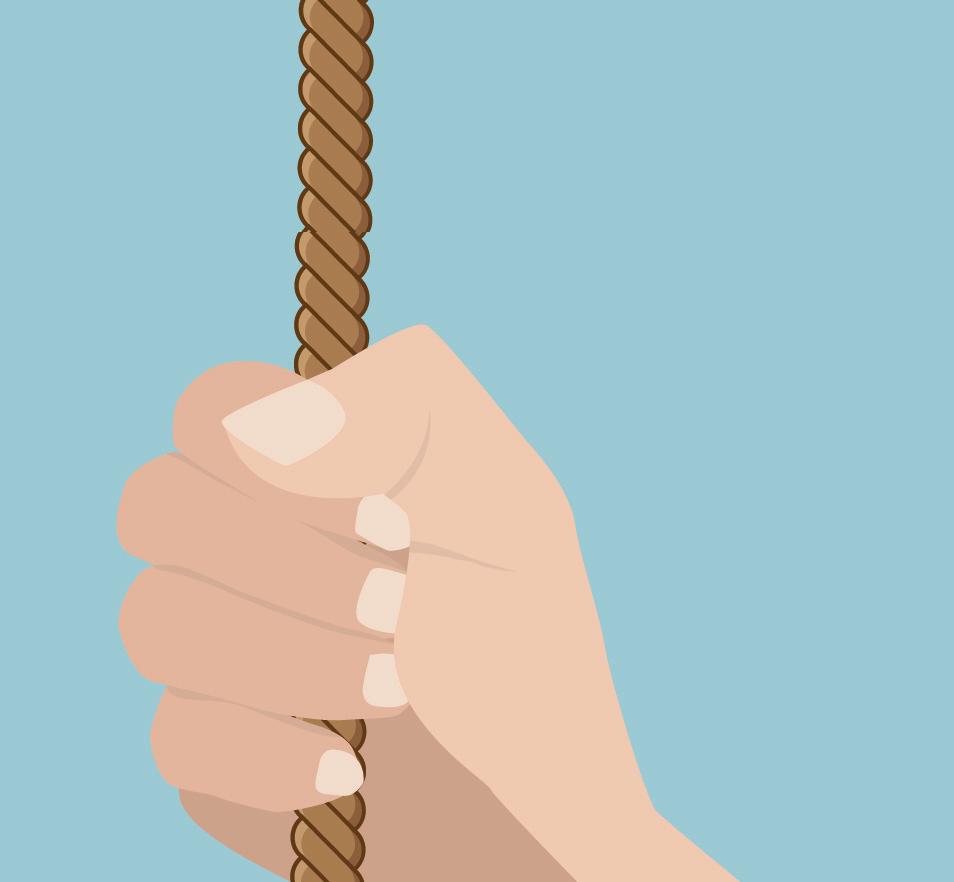
While the principles of the Andon cord have been used in manufacturing processes for more than a century, there are numerous examples of how the same principles are currently being
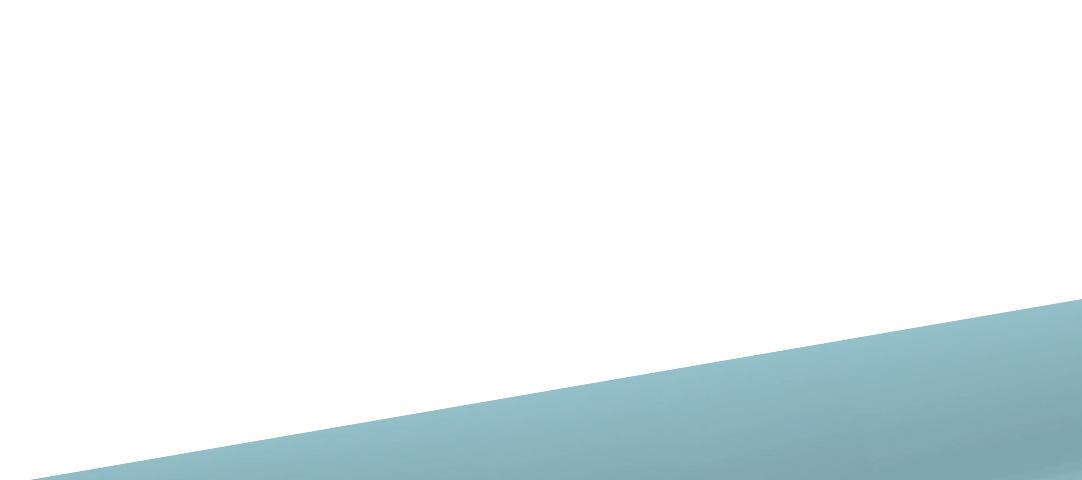










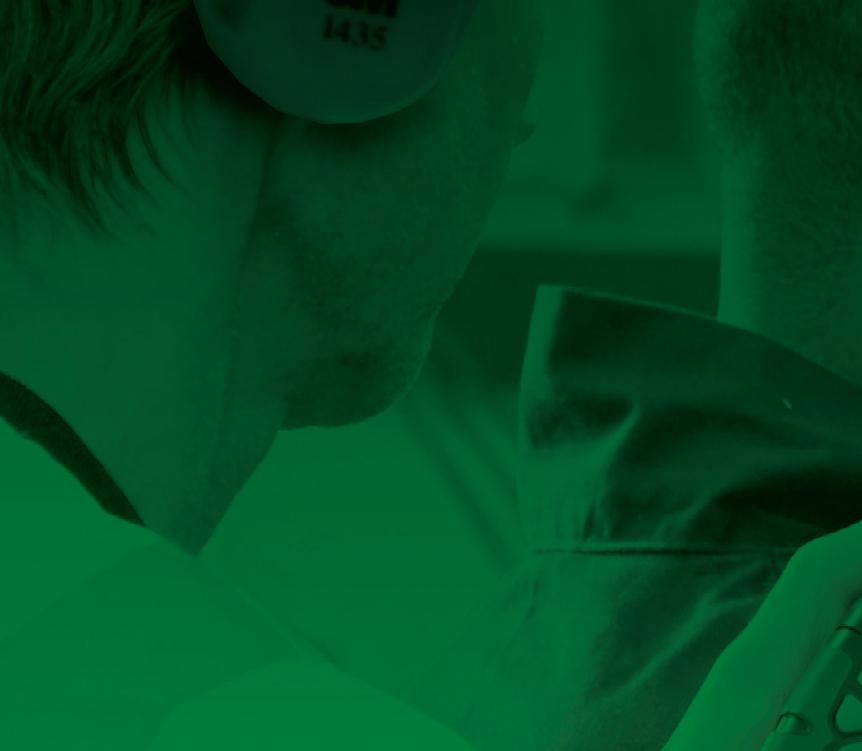


CEL-620 Series Enhanced Digital
Sound Level Meter

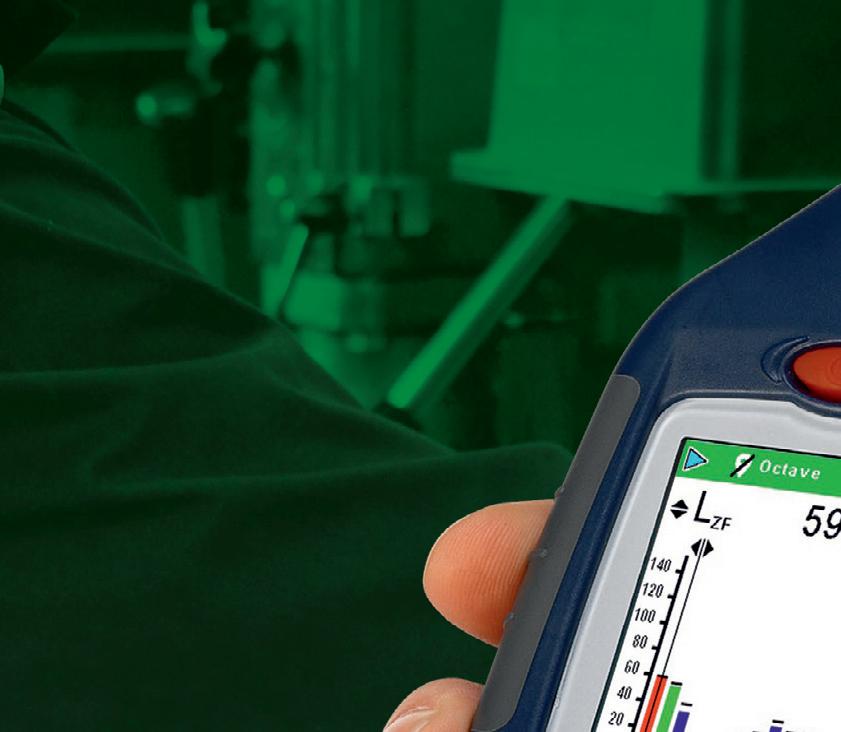

Time history storage (1s to 30min intervals)
Voice notes
GPS
Single large measurement range
Simple operation
Compact, rugged design
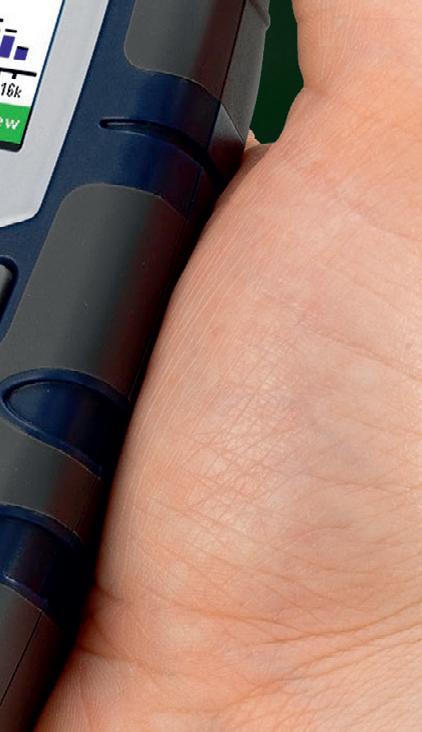

Long battery life
Automatic calibration function


Email: info@casellasolutions.com


Website: www.casellasolutions.com

used in other sectors. For example, it is common for online sales platform customer service teams to use an automated Andon system to detect product issues following customer feedback. When patterns are detected following feedback relating to product quality, alerts ensure the quality issue is inspected and the product page is updated to confirm the item is under review. The principles are also often used in the world of software development, where teams of coders place a card into a ‘help’ column on a shared workboard when they require assistance overcoming a problem. Software developers are also known to routinely develop coding that intentionally enters bugs into a system so issues can be detected, reviewed and fixed.
The Andon cord method aims to increase efficiencies, drive quality output and, ultimately, prevent costly mistakes. Most importantly, it means a business does not only fix the problems in its processes, but continuously improves. But there is more to it than that. In a study of 220 Toyota workers from 11 countries, Osono et al (2009) concluded that the firm is built on soft innovation growing out of its corporate culture, in which workers are challenged to engage daily in problem-solving and suggestion systems. Toyota treats its workforce as knowledge workers.

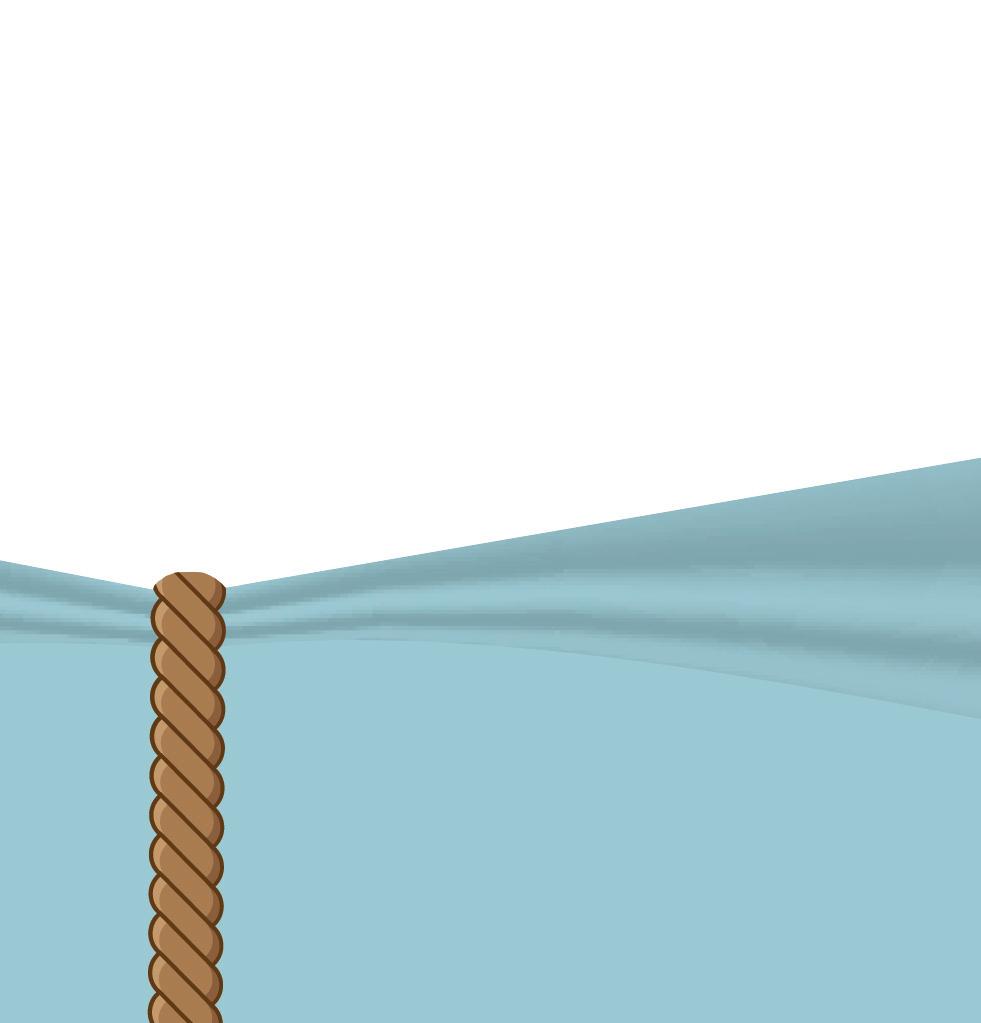
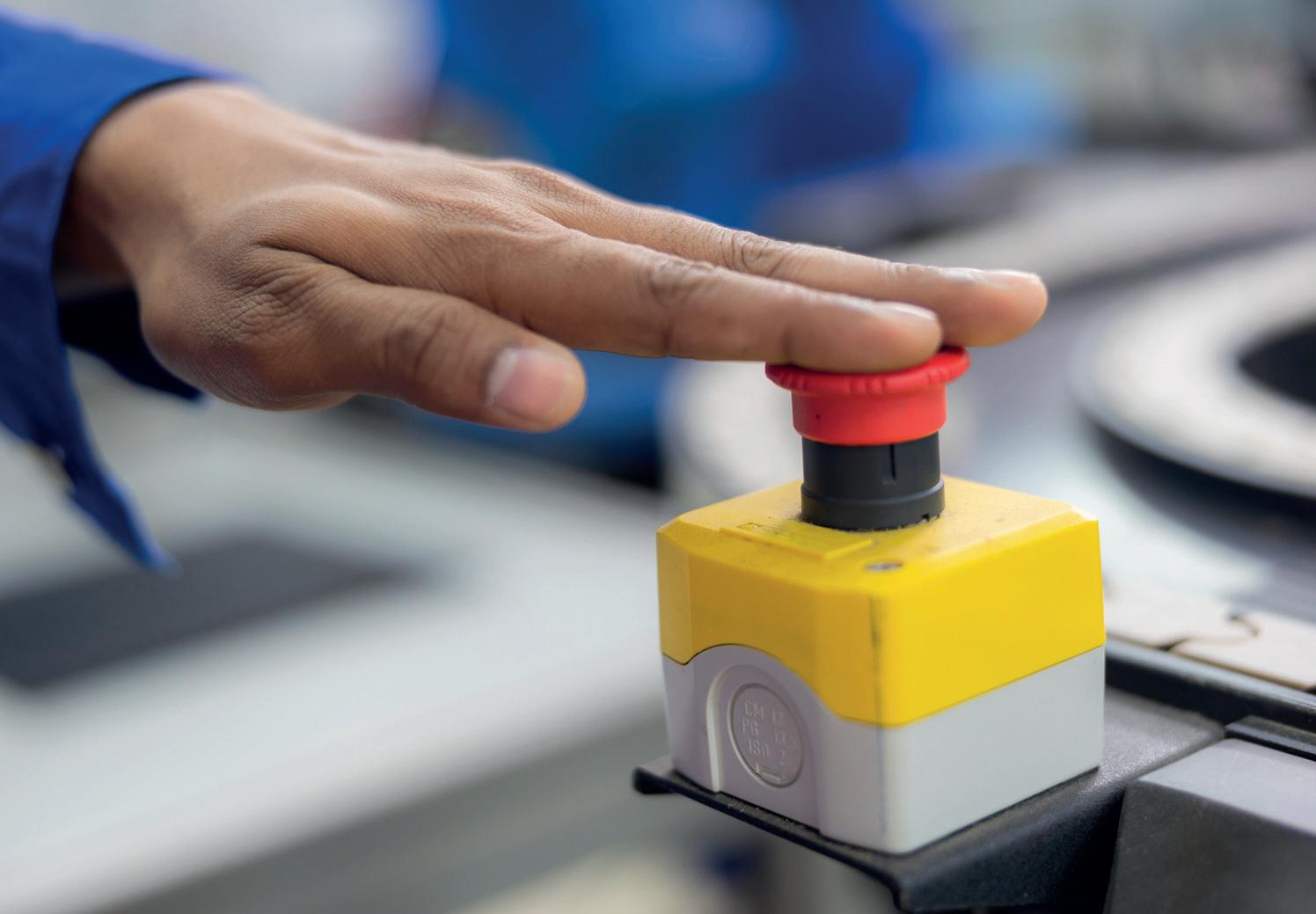
The traditional Andon methods used by Toyota rely upon the engagement of its workforce to identify issues. Operators are
trained on how to spot problems; a crucial part of the system is trusting the workforce to shout for help. Rather than operators being scolded for halting production and delaying progress to hit production targets, the operators are thanked and praised by their peers and management for bringing the issue to the wider group’s attention so that, collectively, the issue can be resolved without further impacting the product or the work.
The system also promotes inclusion, encouraging everyone to be involved in coming up with a solution. There is a

significant interpersonal benefit in pulling the cord or pushing the button.
Perhaps the most challenging part of implementing any Andon method is empowering individuals to pull the cord without any escalation procedure. Andon promotes a culture of reciprocal trust and puts the operative on the frontline at the very centre of the system, giving that individual the power and responsibility to act as the key judgement-maker. For those
Andon promotes a culture of reciprocal trust and puts the operative on the frontline at the very centre of the system
Leaders should encourage people to ask for help when they need it – whether this is through formal meetings or day-to-day interactions.
workers indoctrinated into an Andon culture from the very beginning, it is obviously much easier to see how these concepts can be ingrained in their behaviour but, in most workplaces, there are much more complex management and escalation systems in play. Often those on the frontline can feel unheard when it comes to feedback about any aspect of their role.
Those
raise concerns or
safety promotion should be rewarded.
Escalation procedures shouldn’t be too complex; employees should have visibility on who they can go to.
In the work we do, we find there is often a grunt or a grumble directed at staff who raise concerns within the workplace. This can lead to a culture of simply keeping your head down and getting on with it, or patching up issues with a quick fix and not considering the root cause of problems.
All escalations should be dealt with promptly, engaging the appropriate stakeholders in the business.
Regular team meetings should be held to promote collaboration and give employees a voice and a forum for open discussion, without negative consequences or judgement.
Employees should have the ability to report their concerns anonymously if they choose to; some people are uncomfortable speaking up in larger groups and may find articulating their concerns in writing a more favourable method.
Any concerns raised should be taken seriously and acted on promptly, sharing the outcomes with the workforce so they understand why (or why not) a change has been made.
In the majority of Eversheds Sutherland’s cases where serious incidents in the workplace have occurred, we find an element of complacency within the workforce. Staff members are not following procedures they have been trained to carry out; others might be aware procedures are not followed but allow their colleagues to get on with it; and some employees implement their own quick-fix methods because it takes too long to resolve the issue, or the issue keeps repeating itself.
Businesses tend to think they have a positive safety culture that encourages the sharing of ideas and identification of issues. However, when we speak to those on the ground, the opposite is often found to be true.
All OSH professionals and operational managers would do well to think about the psychological safety aspects built into the Toyota system.
Paul Verrico is head of the EHS team at Eversheds Sutherland; Sophie Parkin is a lawyer in that team.
For references, visit ioshmagazine.com/ES-andon-cord
Mentoringgivesyouan incredibleopportunitytoguide andinspiretheleadersof tomorrowandwatchyourown skillssoar.
RichardBateCFIOSHhasseenour mentoringschemefromboth sides.Atthestartofhis occupationalsafetyandhealth (OSH)career,Richard’smentor guidedhimtotheprofessional developmentresourcesavailable tomembersandthishelped reducethepressurehewas feelingatthetime.

Nowanexperiencedprofessional withavaried30-yearOSHcareer, Richardshareshisknowledge withothersasanIOSHMentor. Richardhasalreadycompleted16 mentoringrelationships, includingBrooklyn-basedJosh Paynewhowantedtobecomea CharteredMember.
“Mentoringhasgivenmefree accesstosomeincredible talentedIOSHmemberswho haveworldclass,often unfamiliarknowledgein specialistareas–justlikeJosh,” saidRichard.
“Joshopenlysharedhis knowledgeofpowergeneration intherenewablessector,which hasdirectlybenefitedmeinmy newrolewithinaglobal, sustainabilitydrivencycling championship,theEBKGPseries”
Mentoringisn'tjustabout teaching—it'satwo-waystreet. Bysharingyourexpertise,you'll reinforceyourknowledgeand gainfreshinsightsfromyour mentees.Richard’sexperienceas amentorhasboostedhisown careerandskills.
“Iampleasantlysurprisedatthe strengthofthefriendshipsIhave builtduringsixyearsmentoring andhowmuchmypersonal profilehasrisenamongstfellow IOSHmembers,”hesaid.
“Mentoringhasmademea betterOSHpractitioner,abetter communicatorandcertainly moresociallyaware–itreallyis thissimple,andalsothenice warmfuzzyfeelingwhena menteebecomesChartered.”
Discoverthetruejoyof givingbackbybecoming amentortoday.
Thebestmentoring relationshipswillseeyou learnanddevelopnews skillsfromeachother. Your menteemaybeyoungeror lessexperiencedbutthere’s manythingstheycanteach you. Adaptyourmentoring approachtotheindividual mentee’sneeds. Everyoneis differentandfindingthe bestwaystosupport someonecanbeasatisfying partofthepuzzle.Italso meansyouaresharpening communicationskillsthat willbeusefulfarbeyond mentoring.

When setbacks happen, resilience helps us cope, recover from stress and move on from the experience. This holds true professionally as well as personally: building and maintaining a strong sense of resilience is vital to help us deal with and prepare for difficult events, which can be frequent in OSH work. It involves a mix of behaviours, thoughts and actions that promote good
mental health and personal wellbeing.
Dr Carole Pemberton, executive coach and author of Resilience: a practical guide, works with individuals and organisations to build resilience in leaders and teams. She offers the following advice:
• Talk about it. When I speak to leaders and managers about how they behave when they are feeling stretched, they
Ruth Wilkinson, head of policy at IOSH, says: ‘Personal resilience could be considered as the most effective tool for managing and coming through adversity. Building personal resilience can be difficult, but working on certain disciplines can improve on that.
‘IOSH’s competency framework has various topics, such as selfawareness, problem-solving, communicating effectively, selfmotivation and discipline, and personal responsibilities and accountabilities, all of which will enable members to build and improve upon their own sense of personal resilience.’
Signs of personal resilience include the ability to regulate emotions, a sense of confidence and control, effective coping skills and the ability to lean on social support when needed. The competency framework is there to help you develop these areas, in addition to following the tips given in this article.
Go to iosh.com/my-iosh/competencyframework
While organisational resilience is essential, OSH professionals also need personal resilience in their roles to deal with incidents, crises and organisational upheavals. We ask the experts how we can boost it.
tell me they withdraw into themselves; they don’t want people to know they are not coping. More helpful for coping is having a person you can talk to who is supportive but also will help you to look at things differently, such as a former boss or a friend in another part of the business. Some teams also create space to talk about what they are finding tough, as this normalises the situation and allows for collective problem-solving.
• Allow yourself to recognise what’s okay. The nature of the OSH profession is to look at what’s not okay, but more supportive of resilience is to recognise that, even while it has been a tough week, there have been times and situations that have been fine – such as seeing progress on a piece of work or holding yourself together in a crisis. When things are difficult, we ruminate, and rumination is the enemy of resilience. Disrupt it by asking yourself if the version you have created in your head is true. What does the data tell you? The data often highlights that the situation is not the version undermining you.
• Look after your own wellbeing. We know that if you don’t get enough sleep, then your cognitive functioning is impaired, and your responses become more emotional. If you have a lot on, eating well is replaced by eating fast, energy-fuelled processed foods, brain cells get inflamed, and the body suffers. And we know that when you exercise in whatever form that means for you, it is a way of getting rid of stress in the body. The relationship between wellbeing and resilience is well established, but often it’s the thing people give up when they feel under stress. The truth is, as leaders have told me, that it is when you are most hard-pressed that you most need to make time for exercise, ensuring you sleep well and good nutrition.
Professor Gail Kinman, visiting professor of occupational health psychology at Birkbeck, University of London, and director of the Council for Work and Health (see Resilience myth-busting above) adds:
• Use a self-care ‘audit’, where you think about what you do to invest in your physical, mental and social wellbeing and decide if
It can be useful to find out what resilience is not, as Professor Gail Kinman, visiting professor of occupational health psychology at Birkbeck, University of London, and director of the Council for Work and Health, explains.
• Resilience is not just ‘bouncing back’; there’s a personal growth aspect to it as well. It’s about learning and growing from these adverse experiences and gaining resources from them, such as renewed confidence and feelings of self-efficacy.
• While you can say that there are certain common features of resilient people, such as being flexible, adaptable, good at problem-solving, having bigger social networks and a stronger sense of autonomy, there are also features that make people particularly resilient in specific environments. For social workers, for example, reflective ability is a really important aspect of resilience – because they need to be able to reflect on risk factors, how they behaved, what went well, what went badly. But they need a certain
degree of reflective ability [in their personality] in order to develop it.
• Strategies for building resilience should not be generic; they need to depend on the environment you work in and what makes people resilient there. In safety-critical work, you need to be vigilant and responsive. You may find work is on your mind after you leave, and this stops you relaxing and can impair your sleep. So building resilience may mean developing strategies to switch off when you go home and to make sure you get sufficient rest.
• Building resilience is not just an individual’s responsibility. It needs to go hand in hand with organisationallevel measures to review processes and provide support to staff
Otherwise employees will get fed up and be less likely to engage, which defeats the object as it becomes an issue for retention and sickness.
• Being resilient doesn’t make you untouchable. It’s not a magic quality that makes you resist all difficult situations; you need to invest in it because you can run it down very quickly. It’s always going to be a work in progress.
effective resilience-building strategies.
you need to make changes in any of these areas. For example, while you may go to the gym every day, you may also hide away from people when you’re stressed – and social support is one of the most
• Mindfulness can be very effective and people can learn skills in just a few minutes a day. It’s essentially bringing yourself back to the present moment in some way. You could listen to the birds and feel the ground beneath your feet as you walk, or eat mindfully by being aware of every mouthful you take. And if you do a task mindfully, rather than trying to multitask, remember that you’ll get it done quicker and better.
THE FOCUS ON WELLBEING AND RESILIENCE IS WELL ESTABLISHED














ELEVATE OSH IN YOUR ORGANISATION
It happened more than a decade ago, but Dr Julie Riggs CFIOSH, senior head of education at the British Safety Council, remains haunted by an image from the debris of the Rana Plaza, the Bangladeshi building that collapsed suddenly in April 2013.
‘It killed 1134 workers, with reports of forced labour and human rights breaches,’ she says. ‘There is one photo called “Final Embrace” [taken by Taslima Akhter and showing two victims in the rubble] – for me, it summarises the entire tragedy.
‘The precious lives that were lost in that incident spurred me from being passive to taking more affirmative action and volunteering for charities that work with the garment industries establishing a culture of safety.
She adds: ‘We all have a responsibility to act. As people read this article,

Despite firmer legislation and increased awareness, human trafficking is expanding rapidly. What can be done to address this growing issue?
WORDS STEVE SMETHURST
one in 10 children will be engaged in child labour worldwide. Modern slavery increases year on year and, with COVID-19, rising inflation, supply chain distribution, geopolitical turmoil and labour market challenges, this risk increases dramatically’ (see Global trade issues on page 56).
For Ruth Wilkinson, IOSH head of policy, it is ‘extremely concerning’ to hear the latest figures from the International Labour Organization (ILO), Walk Free and the International Organization for Migration that the number of people worldwide estimated to be living in modern slavery is now just under 50 million – an almost 25% increase over five years (from 40.3 million in 2016 to 49.6 million in 2021) (ILO et al, 2022).
‘The deteriorating global picture identifies migrants, women and children as being disproportionately vulnerable. More than three million (one in eight) of those in forced labour – half of them subject to commercial sexual exploitation – are children,’ she says.
The report also notes that migrant workers are more than three times more likely to be found in forced labour environments than non-migrant adult workers (ILO et al, 2022).
Around nine years ago in the UK, the government estimated that 10,000 to 13,000 people were in modern slavery (Home Office, 2014). This estimate is far too low. Today, experts suggest it is in excess of 100,000 individuals (Centre for Social Justice, 2020).
The UK sectors most likely to have modern slavery practices include construction, facilities management, health and social care, agriculture,
and food processing and packaging. Dr Akilah Jardine, senior policy lead on modern slavery at Orbis Procurement – a shared public service partnership between Surrey County Council, East Sussex County Council, and Brighton and Hove City Council – and co-chair of the committee that developed BS 25700 (see How can tools, technologies and methodologies help to assess risk? on opposite page), says: ‘[These sectors] have a heightened risk as they tend to be characterised as labour-intensive, have a high demand for low-cost or cheap labour, and are highly reliant on temporary, irregular, and other vulnerable workforces.
‘Poor and unlawful labour practices are not uncommon and can escalate into exploitation and slavery – particularly where there is a lack of oversight, regulation and visibility of business activities.’
Akilah explains that a business could be complicit in modern slavery directly and indirectly due to the many activities, transactions and relationships occurring throughout their operations and supply chains. Examples of this include:
• • Adopting purchasing practices such as short lead times and unrealistic cost pressure, leading to inadequate working conditions
• • Purchasing goods manufactured using exploitative labour
• • Subcontracting or outsourcing work or using the services of labour providers and temporary worker agencies without proper vetting and checks of organisations
• • Unknowingly employing victims in legitimate roles within the business.



While most organisations now have policies in place, there is often a gap between policy and practice. Akilah continues: ‘Policies by themselves
The key legislation to be aware of in the UK is section 54 of the Modern Slavery Act (bit.ly/UK-slaveryact), which requires a commercial organisation to prepare a slavery and human trafficking statement for each financial year of the organisation if its total turnover is above £36m.
Justine Carter, director at Unseen, says there is more to come. ‘There is lots of activity afoot. We’ve got a Procurement Bill that is working its way through Parliament, and we have a Health and Care Act that talks specifically about health products coming into the NHS and ensuring that there’s no modern slavery or child labour in those supply chains.
‘There’s also lots of international legislation that will touch anyone working for a global company or on a global footing,’ she says. ‘We’ve got the EU Mandatory Human Rights Due Diligence, German legislation has just been introduced, and the Tariff Act in the US prevents goods tainted by forced or child labour from entering the US.
‘The Act takes a customs and excise approach. For example, if a company is sourcing from a factory, place or country that is known for forced labour, they will seize the goods at the border if there are strong concerns.
‘Elsewhere, Norway, France, Australia, New Zealand and Canada all have significant legislation in place.’

Unseen runs a free, confidential, 24/7 modern slavery and exploitation helpline at 08000 121 700 that anyone – including members of the public, businesses and frontline professionals – can contact to raise concerns or air suspicions.





Find out more at modernslaveryhelpline.org

Compliance with the UK’s Modern Slavery Act is ‘too easy’, and the UK’s legislation is now ‘behind the curve in comparison to US import bans and supply chain due diligence legislation in Germany and Norway,’ says Professor Alexander Trautrims, professor of supply chain management at the University of Nottingham and associate director of its Rights Lab.
Alexander is co-chair of the committee that developed BS 25700, which was introduced in October 2022, and he says it is much more targeted to help organisations understand modern slavery and implement an effective response.
‘The standard not only helps organisations to be compliant with the Modern Slavery Act, but also offers much more,’ he explains. ‘Organisations are using it to undertake a gap analysis against their current modern slavery strategies, as a first step to learn about best practice in areas that they are not addressing, to educate their suppliers and to customise the standard to their industry.
‘Technology can make supply chains more traceable, analyse larger amounts of supply chain and procurement data, or enable whistleblowing.’
He adds that if your organisation has the resources, you could analyse which materials go into your products and investigate if NGOs or government entities report them as sectors of high risk.
‘The US Bureau of International Labor, for example, publishes a list of high-risk goods [bit.ly/ILABchild-labour] and Walk Free makes information on country-risk and prevalence of modern slavery available [walkfree.org],’ he says.






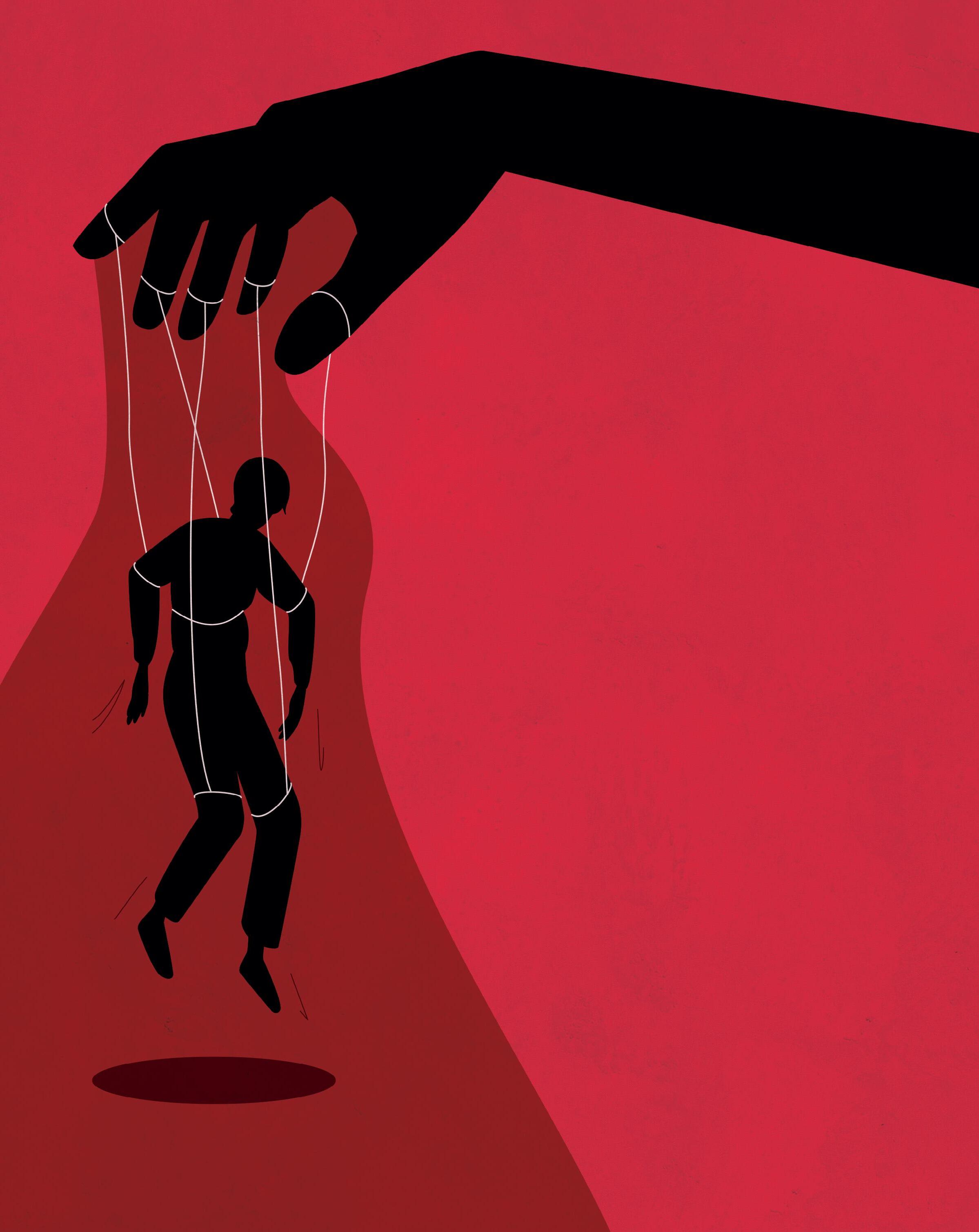
To download BS 25700, visit bit.ly/BS-25700
The British Standards Institution (BSI) has also proposed the development of an ISO standard on ‘human trafficking, forced labour [and] modern slavery’, which has been accepted by ISO and whose development will start this September with BS 25700 as an initial draft document.


can’t tackle modern slavery and there is an urgent need for the business community to adopt adequate due-diligence measures to mitigate risks. There are many organisations, particularly those operating in high-risk sectors, that are still lagging.
‘OSH professionals have a critical role to play in combating modern slavery. Many signs of modern slavery include health and safety violations such as injuries, fatigue, excessive working hours, and lack of access to PPE for workers.’
Justine Carter, director at UK anti-slavery charity Unseen (see The key legislation on page 54), adds that cultural change is crucial for organisations. She says: ‘Quite often, we’ll speak to businesses who have one or two people fully engaged on modern slavery, but it’s important to recognise this can happen anywhere, so all levels need to be engaged.
‘It happens across many different sectors. And it’s labour exploitation, sexual exploitation, criminal exploitation and domestic servitude.’
Ruth Wilkinson is an advocate of a humanrights-based approach to OSH. She says: ‘Forced labour cases can have simultaneous violations of labour law from wages, working hours and OSH. So ending modern slavery will not be possible without addressing human rights and labour rights violations, including poor OSH in global supply chains.
‘We know that workers who are vulnerable and feel intimidated will not make complaints about poor working conditions and health and safety dangers. There will be other labour violations happening simultaneously, so the approach taken needs to be multifaceted,’ she says.
‘As well as action from governments and policy-makers, we need action from OSH professionals, labour/health and safety inspectorates and businesses to tackle modern slavery. There are no excuses for employers. It is crucial they show leadership and commitment, ensure their operations do not involve modern slavery and report what they are doing to prevent it.’
An estimated 80% of global trade passes through supply chains and companies, says Dr Julie Riggs. Implementing effective supply chain management and monitoring is thus vital in eliminating slavery in the lifecycle of products.
•
• Engage with all your suppliers, inform them of your commitment to preventing modern slavery and support them in mitigating the risks within their own businesses.
•
• Introduce a supplier code of conduct, clearly outlining your standards for ethical trade and practices – in particular, how you expect suppliers to operate to avoid labour exploitation.
•
• Conduct an assessment to identify potential high risks in the supply chain, such as low or unskilled labour tasks or countries/industries with known high levels of modern slavery.
• • Monitor and audit supply chains to understand their practices and how they manage their own supply and sourcing. Incentives and collaboration can influence change, but also clearly outline actions for those unable to operate ethically.
Among the essentials for businesses is training in awareness of modern slavery and the many forms it can take, says Ruth.
It is also important to have clear policies in place, take account of laws, regulations and standards – along with monitoring supply chains and subcontracting arrangements – and have a comprehensive due diligence approach across the supply chain. ‘OSH professionals’ technical knowledge of risk management and preventing workrelated injury, coupled with skills in getting
• • Include a whistleblowing process to enable individuals to report any concerns about modern slavery.
• • Review recruitment procedures, key business decision-making guidelines or investments made by the business to ensure they do not inadvertently contribute towards modern slavery.
•
• Highlight your commitment by publishing a slavery and human trafficking statement to demonstrate the steps your business is taking to prevent modern slavery.
• • Train staff in procurement on how to spot and report signs of modern slavery inside the organisation and throughout the supply chain. Support the leadership team on how to ‘drive profit with integrity’.
• • Finally, education is important in reducing the risk within your organisation. Training your staff on modern slavery, your commitment as an organisation and what steps are being taken to reduce the potential risk will support individual commitment and reinforce the organisation’s clear message.
these messages embedded at all levels, makes them vital in how responsible businesses are seeking to stay ahead of the game,’ Ruth says.
‘At IOSH, we believe it is vital that OSH professionals are aware of modern slavery. By knowing the risks, these professionals can help ensure procurement work is conducted responsibly. Working across functions, they can play a key role in ensuring their employers comply with legislation.’
To view references for this article, visit ioshmagazine.com/modern-slavery
Enterprise teams tasked with environment, social and governance (ESG) delivery need data – from facilities management metrics and service provider bills to staff sickness statistics and, increasingly, data from environment, health and safety (EHS) software tools. All these and more can be fed into a holistic view of an organisation’s sustainability stance, and inform ESG strategies that set them on target for reaching net zero – and achieving better business performance.
While EHS software might not be suitable for every aspect of ESG delivery, its maturity and openness to adaptation can benefit OSH professionals working as part of ESG delivery programmes. The ability to track and present OSH data points for ESG disclosures is made more manageable by EHS software, explains Dr Christopher Davis, thought leadership manager at IOSH.
‘In an ideal world, the reporting requirements for ESG compliance should reflect the sorts of information that OSH professionals are already
capturing,’ says Christopher. ‘A lack of maturity when it comes to data gathering, analysis and evaluation may create additional work for a period of time. Advancements in data management are likely to have outpaced the advances in some practitioners’ data literacy.’
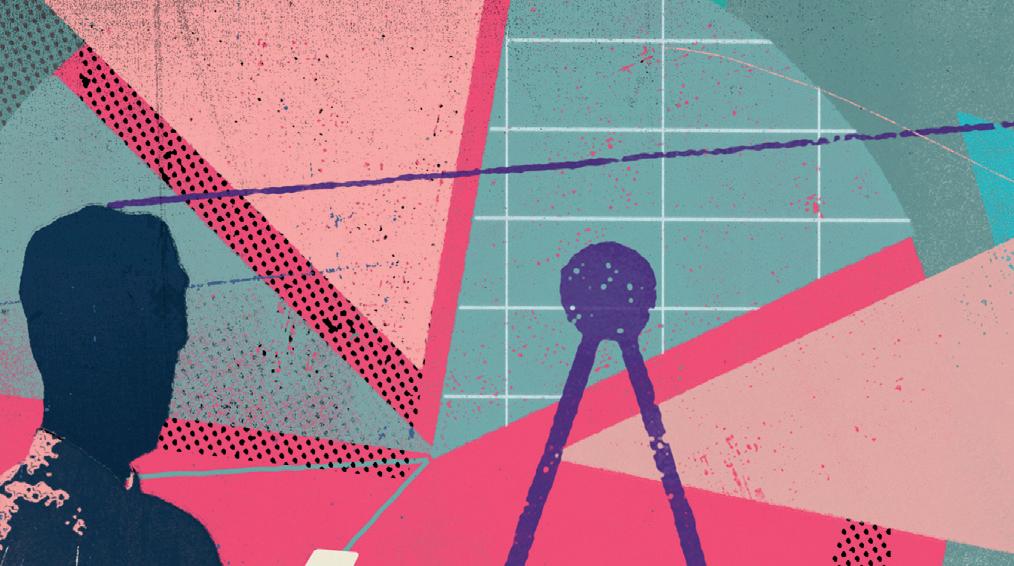
He adds: ‘Intuitive EHS software might begin to remedy this and free up practitioners to focus more on the aspects that software won’t be able to do – namely, to add a layer of insight and to make decisions based on data itself.’
At the same time, OSH teams’ role in ESG delivery must be balanced against any possibility that their core role – of keeping workers safe and healthy – is not compromised by additional demands on their expertise.
‘There’s no doubt that an additional ask is being placed on OSH professionals because of ESG,’ says Christopher Sayers, industry analyst at Verdantix, an independent research and advisory firm. ‘OSH professionals should seek to realise time savings and efficiencies wherever possible, and the use of leading-edge EHS software, combined with process optimisation, is a way to support that.’
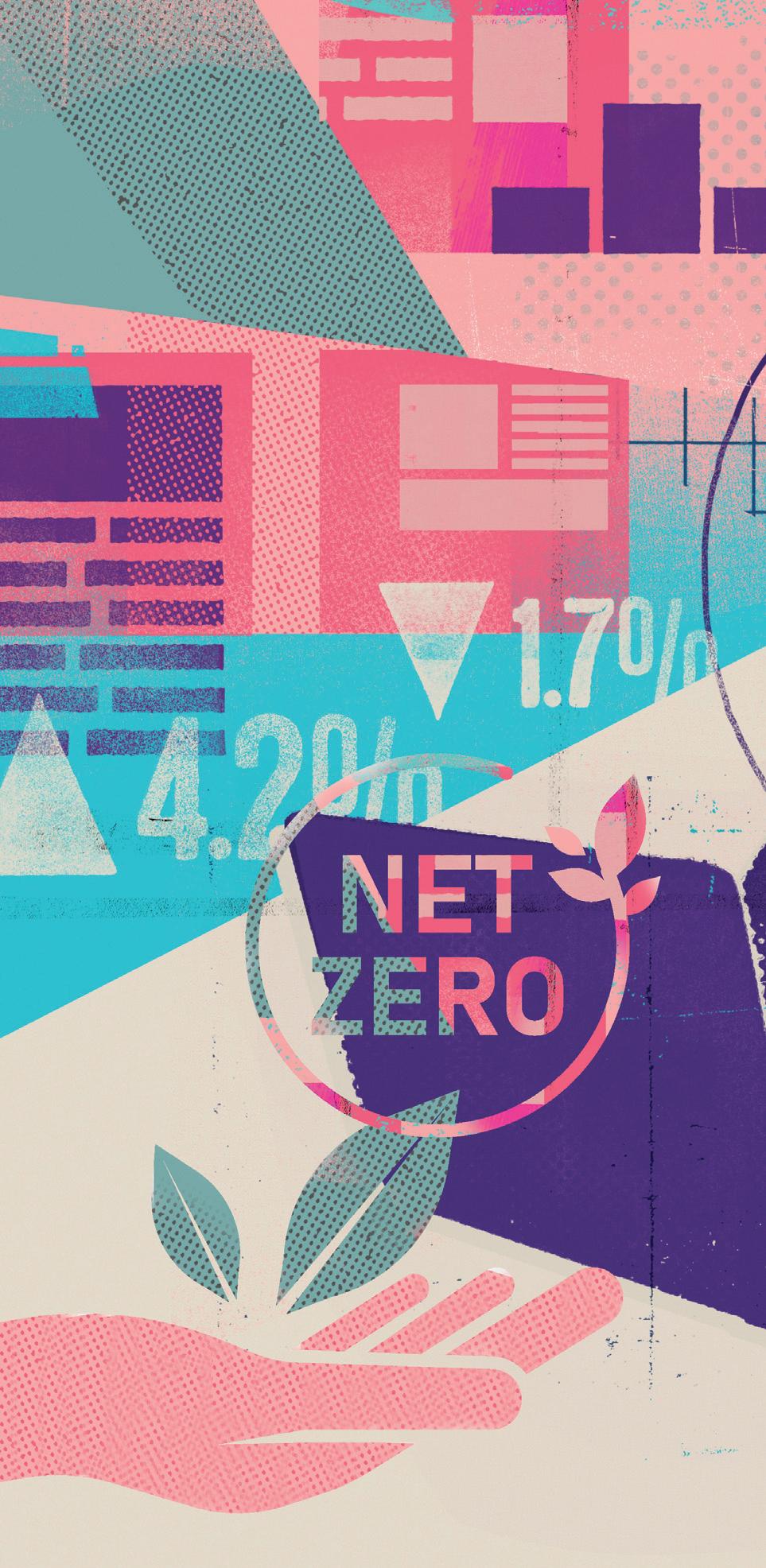
As they get under way on their journey toward standardised sustainability, organisations are discovering that getting it right requires making fundamental changes not only to their operations, but to their entire business model. Because they are already engaged in many aspects of ESG reporting OSH professionals will be in the forefront of effecting these changes, including seeing their own roles and responsibilities shaped by them.
ESG-related regulations are categorised as frameworks and standards for ESGrelated actions, disclosures or reporting, and can be industry- or vertical sectorspecific. In general, they are designed to support the delivery of ESG benchmarks, rather than constitute ‘ESG regulation’.
The Sustainability Accounting
EHS software tools can help deliver the data ESG benchmarks need to enable businesses to meet their ever-challenging net-zero objectives.
Standards Board (SASB) distinguishes ESG frameworks from standards: ‘Frameworks provide principlesbased guidance on how information is structured, how it is prepared and what broad topics are covered. Standards provide specific, detailed and replicable requirements for what should be reported for each topic, including metrics. Standards make frameworks actionable, ensuring comparable, consistent and reliable disclosure. Frameworks and standards are complementary and are designed to be used together’ (SASB, 2023).
In their essentials, ESG frameworks and standards aim to embody baseline targets, rather than regulations that must be legally complied

with. Meanwhile, ESG-related regulations that should be complied with are appearing at pace, often focused on corporate sustainability reporting requirements.
Maintaining compliance with regular updates and revisions is an administrative overhead companies will have to fund and manage.
A tenet of ESG best practice is for larger organisations to encourage and support ESG commitment within their smaller supply chain partners, many of which struggle to keep ESG in focus in the face of other market pressures (Iwoca, 2023). A B2B partner shown to be neglectful toward its ESG or

net-zero obligations could result in potential disrepute within its business ecosystem.
Changing business operations and procedures to align with ESG principles can also prove disruptive to internal management, staff structures and revenue targets. Challenged executive leaders will have to find ways to deal with limited support from workforce factions unmoved by the argument that, ultimately, good ESG adoption leads to better business performance.
IT and consulting services company Accenture’s Accelerating global companies toward net zero by 2050 report (Ollagnier, 2023) suggests that net zero will require ‘carbon intelligence’ capabilities enabling organisations to control, improve and drive value-creation by embedding carbon and broader ESG intelligence into core businesses and across value chains.
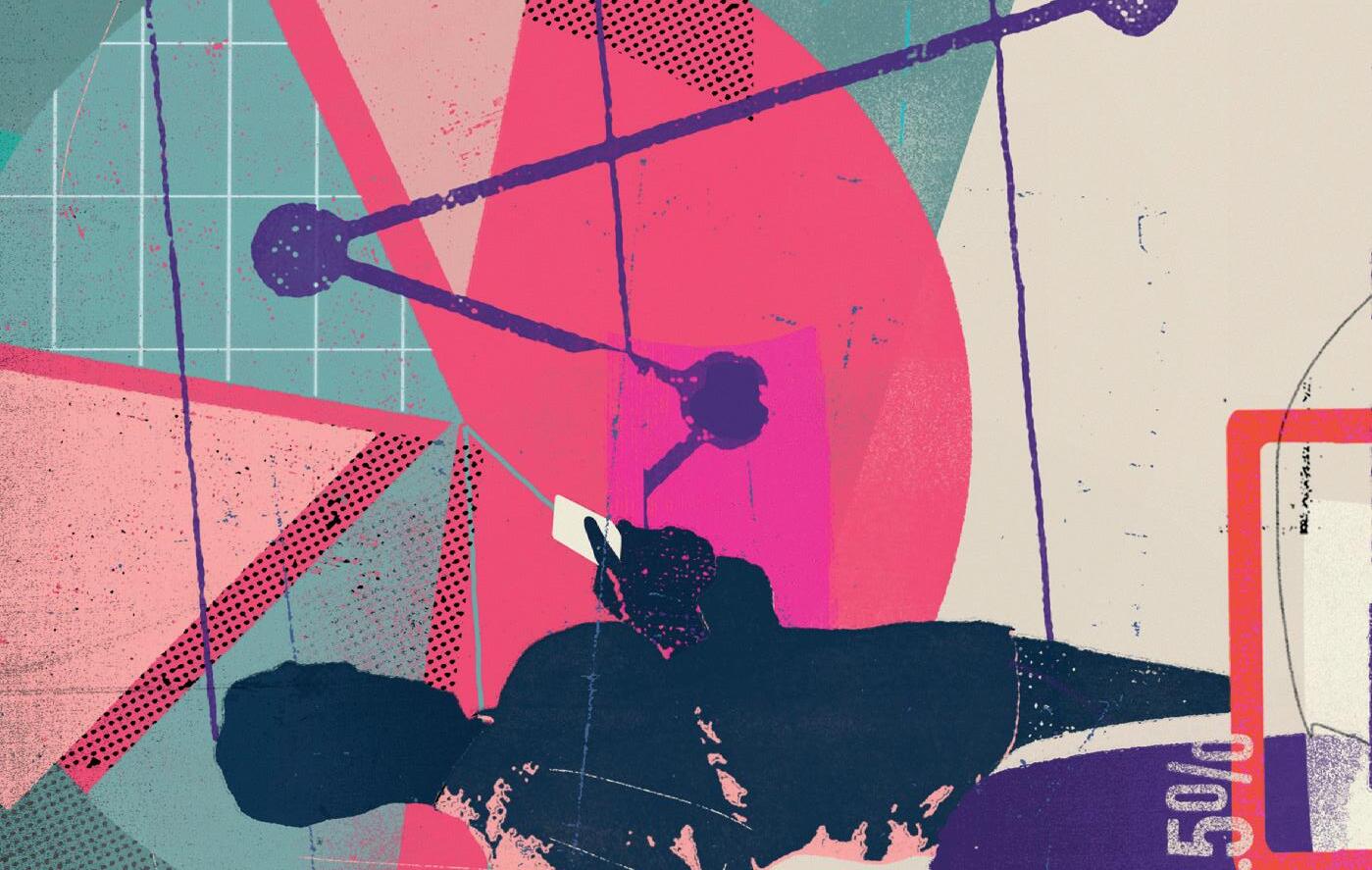
Enterprise stakeholders want clear, objective and quantifiable ESG metrics that will inform reporting of progress (or otherwise) towards meeting sustainability targets. ESG reports can be integrated into risk management practices and create a materiality assessment to identify and measure risks using ESG frameworks.
With EHS software, OSH professionals can now capture and analyse data related to environmental performance by connecting
systems across an enterprise in ways previously unavailable to them. They can also track mitigation efforts to assure efficiency.
So because EHS in the context of OSH has been described as a subset of ESG, the OSH professional will play a strategic –and increasingly critical – role in meeting ESG and net-zero targets (McLean, 2023). However, despite their experience and knowledge, OSH teams face some estimable challenges if they are to utilise EHS platforms as they assume a strategic delivery role for
that show continuous improvement throughout workflow systems.’
One operational complication is that standard EHS disciplines will have more traction with some ESG pillars than others.
‘EHS teams will have considerable work across the spectrum of ESG,’ says Scott. ‘Many organisations are primarily focused on the Environmental pillar, gathering data from areas like emissions, energy consumption, resource use and waste management. We’re also seeing a bigger focus in the S – Social – pillar, as organisations report against employee loss metrics, significant incidents and compliance.’
ESG initiatives, according to Scott Gaddis, VP, global practice leader, safety and health, at Intelex Technologies, a software solutions company.
‘The foremost challenge for OSH to embrace is that ESG is more than data collection,’ explains Scott. ‘The challenge for OSH practitioners is to ensure that we have set up a good management framework, and have aligned that with supporting objectives
Scott adds: ‘That said, areas like risk and emergency planning, culture, resource allocation and programme transparency, all fall under the G – Governance – pillar and touch EHS – so it’s safe to say EHS will need to prioritise its efforts, but also be aware that it’s a part of every pillar, and thus important to overall ESG success.’
So to what extent can EHS solutions bring further continuity and clarity – and better (if not best) practice – to meeting ESG objectives?
‘There are some key points to add into the mix here,’ Christopher Davis explains. ‘First, data points of any denomination should be in some way instructive for them to be useful – they should help to lead to better decision-making. Second, if information can give assurance about OSH management to the likes of investors through ESG frameworks, the information should also be of use internally.’
With those considerations in mind, Christopher’s third point is that the process of gathering and presenting OSH data for external reporting ‘should not be seen as an additional resource requirement because – in theory, at least – the whole process also provides a valuable learning and improvement opportunity for internal stakeholders’.
For a more in-depth look at this subject and the challenges it presents, as well as the article’s references, go to ioshmagazine.com/EHS-software-tools
There’s no doubt that an additional ask is being placed on OSH professionals
Experience the future of environmental, health, and safety solutions!
Don’t miss out on this exclusive opportunity to get a free30-minutedemo of our cutting-edge EHS, ESG, ePermits, Sypol, and Chemical Manager solutions.
Learn more by following the link or Scan the QR Code
ecoonline.com/tech-fest
EHSESGePermitsSypolChemical Manager– according to a 2022 McKinsey report spanning six countries, nearly half of those who quit their job in the last two years moved sectors. But how can OSH attract the best talent, and what should those people do to get noticed?



Gary Storrie began his career in OSH after he got a phone call from Formula 1 asking him to join their team. He hasn’t looked back. ‘I love what I do. I get to be part of one of the world’s greatest sporting spectacles, while helping to change the safety culture so people can go home safely to their families.’
The OSH sector’s diversity of roles and opportunities for personal development make it an attractive proposition for anyone looking for a new challenge. And it’s growing. The UK’s OSH workforce is projected to increase by 5%, with 2800 new jobs being created by 2027 (National Careers Service, 2023). So how can the industry attract fresh talent, and what skills are recruiters looking for?
For Gary – who spent six years in events operations working on global sporting and cultural events – moving into OSH felt like the natural next step.
I wanted to broaden my horizons and knowledge. That’s when the penny dropped, and I moved into the OSH sector.’
‘I realised there was a lack of safety professionals in the events industry,’ he says.

‘As an events manager, you value the knowledge and expertise of those who step in to deliver the event safely. I didn’t want to be restricted as an event manager;
A previous employer put Gary through the IOSH Managing Safely course, before he self-funded his NEBOSH general certificate. He was working towards an OHS vocational qualification when he was offered his first role at Formula 1. Now a global health and safety manager for race and events, he said that while it’s been a learning curve, his experience working in the events industry prepared him well. ‘It’s a unique industry with strict time pressures, immovable deadlines and unprecedented challenges,’ he said. ‘So when you’re faced with logistical challenges
There’s no shortage of people looking to change careers
THE OSH WORKFORCE IS PROJECTED TO INCREASE BY 5% IN THE UK

you have to apply that problem-solving mentality to find risk-based, pragmatic solutions. My time as an events manager helped me understand all parties’ interests.’
Traditionally, the OSH sector has attracted those working in high-risk and heavy industries, such as the armed forces, construction and oil and gas. But Charlotte Langley, education account coordinator for IOSH, says this is starting to change. ‘As mental health and wellbeing become more fundamental to OSH roles, we’re increasingly seeing people come from people-focused industries such as HR, customer service, even retail or education.
‘A lot of people join us who have had OSH as part of their role and really enjoyed those aspects of their job. Sometimes, they have experienced or witnessed an accident at work and want to make a difference.’
But George Wilson, associate director at recruitment specialists Principal People, says more needs to be done to support those new to the profession. ‘People often fall into OSH because they have the technical skills, they’re given that exposure and the opportunities are more available to them. But it’s much harder for people coming from outside the sector to get that leg up.’
George helped one of his candidates swap his job in household insurance for a career in OSH after recognising his commitment to breaking into the industry (see Case study on opposite page). But he said not everyone is prepared to hire someone with little handson experience.
‘Often hiring managers will say they don’t have time to develop people, but the benefits of hiring a trainee are huge. You’re building a relationship with commitment and longevity. The average safety adviser might stay in a job for around two years and then move on, but if you invest in someone’s development, they’re much more likely to stay longer.’
Another way professionals can help those hoping to embark on a career in
Gary: ‘I did a lot of networking – don’t be afraid to put yourself out there. Get on the right IOSH forums, go to webinars, reach out to people at events – it’s a small industry so the better connected you are, the more opportunities will arise.’
‘We wanted to do something for our community and give back to the OSH profession,’ he said. ‘We have worked with the Azerbaijan State Oil and Industry University to promote the OSH profession by providing mentoring for students and developing training for their teacher team on OSH best practice.
‘By doing this we can help to promote the OSH profession among the younger generation. It’s a really good profession – you care about people and help them to stay safe, which is good for organisations and their reputation.’
2
Ryan: ‘Go above and beyond to get the experience and qualifications you need to stand out from the crowd and show that you’re taking the industry and your career change seriously.’
3
Anar: ‘Start by getting qualified or become a mentee to learn about the profession from experienced OSH professionals. I recommend using the IOSH competency framework and CPD selfassessment to help you discover your strong and weak areas and refine the skills you need to improve.’
OSH is through mentoring programmes and outreach. Anar Malikov, director at TCS, a technical training and inspection organisation for the oil and gas industry, has been doing just that through his organisation RMP (Risk Management Professionals). The non-profit, based in Azerbaijan, is devoted to developing and promoting health, safety, environment and quality in the region.
Anar was working as a translator in 1996 when he realised he was better suited to a career in OSH. ‘I was asked to do a part-time safety role and it made me think I could do more than translate, where there wasn’t much room for progression,’ he explains. ‘I felt I could add more value to the business and my personal career by doing health and safety.’
While technical know-how was once considered the holy grail for any OSH professional, Anar said soft skills are becoming just as important. ‘Around 80% of incidents are due to human error [EUOSHA, 2022]. That means that as OSH professionals we have to work with people.
‘We must be able to communicate well, be problem-solvers and have good listening and investigating skills to understand why failures are happening. We need good observation and organisational skills and we should be able to build relationships.’
These skills, together with a relevant IOSH-accredited qualification or degree, are a great way into the sector. ‘There are many different routes into the profession depending on your country and industry,’ said Charlotte. ‘For career-changers, we advise learning about the regulatory framework for OSH in your country and attending IOSH branch meetings, which are open to non-members.’
Ryan O’Donnell’s transferable skills and commitment to personal development successfully landed him his first role in OSH. We find out what made him stand out from the crowd.
THE CANDIDATE
Ryan O’Donnell, health, safety and environment assistant at Wales-based Carter Lauren Construction
‘My dad was in health and safety; I saw the variation and opportunities he had over the years. I was quite comfortable working in household insurance for Admiral but becoming a father gave me that drive to excel myself and change career.

‘I did the NEBOSH general certificate and diploma, and had the opportunity to do some shadowing at the engineering company Bouygues. This brought everything I’d learned in the classroom to life – going on-site and seeing how everything was applied practically was eyeopening.
‘That experience and the skills I’d gained during my time at Admiral definitely helped me get the job at Carter Lauren. It’s so important to have support when you’re changing careers and my manager has been a great mentor since I joined. I love going
She said IOSH was also working hard to attract new talent through its active volunteer base of Future Leaders, whose presentations and stories about their diverse OSH roles are helping to change the perception of what it means to work in OSH.
‘We want to position health and safety as a desirable profession to both people entering the labour market for the first time and those who are changing careers,’ said Charlotte. ‘And diversity is key if we’re going to have a representative profession to meet the needs of everyone at work.
‘We’re working to improve how OSH is pitched on career websites by developing







to work and feel like I’m making a difference every day.’


HIRING
Alun David, senior health and safety manager at Carter Lauren Construction
‘We were initially looking to fill a role vacated by one of our environmental and sustainability managers, who had been with us for 10 years but left to return home to Australia. It was proving challenging to find someone with the same training and experience. So when we saw Ryan’s CV, we decided to give him an opportunity.
‘He had so many transferable skills; he had a good manner and years of experience dealing with






IOSH member case studies and updating job profiles to reflect the sector today.’


Gary agreed that removing misconceptions about OSH was key to attracting talent: ‘People still have a negative view of OSH and it’s time to change that. The diversity of this sector is huge and we’re revolutionising the way we do things to make people safer. But we as OSH professionals need to shout louder about what we do.’
To view references for this article, visit ioshmagazine.com/career-change
people, engaging with employees and stakeholders, and the ability to be analytical and solve problems. These are all important qualities when you’re working in OSH.
‘The fact he had shown real commitment to joining the industry by volunteering with a construction company and he had self-funded his NEBOSH diploma proved to us he was serious about a career in OSH.
‘While there are lots of people with more experience than Ryan, it was great to find someone who can grow into the role, and who we can mould into the professional we need in our team.’
Qualification guide: iosh.com/news/ which-osh-qualification-should-i-get
Future Leaders interviews: bit.ly/Future-Leaders-interviews
Future Leaders stories: bit.ly/Future-Leaders-case-studies
IOSH competency framework: iosh.com/my-iosh/ competency-framework
Havsco developed the first personal Hand Arm Vibration dosimeter, which measures and records the actual vibration exposure at the point where the vibrations enter the hand, when using power tools. No reliance on inconsistent data, irrespective of which tools are used, how they are used or what they are used for, the HAVSense dosimeter measures real exposure with no programming or changing data when swapping between tools. No guesswork, calculations or time recording, just simple HAV exposure measurements.


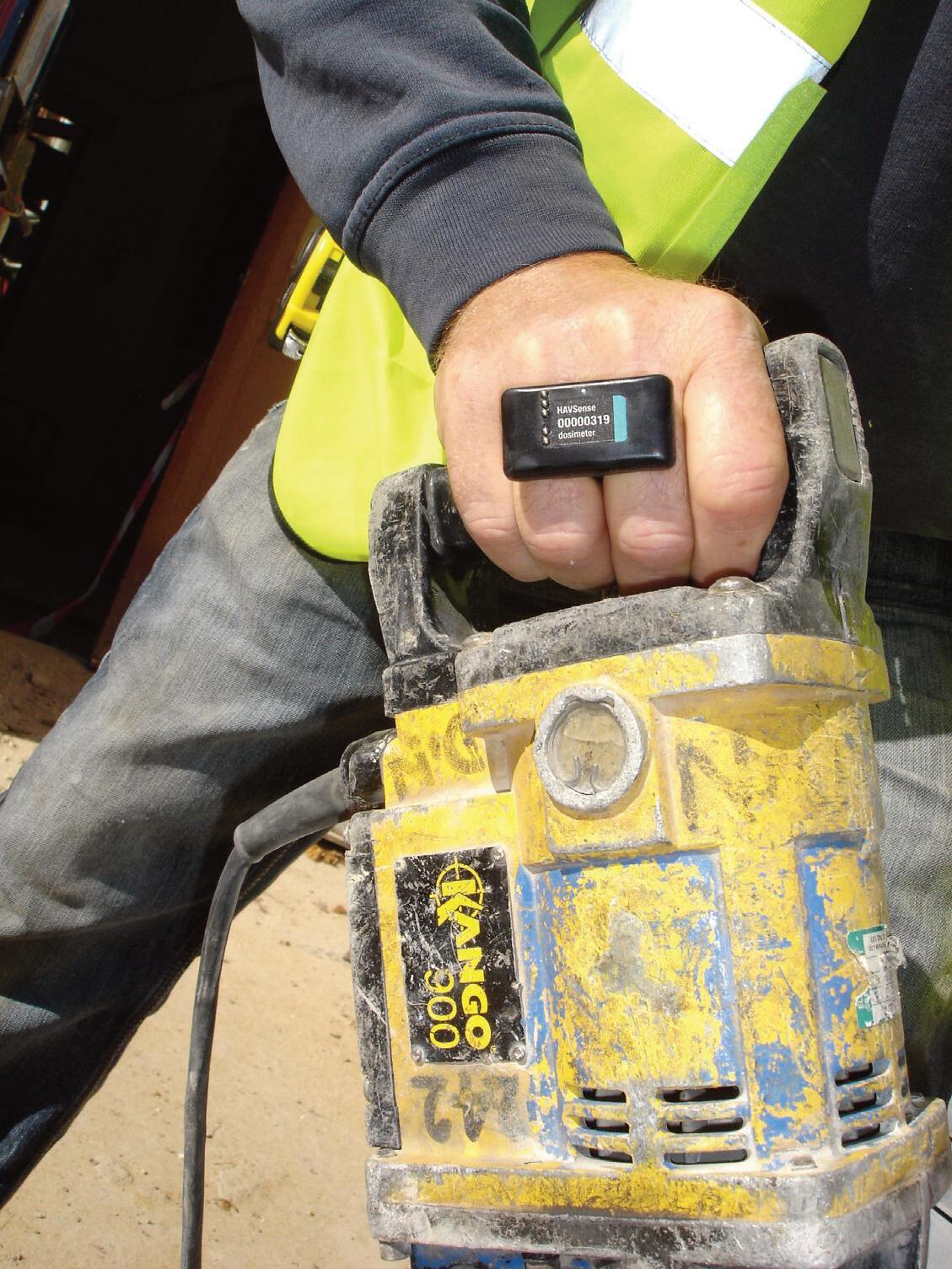
Measure personal exposure from tools, tasks, processes or even products, empowering you with real exposure data entirely to suit your operations and requirements.



Contact us for a free, no obligation demonstration at your location.

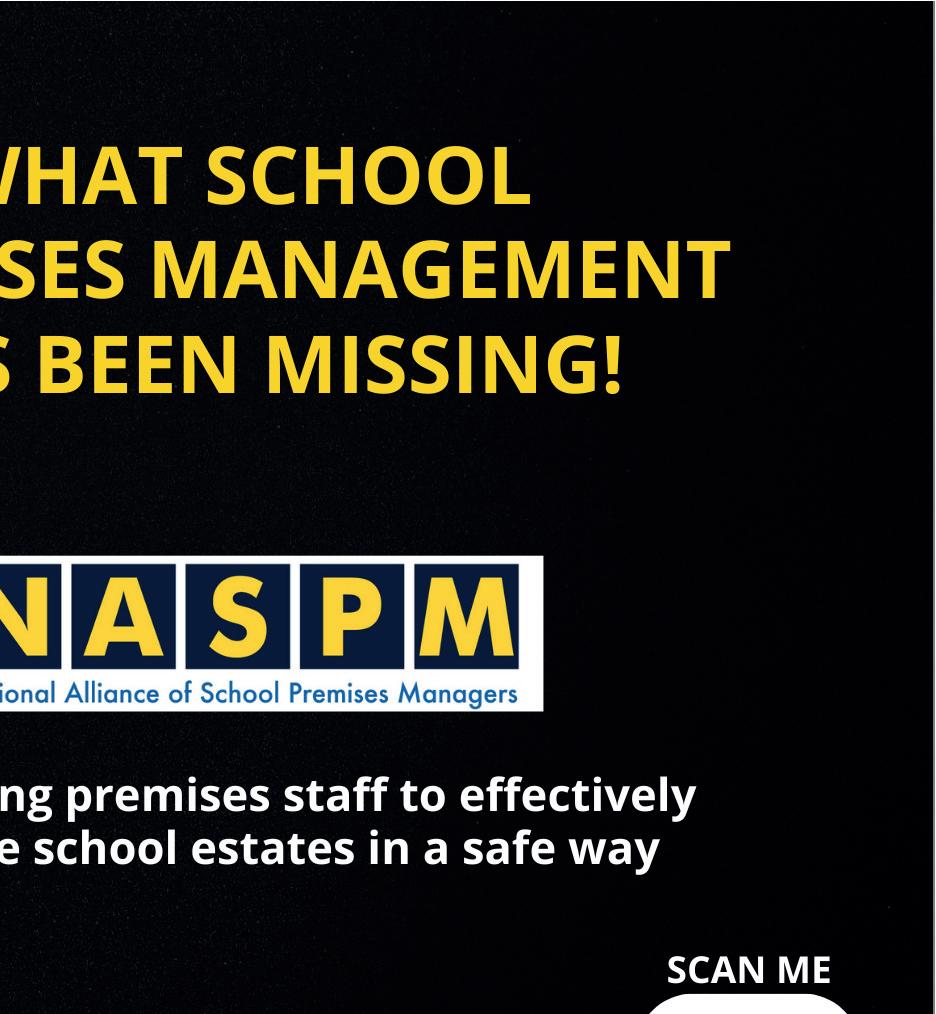

Prevents accidents and ill health
Improves regulatory compliance

Cuts compliance costs
Enhances reputation with stakeholders
Encourages continuous improvement.
One of the key tools for driving continuous improvement in a business or organisation is benchmarking. It’s a proven way to keep in touch with developing trends, for companies to look at and compare one another’s performance, and to adapt and enhance best practice.
Benchmarking also has a vital role to play in the world of OSH. The definition of benchmarking by the European Agency for Safety and Health at Work (EU-OSHA) encapsulates not just the activity but also its potential benefits, describing it as ‘a planned process by which an organisation compares its health and safety processes and performance with others to learn how to reduce accidents and ill health, improve compliance with health and safety law and/ or cut compliance costs’.
Folded into this definition are several different types of benchmarking that are used within OSH: process benchmarking, where working methods and practices are compared; performance benchmarking, where major outcome indicators are compared; strategic benchmarking, where organisational goals and decisions are compared; internal benchmarking, where one part of an organisation is compared with another; and international benchmarking, which extends the process to a regional or international level.
ISO 45001, which sets the international standard for OSH, also offers guidance on
Though benchmarking is not a new idea, its ability to identify and drive further improvement across health and safety is becoming more apparent.
WORDS JOHN WINDELL
benchmarking and how it can help not only with compliance but also foster continuous improvement.
That’s not to suggest that benchmarking is some sort of panacea. As the landmark EUOSHA Review of successful occupational safety and health benchmarking initiatives points out, any benchmark scheme needs careful planning, as anything that puts too much demand on time or resources, relies on collecting huge amounts of data, or doesn’t create clear opportunities for collaboration and discussion risks yielding little in the way of useful information (EU-OSHA, 2015).
Dr Dietmar Elsler, senior research project manager at EU-OSHA, says that it is vital to establish a system that provides careful and meaningful comparisons. ‘Looking at accident rates, for example, indicators may vary between organisations or countries, so it can sometimes seem like comparing apples and oranges. Also, some results can be sensitive, and nobody wants to look bad –especially when comparing organisations. It’s good to have trust between the parties and not a sense of competition.
‘The aim is to develop a mutual learning process so that everybody involved learns from the experiences and procedures of the others in order to achieve the ultimate goal of better health and safety management.’
And while securing an improved working environment is the main driver, the positive results of a benchmarking exercise can spread wider, meaning that other motivations may also come into play. ‘Better safety can also lead to increased productivity and competitiveness,’ says Dietmar, ‘and that can boost motivation and reputation.’
For Angela Gray, technical lead at IOSH, benchmarking is a critical tool for avoiding complacency. ‘When you work
1
What part of your operation would benefit?
Use data, risk assessments and employee experience to identify high-risk areas that need improving, such as certain work practices or hazardous tasks.
2
What is the current level of performance?
Assess it against regulatory standards to see where it falls short. Draw on health and safety statistics, and use audits and surveys to help measure the current situation.
3 Who are suitable partners?
Large organisations may opt for internal partners, but smaller operations would need external collaborators. Organisations such as trade associations can help you find the right fit.
4 How will it work?
Good planning is vital, as is exchanging the most relevant information. Focus on working collaboratively, securing meaningful insights and ensuring everybody gets to benefit. Always maintain confidentiality.
5
What action will result?
The goal is to learn and improve, so ensure you absorb any insights into operations. Concentrate on solid measures, such as better processes, procedures or enhanced culture. Aim for meaningful and lasting improvement.
in an organisation, there’s a temptation to be insular and focus on your own journey, your own accident rates, the interventions, the systems, the progress and compliance rates, and it’s easy to slip into thinking: “We’re doing great.”’
Benchmarking offers a vital check against this kind of thinking. ‘If you can find comparators within your own sector or industry, it provides a reality check and can show you how well you’re really doing,’
Angela also agrees that effective benchmarking depends on trust between the partners. ‘I feel it’s best to be completely open, otherwise you’re not going to get the benefit of improvement,’ she says.
‘The climate and the pressure that you’re working under can be factors, but I would still avoid the temptation to cherry-pick. As an OSH professional you really want a second or third pair of eyes to support you and confirm what’s going well, and highlight any gaps.’
While working conditions have improved dramatically over the past 50 years in Europe, tools such as benchmarking will still have a key role to play in securing further improvements across the health and safety spectrum.
‘The curve for reduced accidents has levelled,’ says Dietmar. ‘So, if we want to reduce this further, we have to make additional efforts. As part of this, while not so many people are having accidents, many more are experiencing other factors, such as stress or diseases. For example, our figures suggest most people are dying from occupational cancer.’
This is perhaps one area where the benchmarking can make a big difference in the years ahead, by focusing on the wide range of environmental factors, from mental wellness to sustainability, that concern organisations, their staff and the general public, and that are so closely intertwined with more traditional notions of health and safety.


























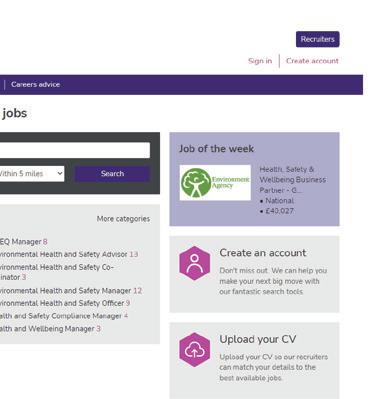

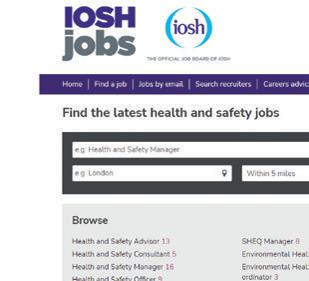
TOPIC: Cancer risk
TITLE: Estimating 10-year risk of lung and breast cancer by occupation in Switzerland
PUBLISHED BY: Frontiers in Public Health
SUMMARY: This study aimed to estimate the 10-year risk of lung and breast cancer by occupation and smoking status and to create easy-to-use, age- and sex-specific 10-year risk charts. It found the risks of developing lung and breast cancer increased with age and were the highest for current smokers. It also found that the 10-year risk of lung and breast cancer differs substantially between occupational categories. Smoking creates greater changes in 10-year risk than occupation for both sexes.
READ REPORT AT: bit.ly/FPH-cancer-risks
TOPIC: Chronic disease support
TITLE: Association between types of chronic disease and receiving workplace accommodations: a cross-sectional study of Japanese workers
PUBLISHED BY: Journal of Occupational and Environmental Medicine

SUMMARY: This study aimed to evaluate the association between chronic disease and receiving workplace support.


It found that accommodations were more likely to be provided for workers with cancer, mental illness and benign gynaecological disorders than for workers with no disease under treatment. Workplace accommodations were less likely for workers with low back pain and skin diseases. Researchers concluded that receiving workplace accommodations depends on the type of chronic disease and where it is encouraged by law.

READ REPORT AT: bit.ly/JOEM-chronic-disease
TOPIC: Smart technology
TITLE: An energy-autonomous smart shirt employing wearable sensors for users’ safety and protection in hazardous workplaces
PUBLISHED BY: Applied Sciences


SUMMARY: A smart shirt was developed to monitor working conditions in dangerous workplaces. Sensors are able to acquire the user’s vital signs and environmental parameters. The data is wirelessly sent to the cloud, where it is displayed, processed and stored. The smart shirt can scavenge energy from light, body heat and limb movements. Field tests indicated that up to 216mW mean power could be provided, fully covering the power requirement, with the 380mAh LiPo battery guaranteeing about a 16-day lifetime in the absence of energy contributions.
READ REPORT AT: bit.ly/AS-smart-tech
TOPIC: Tools for psychometric testing




TITLE: Psychometric properties of the HSE Indicator Tool: evidence from Argentina














PUBLISHED BY: Occupational Medicine
SUMMARY: The factor structure, validity and reliability of the GB Health and Safety Executive’s Management Standards Indicator Tool (MSIT) was tested on Argentinian workers, who completed an anonymous questionnaire to measure job satisfaction, workplace resilience and perceived mental and physical health. The questionnaire included the Argentine MSIT, with confirmatory factor analysis used to determine its factor structure. Researchers concluded that the Argentinian version presents good psychometric properties for use among employees in the region, although further research is required.
READ REPORT AT: bit.ly/ OM-psychometric-testing




Read about the latest research and reports relevant to OSH professionals.

Motorcyclists have the highest fatality rate per billion passenger miles of all road users in Great Britain, while people who work on motorcycles are at far greater risk of injury compared to other motorcyclists. Many hot meal delivery services are provided by people using motorcycles – whether via an app or by being employed by a restaurant. There is a need to understand whether the business model under which riders work influences their experience of risk or whether this is just related to the risk of delivering food by motorbike itself.
The aim of this study was to compare road injury risks experienced by people who deliver food on motorcycles in relation to the business model in which they work and identify solutions for managing their safety.
Interviews were conducted with six gig riders and 14 employed riders, and an online survey was completed by 164 riders working via apps and 155 employed by restaurants.
Gig workers were significantly more likely to agree that their phone was a distraction, that they violated traffic laws related to speeding and red light running and, unsurprisingly, that they had more points on their licence compared to employed riders. Gig workers were more likely to report being involved in collisions where their vehicle was damaged and where someone was injured. Citing other research, the authors note that males under 30 were the key demographic group in delivery rider injuries and the most common risk factors were lack of riding experience, pressure of work and insufficient protective equipment. In their own previous study, the authors found
We take a look at two recent papers to see how their findings can inform OSH.
that safety management was virtually non-existent and that the gig business model created a work environment that was highly pressured and distracting, and had incentivised people to drive when the conditions were wet and icy. There was no regulation of driving hours, and many riders and drivers reported severe fatigue as a result. Online survey results revealed that many gig workers agreed that they committed traffic offences to get the jobs done quickly and earn more.
More needs to be done to make gig companies embed practices that do not increase risks for delivery riders. Several recommendations were suggested – both by riders and the study authors – including only allocating and accepting jobs when the rider is parked, monthly training in safe riding and better safety equipment provided by app companies. The authors also state that hours riding for work should be monitored and regulated in line with passenger-carrying vehicles. App companies should increase the pay for riders and not incentivise those on two wheels to take additional risks by paying a higher rate to ride in poor weather conditions. Instead, they could establish an acceptable drop or delivery rate that considers the time it takes to travel to the destinations within the speed limit and the time it takes to perform administrative functions. App companies should allow riders to sign up for a time block and be paid for their time, not for a drop or delivery rate, to depressurise the work.
Managers with a responsibility for safety should be appointed locally to ensure vehicles are roadworthy, with an up-to-date MOT where applicable, and are properly insured. At a minimum, there needs to be a forum to enable workers to interface with
app companies to express their views and grievances.
‘The research shows that motorcyclists delivering hot food who pick up jobs through digital platforms are more likely to be in a collision where their bike is damaged or someone is injured than those directly employed by restaurants. Freelance delivery riders are also more likely to report that time pressure leads them to speed or ride through red lights. They are also more likely to report being distracted by their phone, through which they accept jobs.
‘Digital platforms externalise all the road safety risks to the rider and pay less attention to their safety and wellbeing. When managed properly, hot food delivery work can be flexible and beneficial for riders, but those in the gig economy need better protection and more attention paid to their safety. More needs to be done to raise awareness to stakeholders including digital platform owners, riders, restaurants and the customers they serve.’ Nicola Christie, lead author and professor of transport safety in the Centre for Transport Studies, University College London
– IOSH’S TAKE:
The study illustrates the numerous challenges gig workers experience due to the nature of food delivery services and the need for managing safety risks. The recommendations of this study could help to inform company policies while more generally highlighting the need for health and safety practices within gig work. While taking the recommended suggestions into consideration, there is vast scope for OSH practitioners to develop, advise and monitor safety practices in this growing sector.
For the full report, go to bit.ly/motorcycle-food-delivery
Developing strategies to improve construction site safety management is crucial. The procedures and factors involved in predicting such a risk are quite diverse and complex, requiring manual observation and analysis. In the future, computer vision and deep learning algorithms can be used to analyse, identify and predict the hazards to be avoided, eliminated or reduced. The aim of this study was to employ computer vision and deep learning methods to create a model that can recognize construction workers, their PPE and the surrounding heavy equipment from CCTV footage.
The proposed method involved the following steps:
• Imagery data is collected to build the training and validation datasets
• You Only Look Once version 5 (YOLO-v5) algorithm is used for object detection
• The model is trained to recognise PPE and heavy equipment using their datasets
• Weather conditions information obtained from the API is used to predict the wind speed and temperature hazards
• Hazards are identified based on the status of the workers (if they are wearing the appropriate PPE
or not), the type of equipment around them and the weather conditions
• When a hazard is identified, the safety officer is notified to prevent the accident.
The dataset collected by the authors, who are members of the computer science departments at King Faisal University in Saudi Arabia and Benha University in Egypt, contained 826 images with 5241 instances of three categories – workers, safety helmets and reflective vests – while heavy equipment images were collected from publicly available datasets. In addition, self-captured images from local construction sites were collected, with 9701 cases of seven classes of the most used heavy equipment in construction sites: bulldozer, dump truck, excavator, grader, loader, mobile crane and roller. The model gave promising results for detecting workers, PPE and heavy equipment on the construction site
accurately and in real time. The model was able to detect partial objects in the images and video frames, and the inference speed of the YOLO-v5 model was considered very high compared with the other versions of YOLO in the literature. However, not all objects could be detected by the model – for example, workers behind rebars and objects far from the camera.
The project could represent the first step toward smarter and safer construction sites. Future work should include enhancements to the proposed system to improve its small object detection – this would require using more data in the training datasets. Another improvement could be to determine the safety status of workers based on the detected PPE and heavy equipment and automatically notify safety officers to prevent accidents.
Also, spatial-temporal analysis could be added to predict hazardous situations.




– IOSH’S TAKE:
By using computer vision to analyse images of construction sites, safety hazards can be detected and identified more quickly and accurately than through traditional manual inspections. This could lead to improved safety outcomes by allowing safety hazards to be addressed more promptly and effectively. However, as with any new technology, the adoption of deep learning and computer vision techniques requires careful consideration of potential risks and challenges. OSH practitioners should be aware of these technologies and consider their potential application in their safety management practices.
For the full report, go to bit.ly/identify-site-hazards

ealth and safety wasn’t an instant career choice for James O’Neill, who worked as a forklift truck driver, carpenter and engineer in his early career, but it was one that came to make sense. ‘I wanted more out of being employed: job satisfaction and someone to look up to,’ he says.
‘After completing the IOSH Working Safely course, I got a taste for OSH. I became a union rep and signed up for all the safety courses while trying to gain as much experience as I could.’
Life had always been ‘a little more complex’ for James given his type 1 diabetes, which could ‘put employers off ’. But, convinced that gaining the right qualifications would open doors, he worked hard and saved to fund his NEBOSH national general certificate.
Then a duty manager at Northampton Town football club, James eventually got the funds to embark on NEBOSH – but the final exam presented a challenge. ‘Being diabetic for so many years has affected my hands – so I had to talk my exam to a scribe.’
He passed – but the job offers didn’t arrive. After saving up once more, James passed his NEBOSH fire risk management course and, finally, an opportunity arose to gain work experience with a former employer. ‘I really enjoyed the challenge, and was offered a full-time position,’ says James. ‘Everything was going so well.’
But soon after, James discovered a huge diabetic foot ulcer. ‘I was pumped full of antibiotics and told to stay off my feet – and I had to turn down the employment offer.
‘As the ulcer wouldn’t heal, I was told I would lose a toe and my metatarsal cap. On my 40th birthday I had a small amputation – and was diagnosed with Charcot-MarieTooth, a muscle-wasting disease.’
Six months after surgery to fuse his ankle, James was rushed to hospital with sepsis.
‘I spent three months in hospital,’ he says. ‘My leg was saved, but I have to wear special callipers and walking is nearly impossible.’
James’s disability meant he couldn’t find employment – ‘even with the Equality Act’. He recalls an interview being cancelled after the company discovered he was disabled.

But, still determined, James volunteered until, in January – 14 years after becoming disabled – he found paid work as a part-time health and safety coordinator with Brandon Surveys in Northampton.
James offers his advice on finding work to others with a disability:
• ‘Never give up’ – gain as much experience as you can, even if the only way is volunteering.
• Draw upon the support of family and friends – ‘If you don’t stay positive, you’ll sink.’
• Push yourself – ‘I find exercise helps my mental health and gives me more drive.’
‘Employers need to look at the person and not the disability,’ says James. ‘It’s easy to see people with a disability as a risk. But given the chance, they’ll probably give you more than able-bodied people. You have more of a drive, because you really want to prove to them and yourself that you’re still able to do this. And you are.’
After illness and disability brought his journey into OSH to a crashing halt, James O’Neill TechIOSH is finally pursuing the career he aspired to – 14 years on. He shares his inspiring story.
The new membership grades structure will change your professional journey for the better. It will support you to build the right skills, equip you to meet the challenges of the future and reward you for your professionalism and commitment.
Progression – clearer routes towards your career goals
“I want to become Chartered as it shows you are competent, hold integrity, and are committed to being the best practitioner you can be. It demonstrates you keep up to date with CPD including ethical practice. It’s not an easy process, nor should it be, as you must demonstrate your competence and your skillset. But the reward is worth it.”
Carly Hughes GradIOSH Health & Safety Consultant at SHE Advises Ltd working towards being a Chartered Member
Focus – an emphasis on competencies to build skills and knowledge
Status – your membership grade will reflect your skills, knowledge and behaviours and will be recognised globally
Check out the changes now and what they’ll mean for you by scanning the QR code or visiting iosh.com/member-grades And look out for the letter we’ll be sending in the mail which will explain things in more detail.

“HSQE Ltd are a fantastic training provider.”
range of courses.”
“So easy to use and great to be able to do in your own time.”
“Good course content and stable online learning platform, very good customer service.”
“Course content was delivered quickly and hassle free. Took no time at all to enrol and start learning. Lesson content very informative and well presented. Also great value.”


We have an in-house team of IEMA & IOSH-approved tutors

Our courses are 100% online & can be started immediately
Our courses work on PCs, tablets & smartphones
IEMA, RoSPA, IoH & CPD approved/assured courses, 100% online.
Our customer support team are available 7 days a week
You get a free dashboard to monitor course completions
Our average customer rating is 4.8 out of 5 on reviews.co.uk